Ep. 72: Witch Hat Atelier Vol. 1 by Kamome Shirahama & MARS Vol. 1 by Fuyumi Soryo
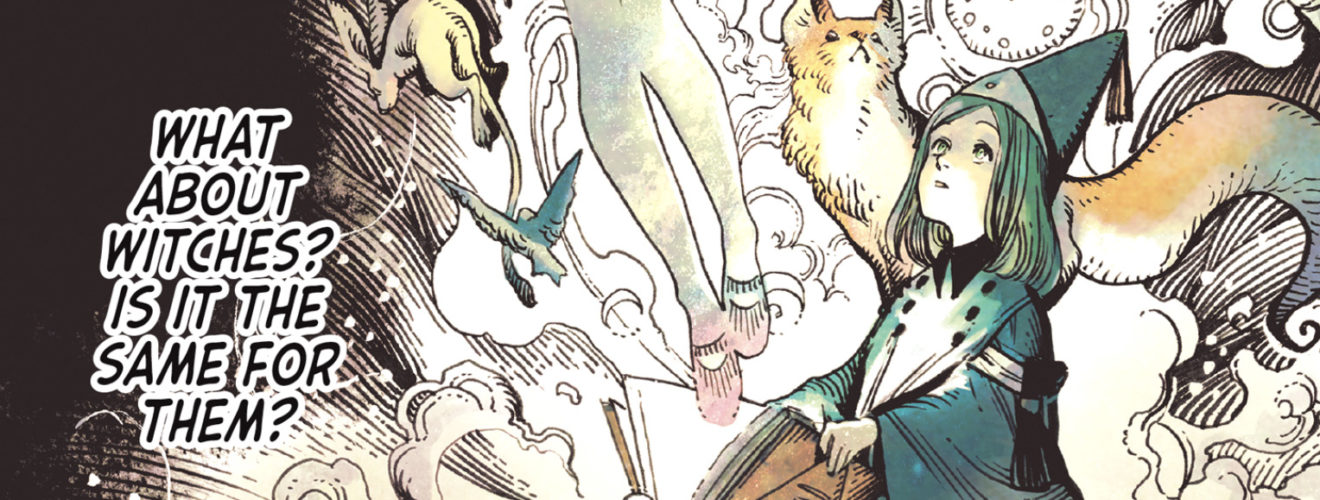
Get ready for the witchiest month of them all, AUGUST, as we begin three weeks of Very Different books about witches! We kick things off with the darling of the witchy world (and one of the bestselling manga series in North America), Kamome Shirahama’s Witch Hat Atelier! Deb hosts and says this manga is good for EVERYONE, but will Chip and the gang disagree? Find out!
Plus: In our latest Comixology Manga Must-Read segment, we tackle the classic shojo manga MARS, by Fuyumi Soryo. Will this beloved 1990s shojo manga about a troubled teen romance hit with the crew?
Powered by RedCircle
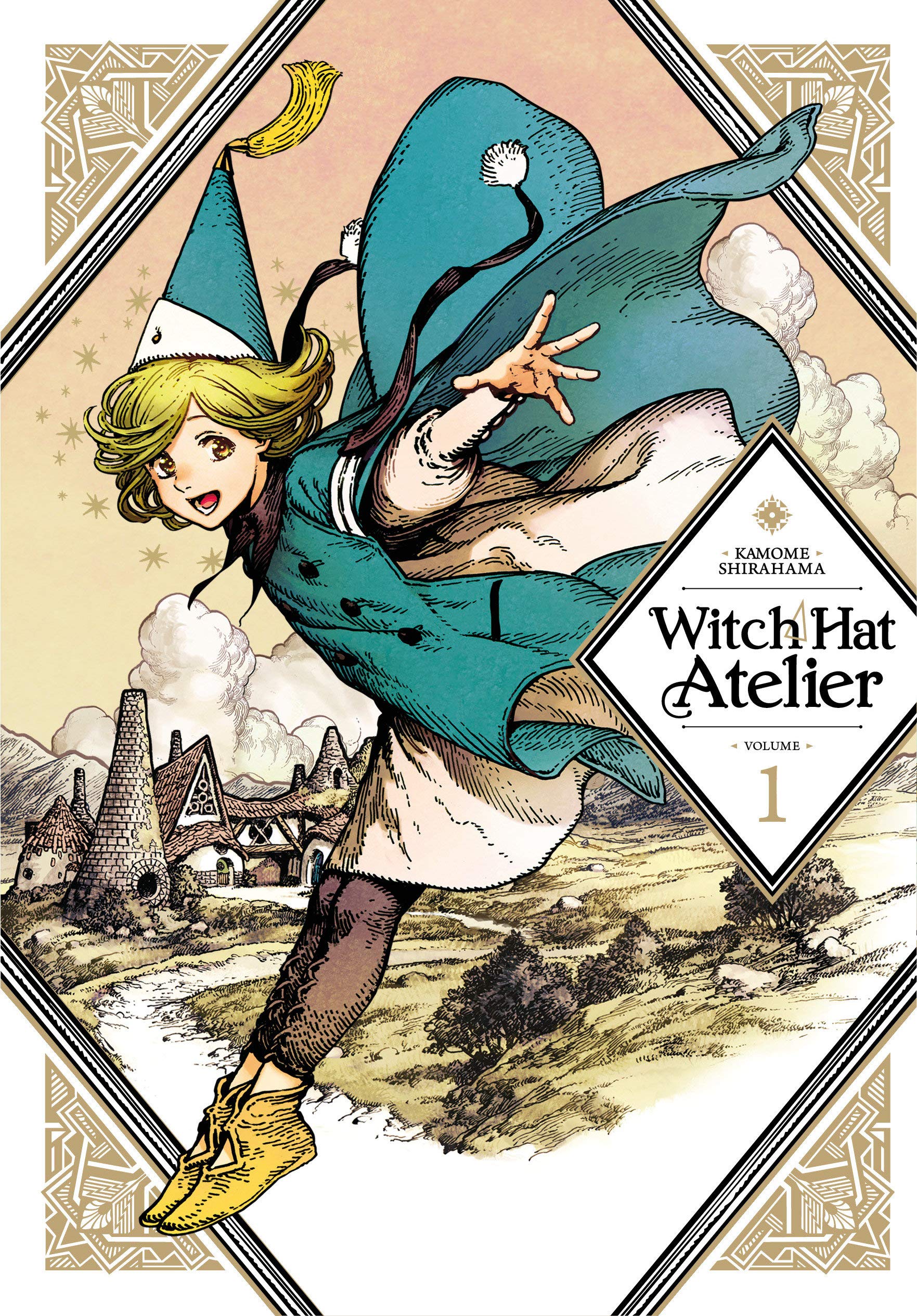
Witch Hat Atelier Volume 1
By Kamome Shirahama
Translation by Stephen Kohler
Lettering by Lys Blakeslee
Editing by Ajani Oloye
Kodansha edition cover design by Phil Balsman
Published by Kodansha (Print/Digital)
Audio editing by David Brothers. Show notes by Deb Aoki and Christopher Woodrow-Butcher
IN THIS EPISODE:
00:00 Witch Hat Atelier vol. 1
47:30 THE BREAK
48:34 ComiXology Manga Must-Read: MARS vol. 1
01:03:00 Shout-outs! Gay erotic art/manga, shows about petty crime, a manga and a game
BEFORE WE GET STARTED
Deb took the lead on show notes this week. It’s her writing unless prefaced by [Christopher:]. Thanks Deb!
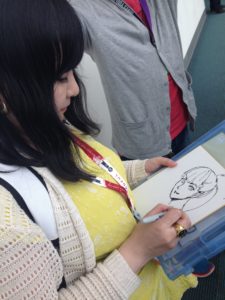
About Kamome Shirahama (Bio provided by Kodansha)
Kamome Shirahama is a freelance illustrator and manga creator. Graduate of the Department of Design at Tokyo University of the Arts. She also illustrates comic book covers for Marvel Comics and DC Comics, as well as comic books in the Star Wars franchise. Other manga work includes the 3-volume series Eniale and Dewiela, currently in-print from Yen Press.

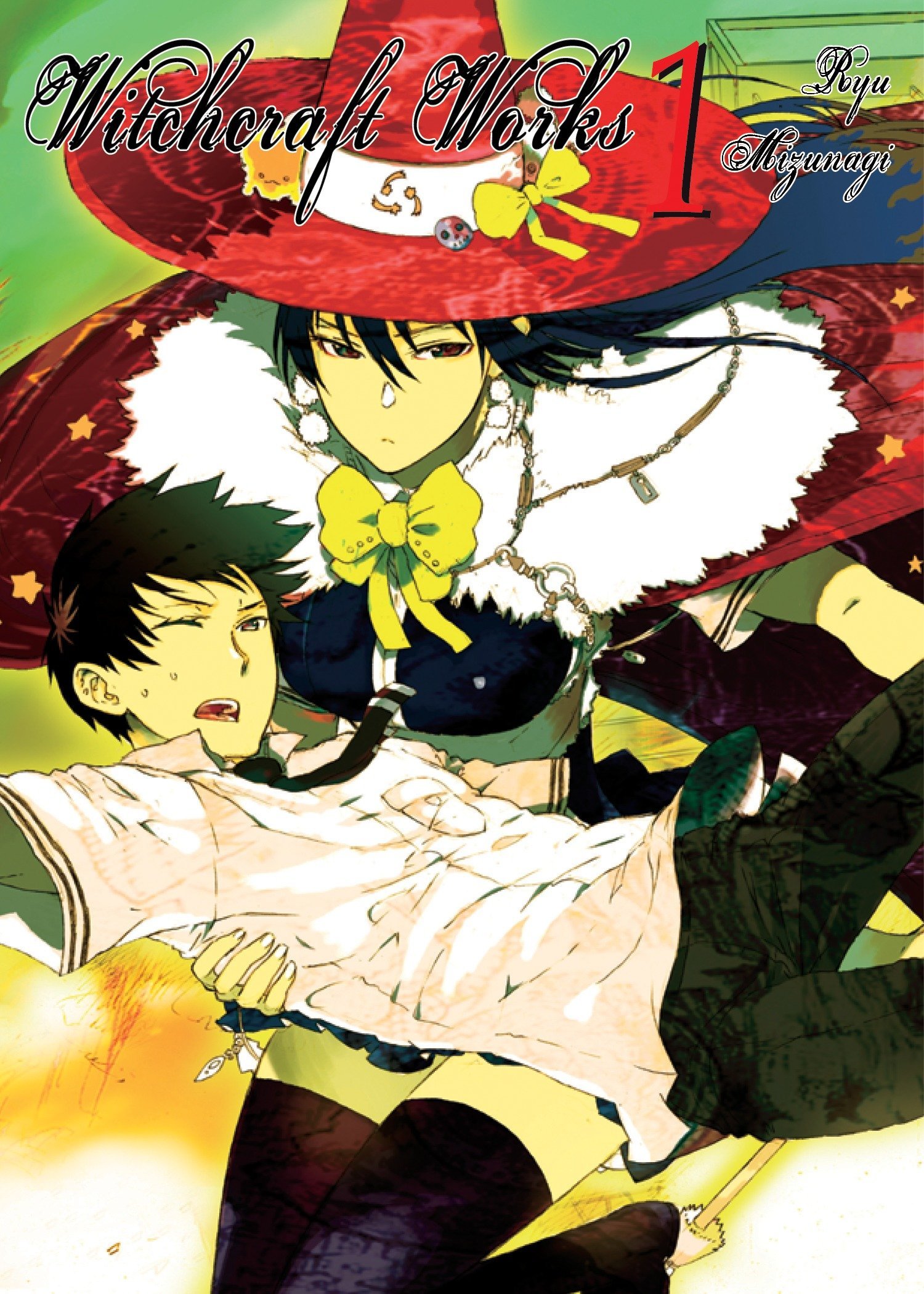
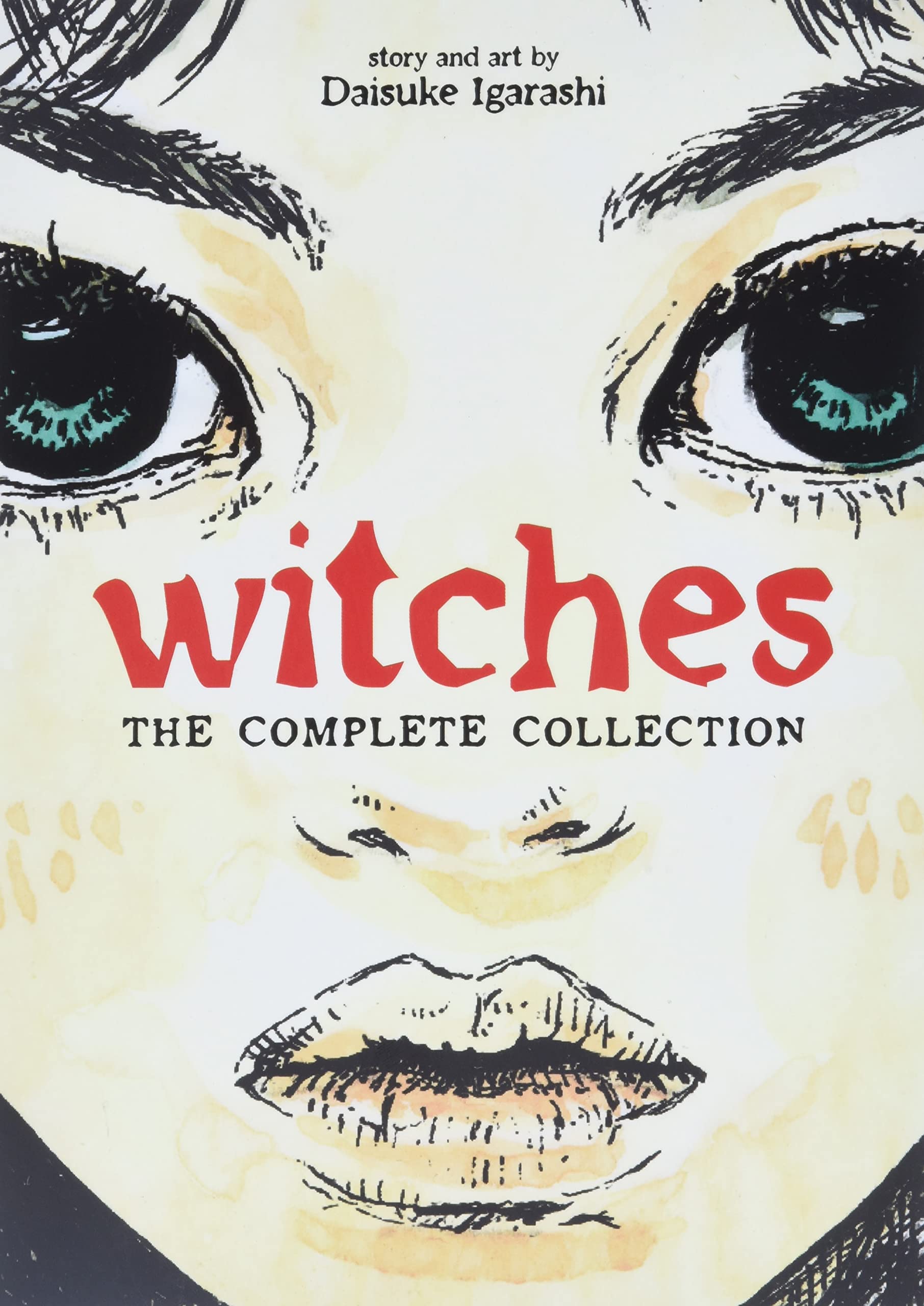
00:37 [Deb:] That’s right, we’re doing three books about witches over these next few weeks. Witch Hat Atelier, which is an tween-friendly fantasy-adventure story, Witchcraft Works by Ryu Mizunagi, which is maybe more fanservice-y, but still a fun read about a young man who finds that the cool, popular girl in his school is actually a witch, and her mission is to protect him from other supernatural forces – that’s coming next week. After that, we’ll be talking about Witches by Daisuke Igarashi, a series of short stories about witches that maybe aren’t as nice or cute all the time.
01:00 [Christopher:] Deb gets asked for recommendations all the time, I do too (hi, it’s Chris). We started the podcast mostly to give readers who are looking to get into manga some great on-ramps to start enjoying it.
02:00 Here’s how Kodansha describes Witch Hat Atelier:
In a world where everyone takes wonders like magic spells and dragons for granted, Coco is a girl with a simple dream: she wants to be a witch. But everybody knows magicians are born, not made, and Coco was not born with a gift for magic. Resigned to her un-magical life, Coco is about to give up on her dream to become a witch … until the day she meets Qifrey, a mysterious, traveling magician. After secretly seeing Qifrey perform magic in a way she’s never seen before, Coco soon learns what everybody “knows” might not be the truth, and discovers that her magical dream may not be as far away as it may seem …
-Kodansha
03:54 [Christopher:] David is right – this first volume has a lot of explanations about “how the magic works /here’s what we use it for, can’t use it for” in this world. There’s a ton of world-building in this volume, and we’ve heard it continues at this pace through the entire series. Surprisingly, in a few minutes Chip calls out the world-building as one of his favourite parts, the ‘contraptions’ or magical items. We will get to that in a second…
Debs mentions that in the world of Witch Hat Atelier, “magic isn’t cast with words, it’s drawn.”
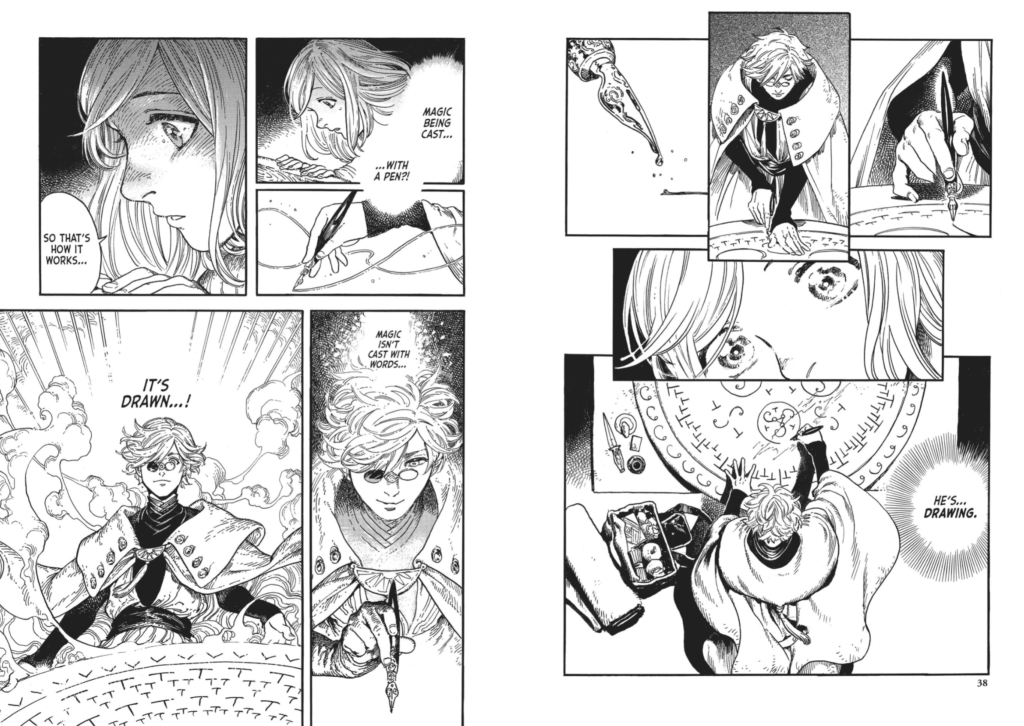
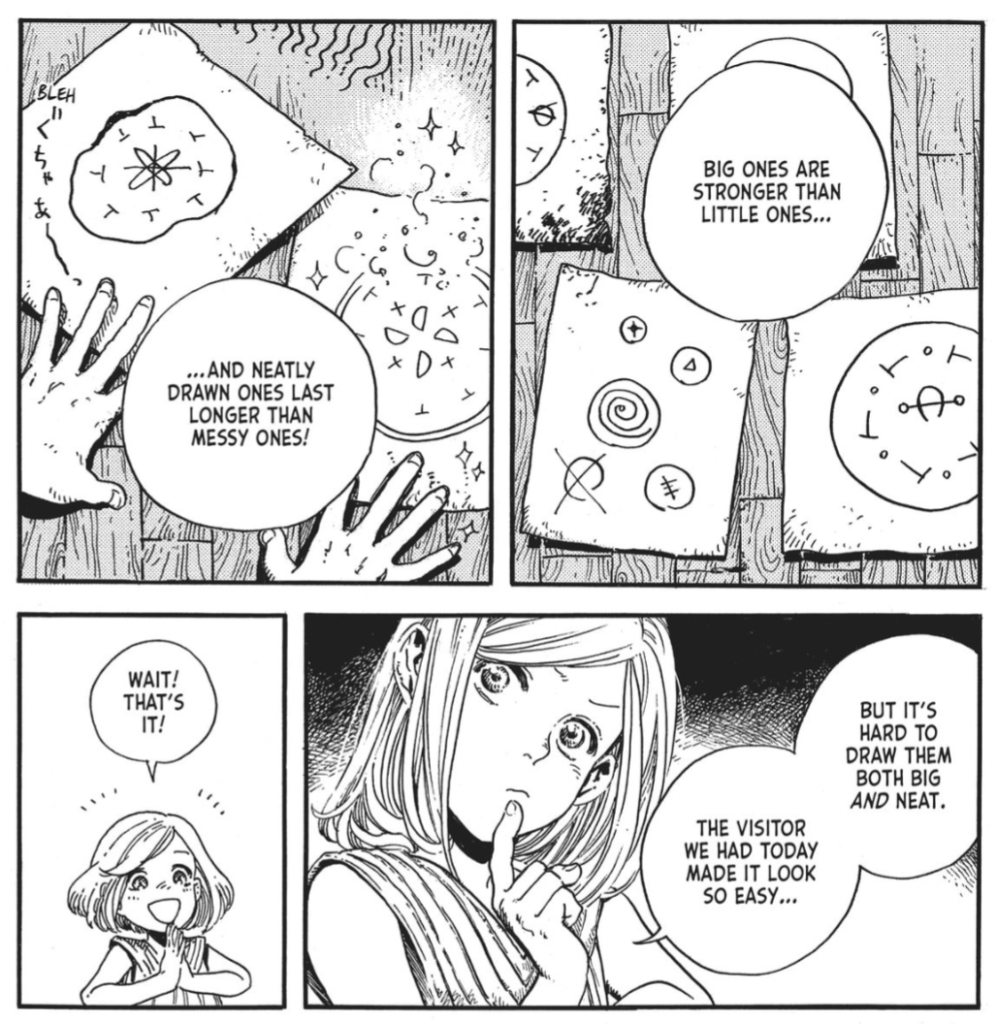
And with magic that revolves around drawing, that means that the pen and ink used matters!
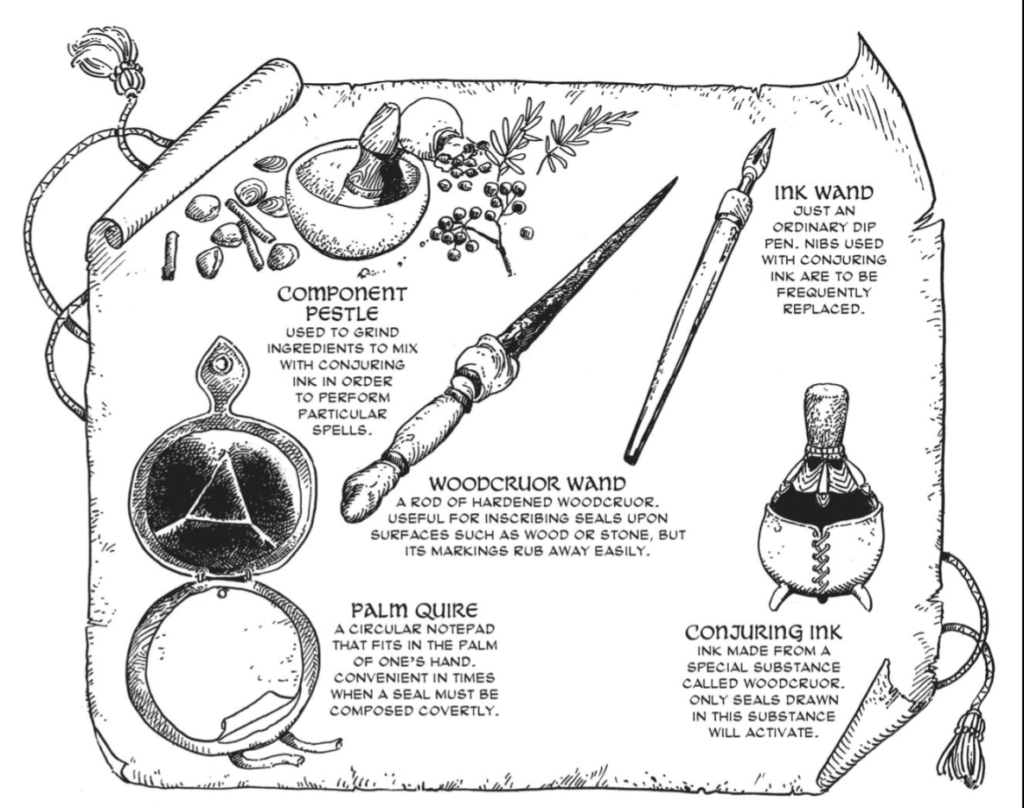
Around midway thought volume 1, there’s several explanations of the history of magic in this world, and what kind of magic is okay / not okay — for example, anything that affects people’s bodies and minds are forbidden:
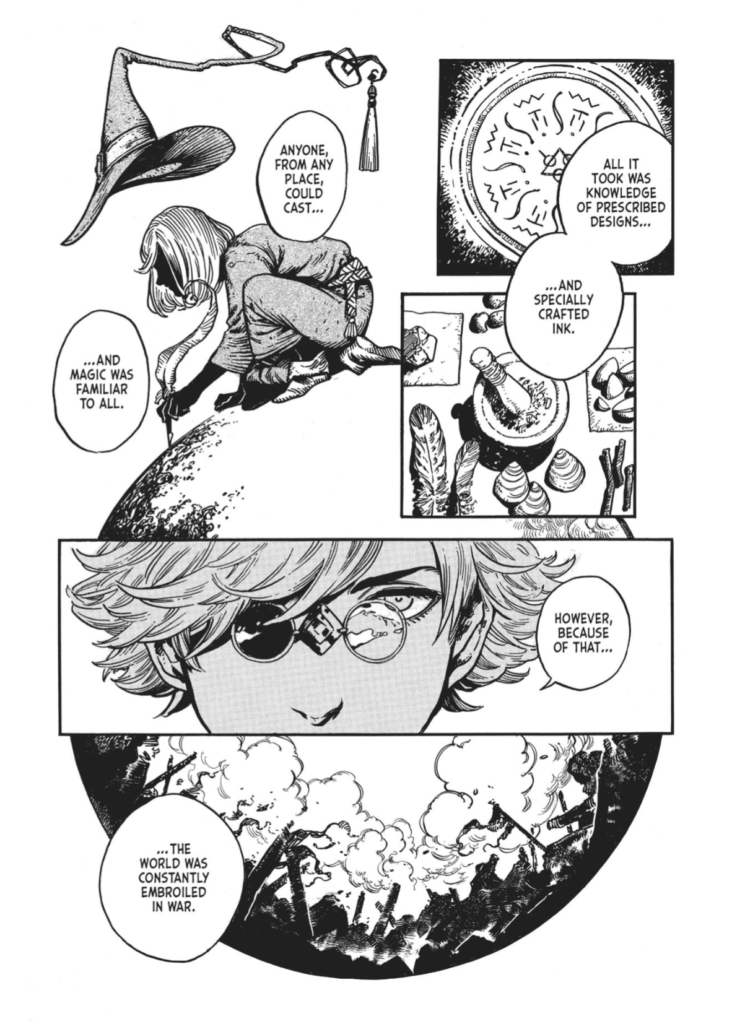
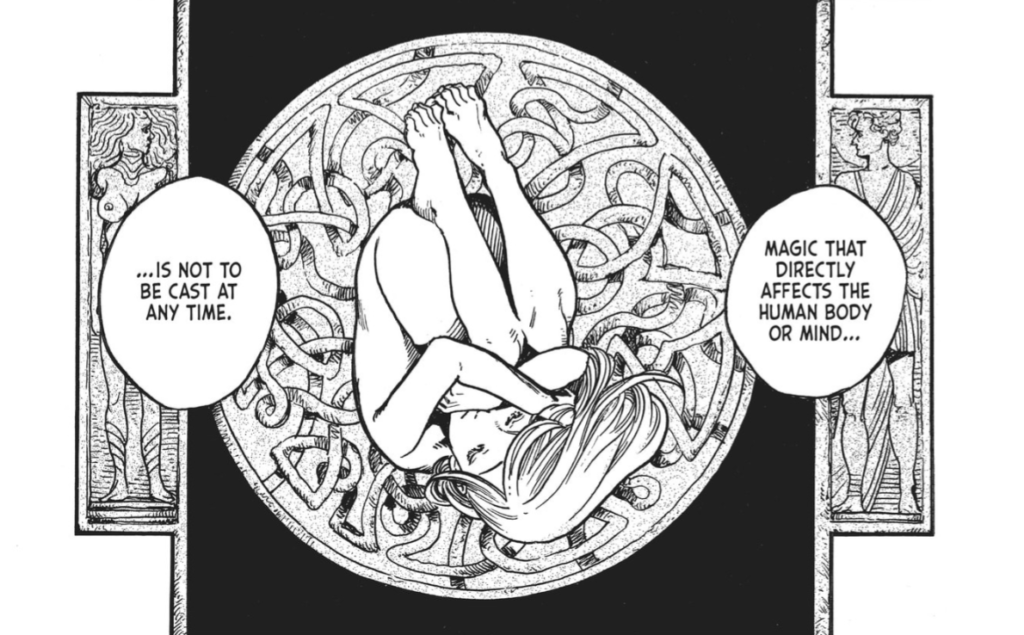
And it’s not enough to be able to draw — your drawing skill matters too.
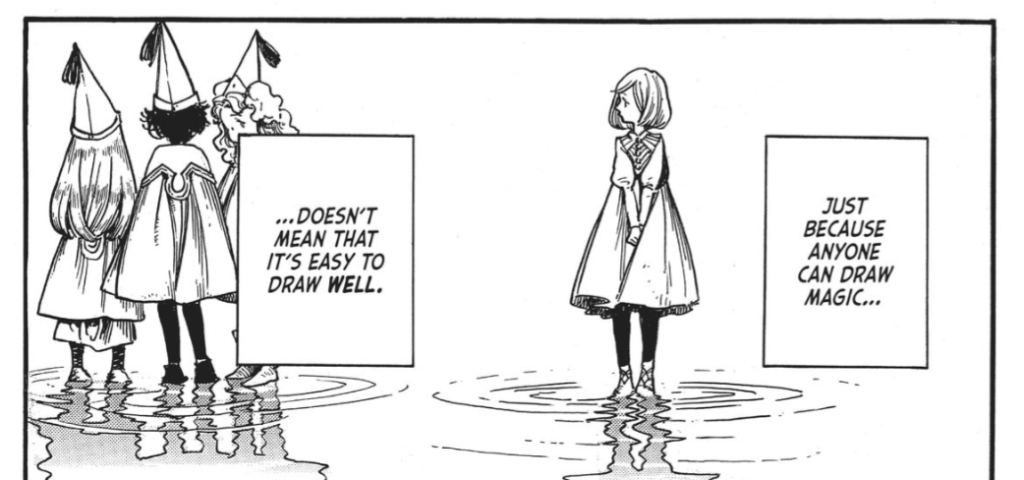
05:15 [Christopher:] The first chapter has a few writing hiccups, like Chip mentions here, where the author isn’t super-organically introducing the readers into the world. While this is something that continues through the book, the author’s hand gets fainter and fainter as it goes (imho) and the reveals and instructions become more organically incorporated into the story.
Here’s that scene from chapter 1, where Coco brings up that she’s been asking her mom about wishing to use magic…
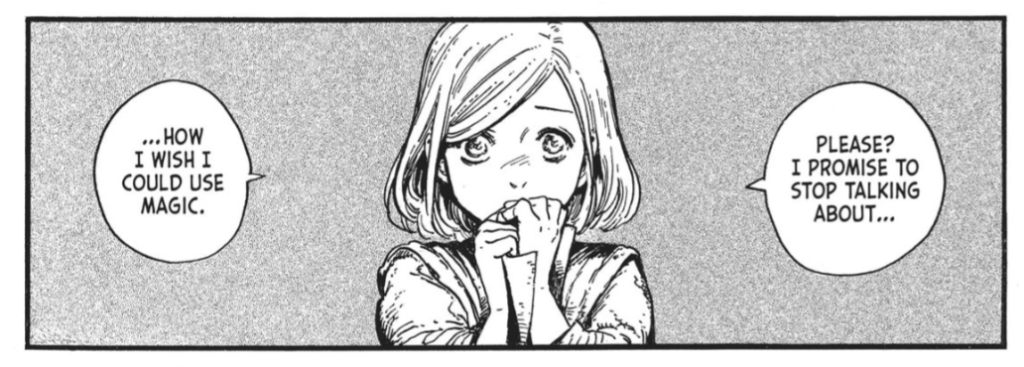
06:10 – Chip likes the color pages! “”They’re the best we’ve had so far.”
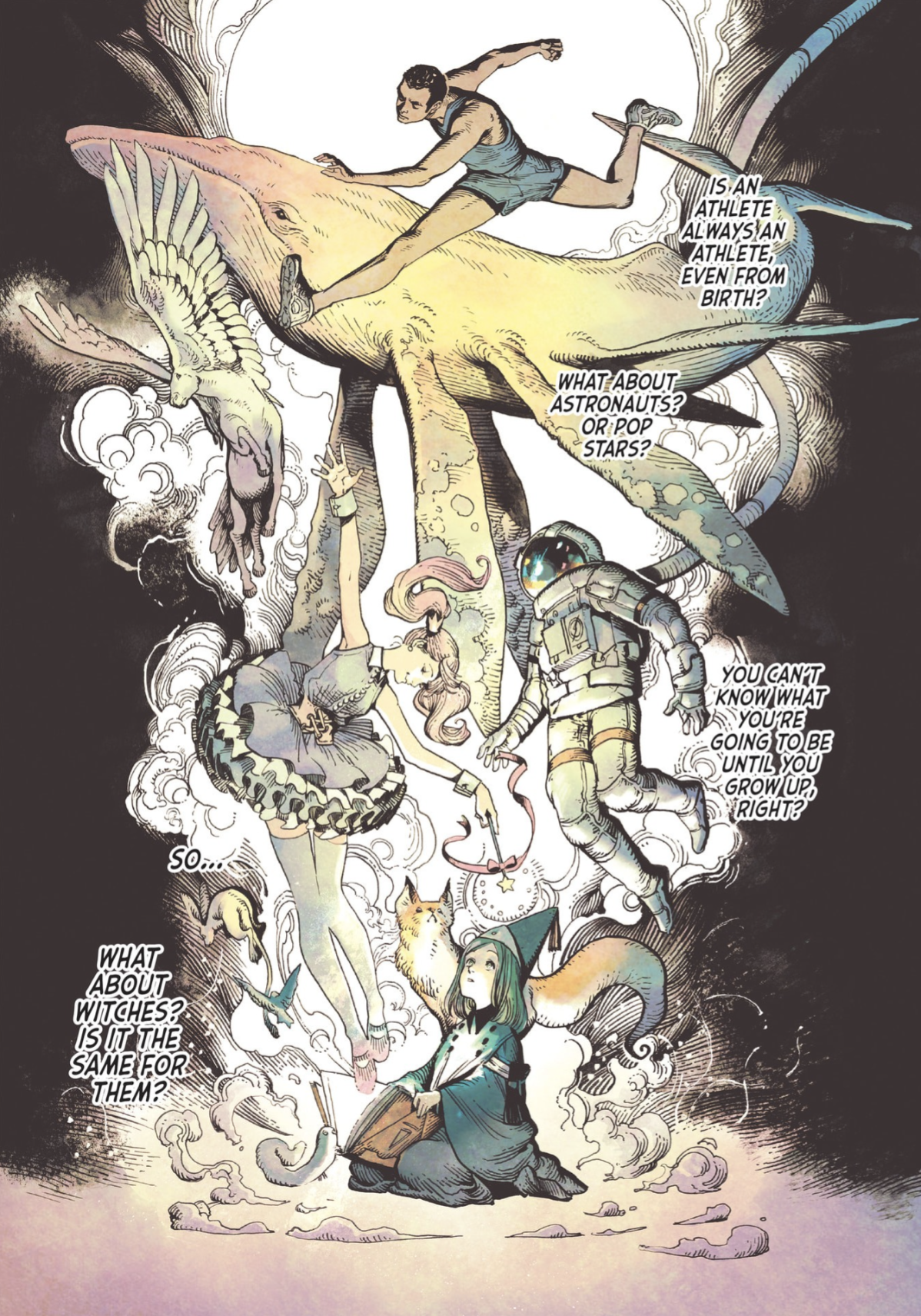
06:34 – Chip and Chris admiring Shirahama’s linework and compare it to P. Craig Russell, another fantasy/fairy tale inspired comics creator. Some of his most beloved work can be found in The Sandman stories by Neil Gaiman that he has illustrated.
[Christopher:] Russell is a favourite creator of mine, and he’s done so many brilliant and beautiful comics over the years. Perhaps closest to Witch Hat Atelier is his work adapting the fairy tales of Oscar Wilde, go see if you can track those down, they’re quite special.
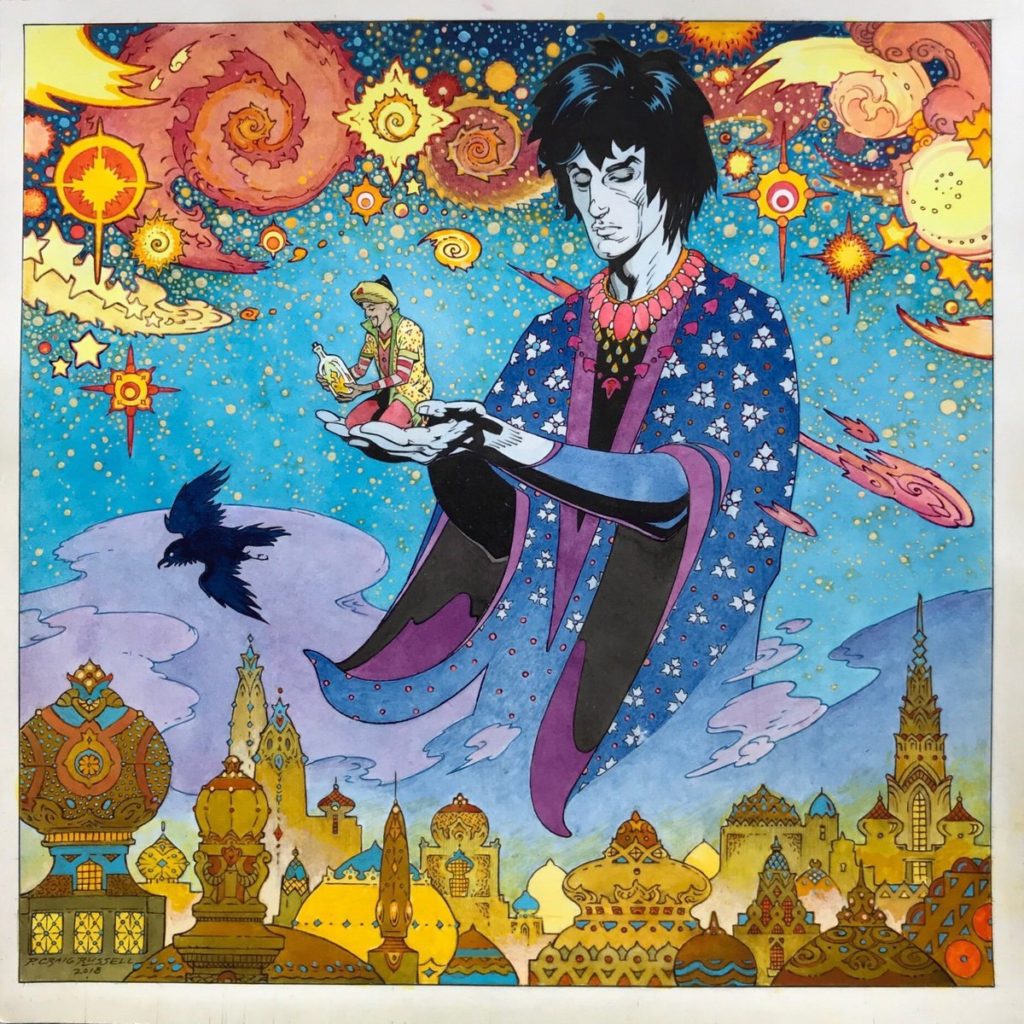
07:09 – Chip loves the contraptions! The magical toilet that drops your leavings into an eternal void!
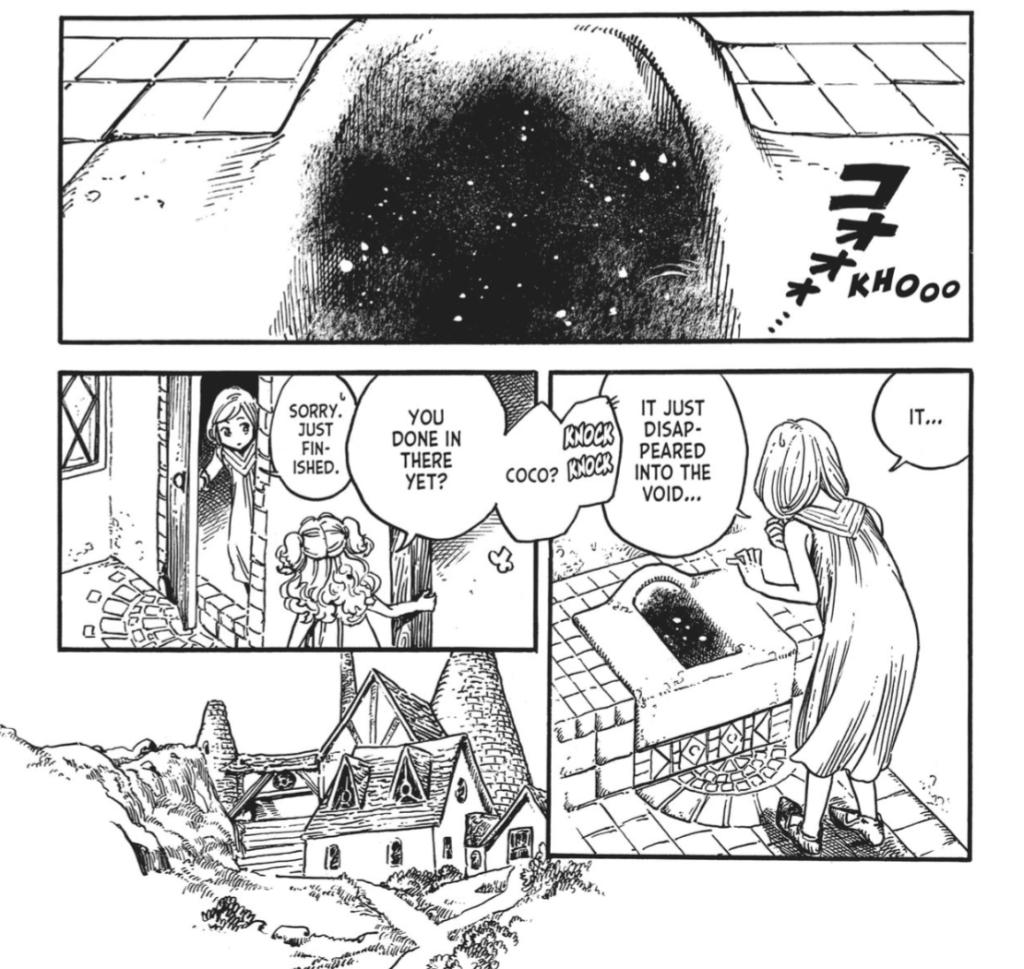
07:51 [Christopher:] Yup, Witch Hat Atelier is serialized in Morning 2, which is INDEED a seinen manga magazine. Much like one of our earliest reads, Yotsuba&!. We’ve been talking a little more lately about how Japanese age and content categories for manga don’t entirely make sense in an American context, but I think it’s pretty clear that they don’t always work even in a Japanese context either. We’re working on a larger essay about this, hopefully coming before the end of the year.
[Deb:] We’ve mentioned that the traditional definition of “seinen manga” is “content aimed primarily at adult men in their 20’s-30s, but a lot of stories that N. American readers think are all-ages friendly stories, like Yotsuba&! and Chi’s Sweet Home were all originally published in seinen manga magazines.
In between when we released this episode and when we’re getting the show-notes up, Morning Two announced that it will become a digital-only-magazine (boooo), but that the digital magazine will begin serializing the English chapters of Witch Hat Atelier, for FREE, beginning this month.
In fact, the first chapter is now available in English on comic-days.com
09:29 [Christopher:] We talk a LOT about cool stuff that the artist is doing in this book, and just reference an image, so lots of our notes this week are going to be “OMG look at this drawing!” For example, here’s how drawn magic works. If you draw something too close to the edge or draw a line a bit too long, it makes things sprout out of the side:
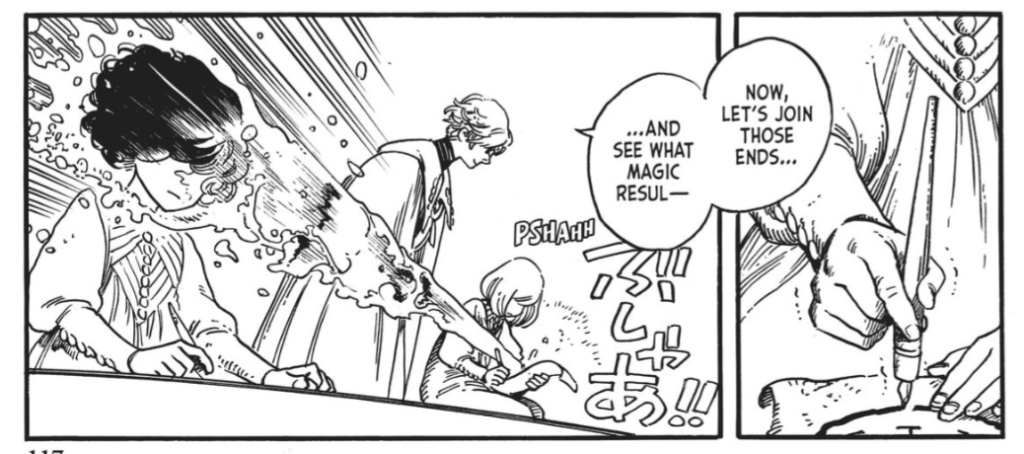
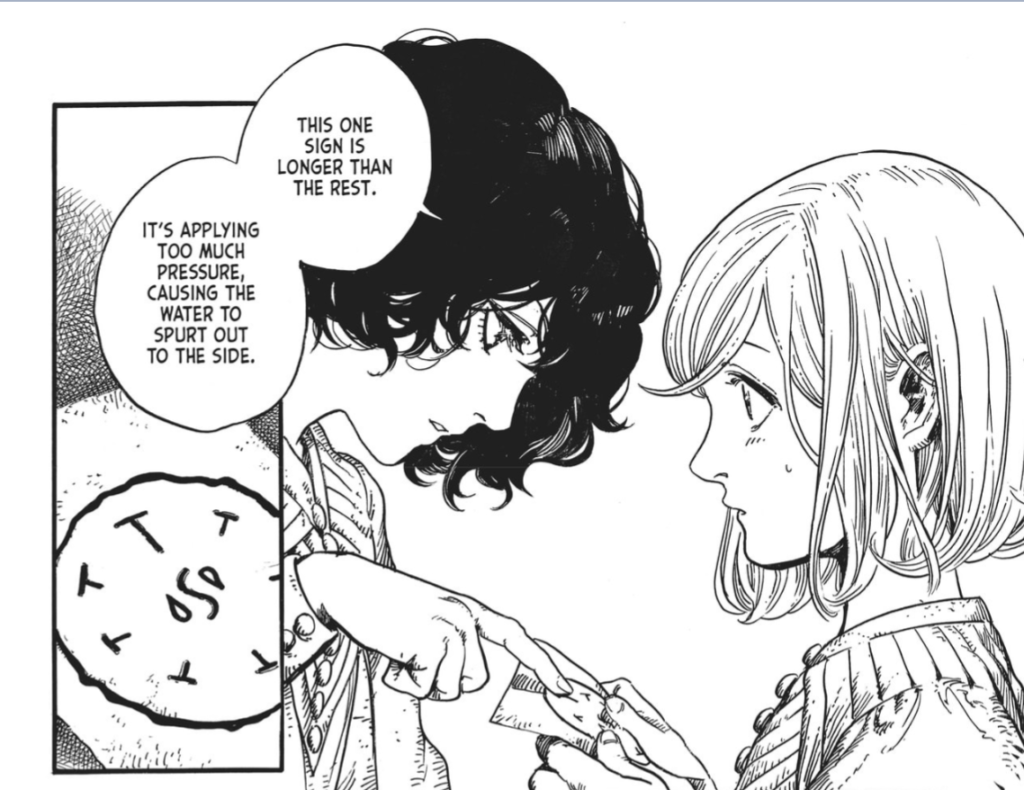
Later, Coco uses what she learned from this ‘mistake’ to produce a water spout that helps her get out of a jam.
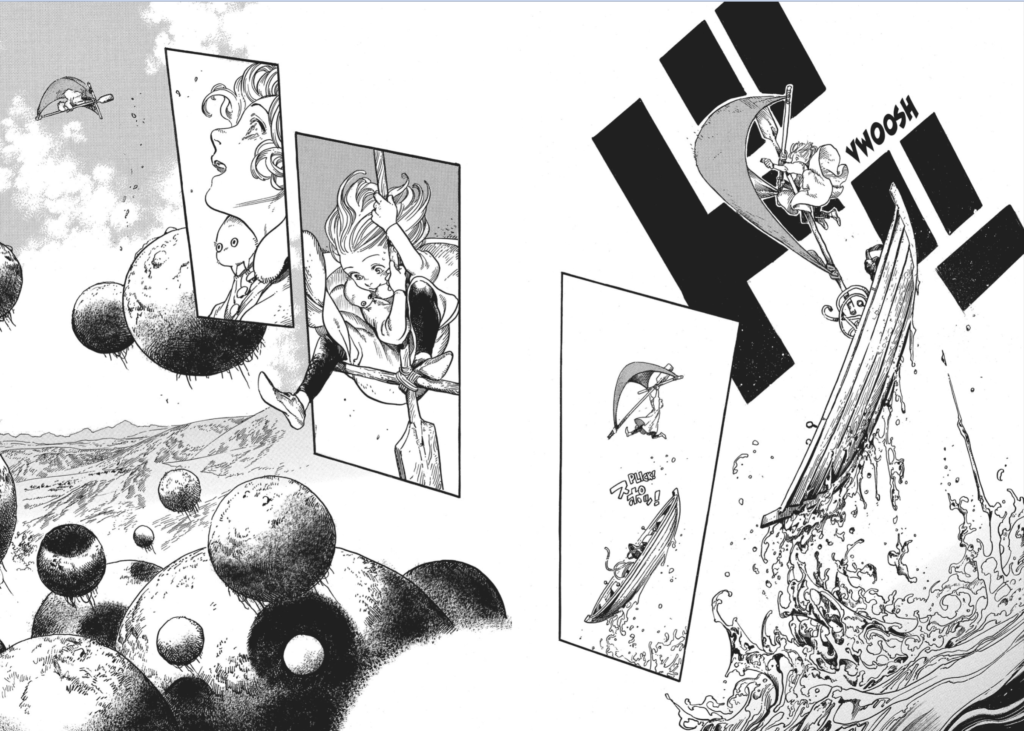
10:40 – The CONTRAPTIONS! Christopher liked the window that let you see (and travel to) other worlds: “The window was so great!”
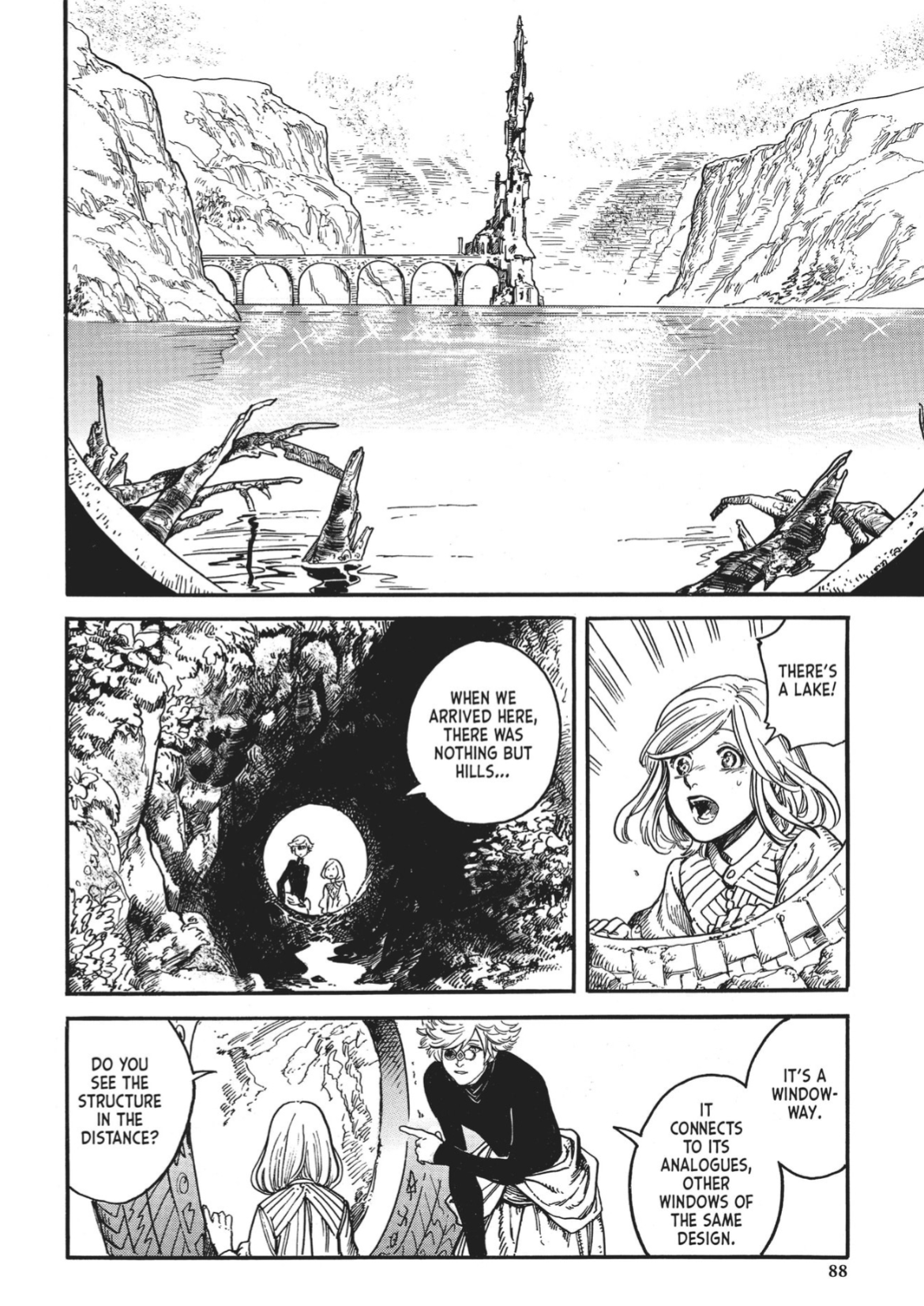
And he especially liked the Wizard-of-Oz-inspired shoes, where “clicking the shoes together makes you levitate, because you’re completing the circle on the soles of the shoes.”
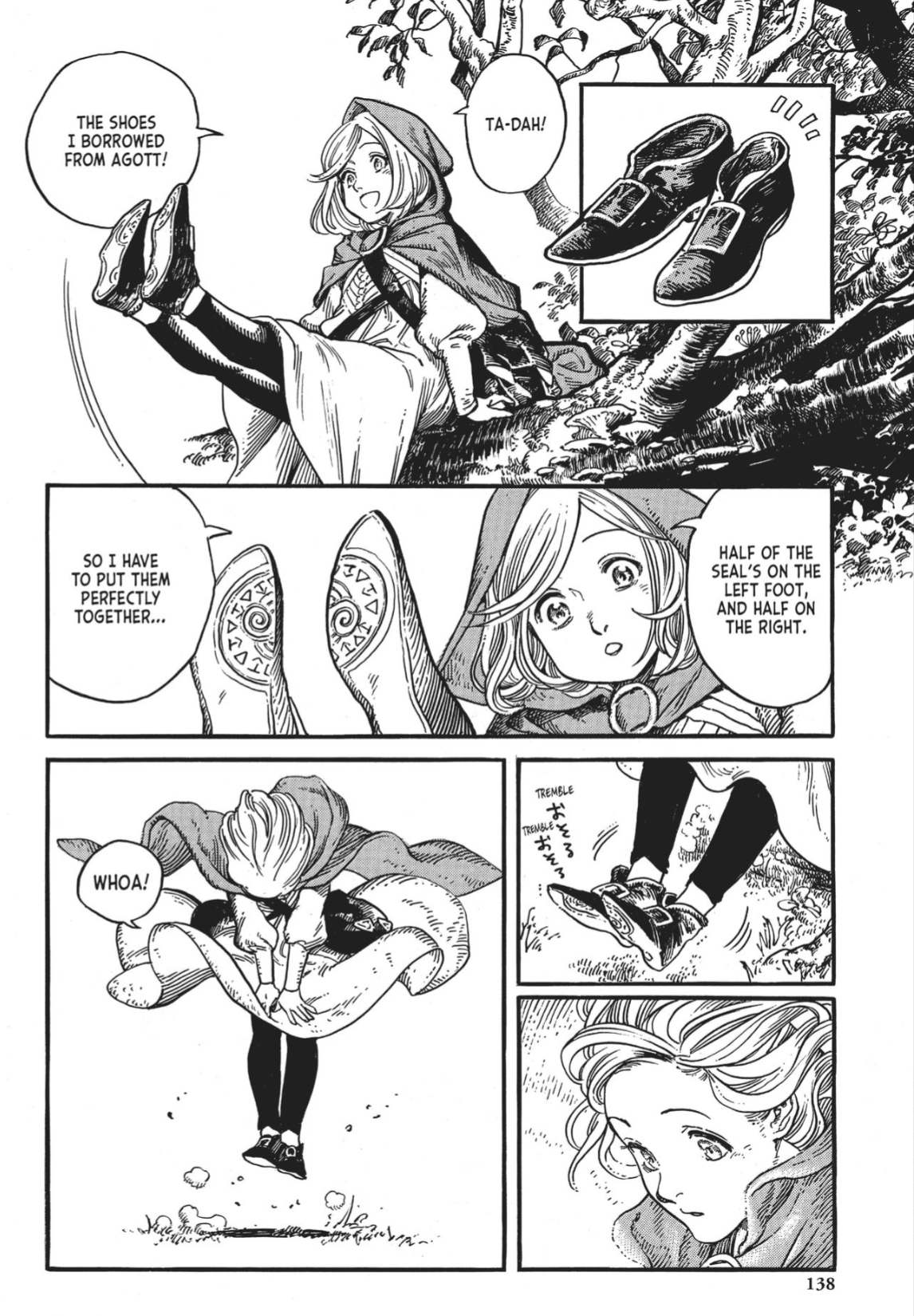
11:29 [Christopher:] So yeah, the covers for Witch Hat Atelier are VERY ornamented. While it adds to the storybook-like quality of the series, how does it interact with the other kinds of literature for the intended young adult audience? Here’s some bestselling YA fantasy novels for comparison.
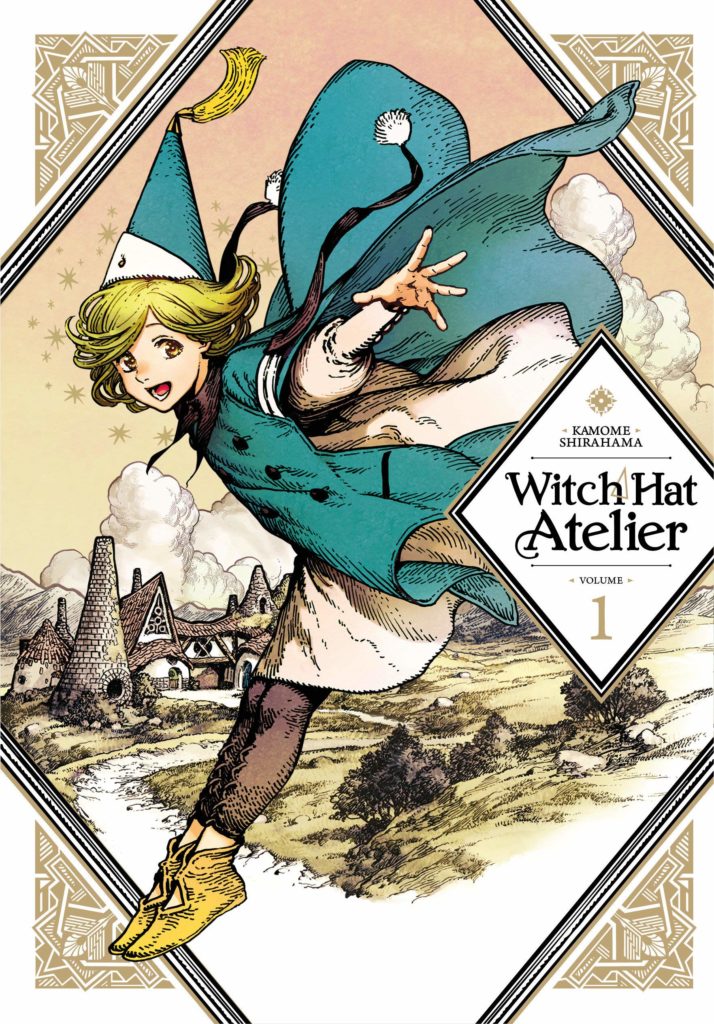
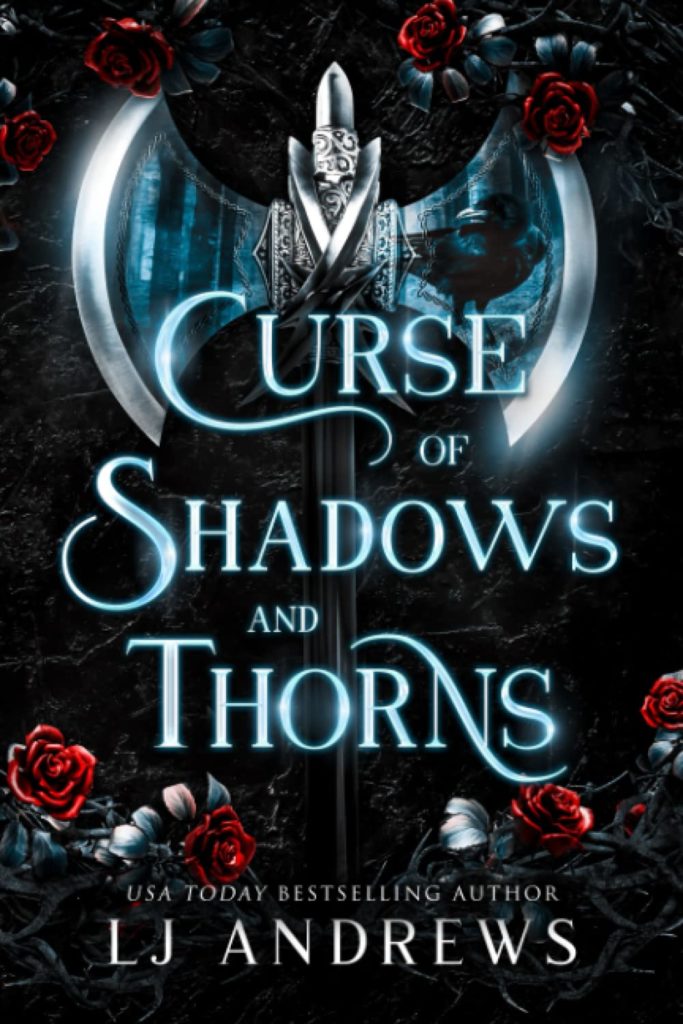

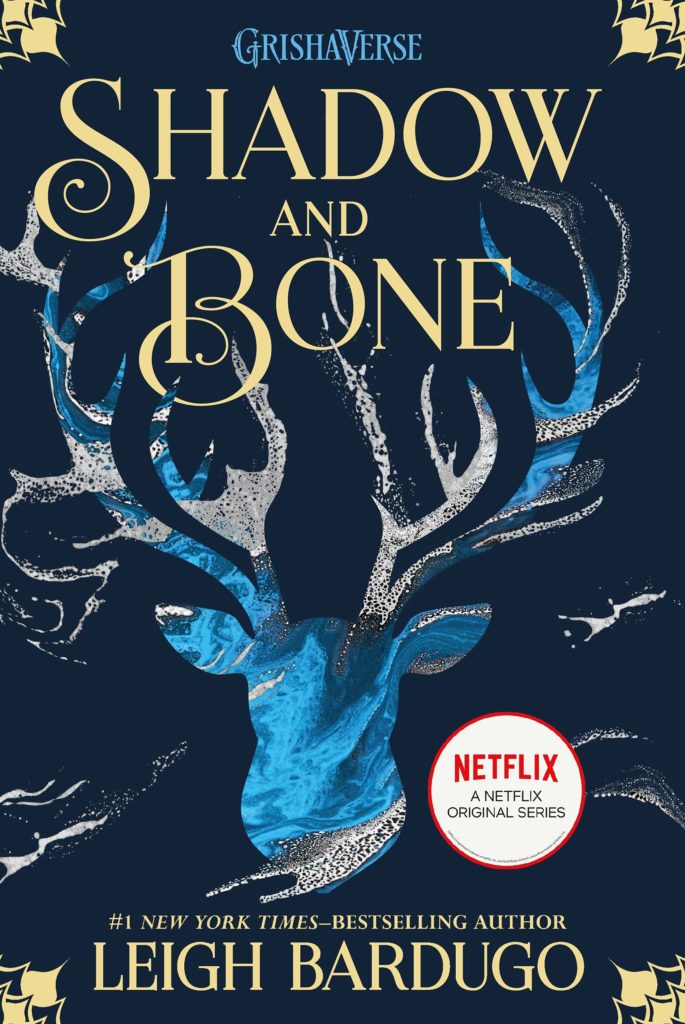
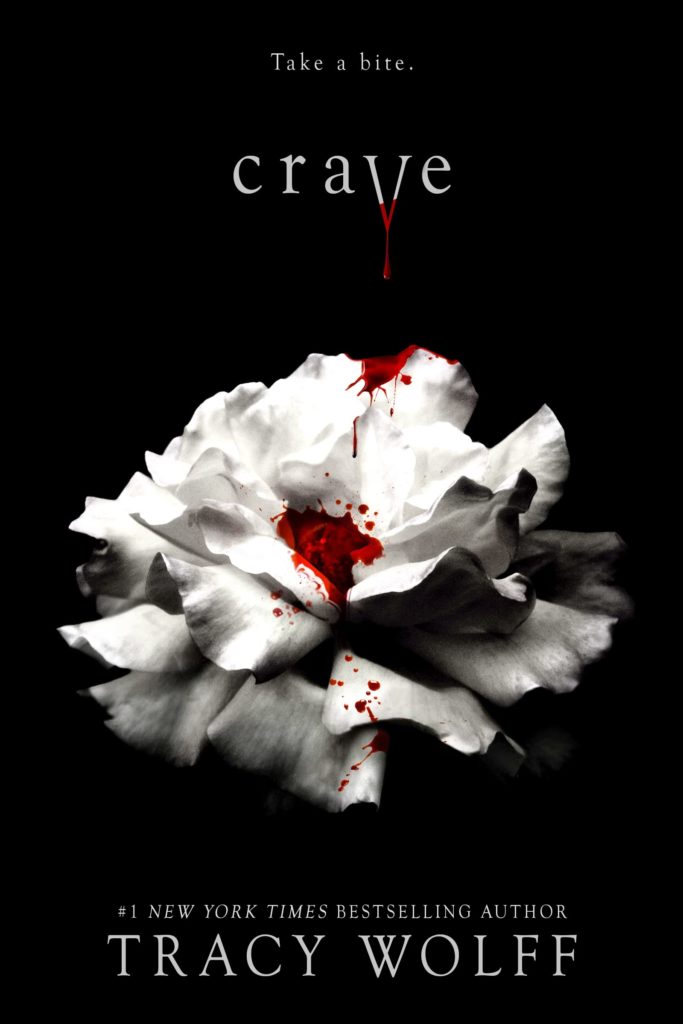
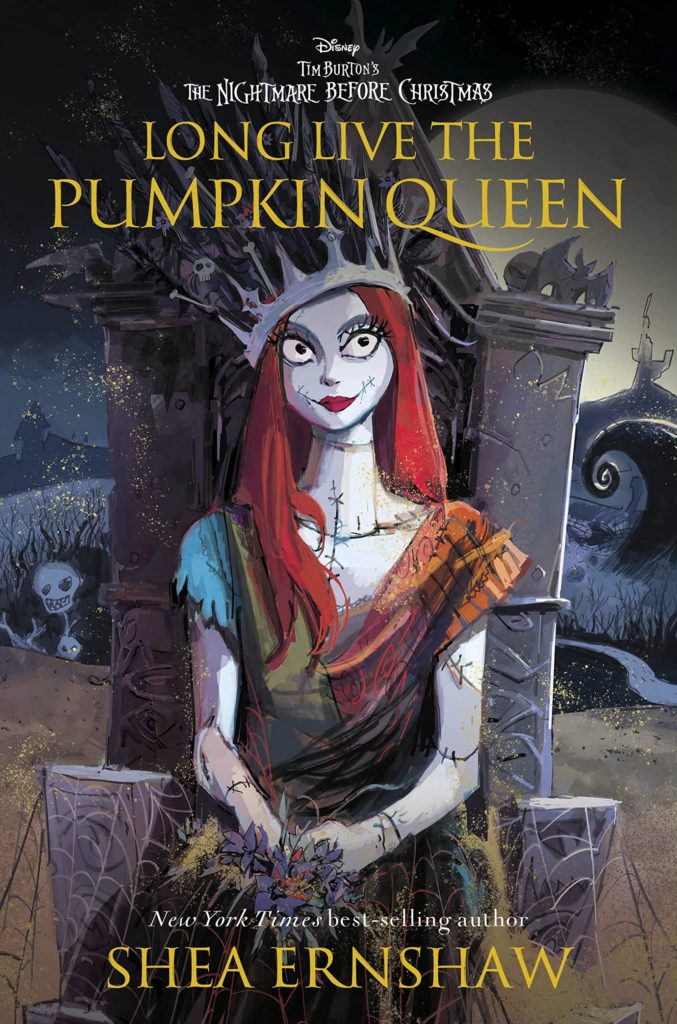
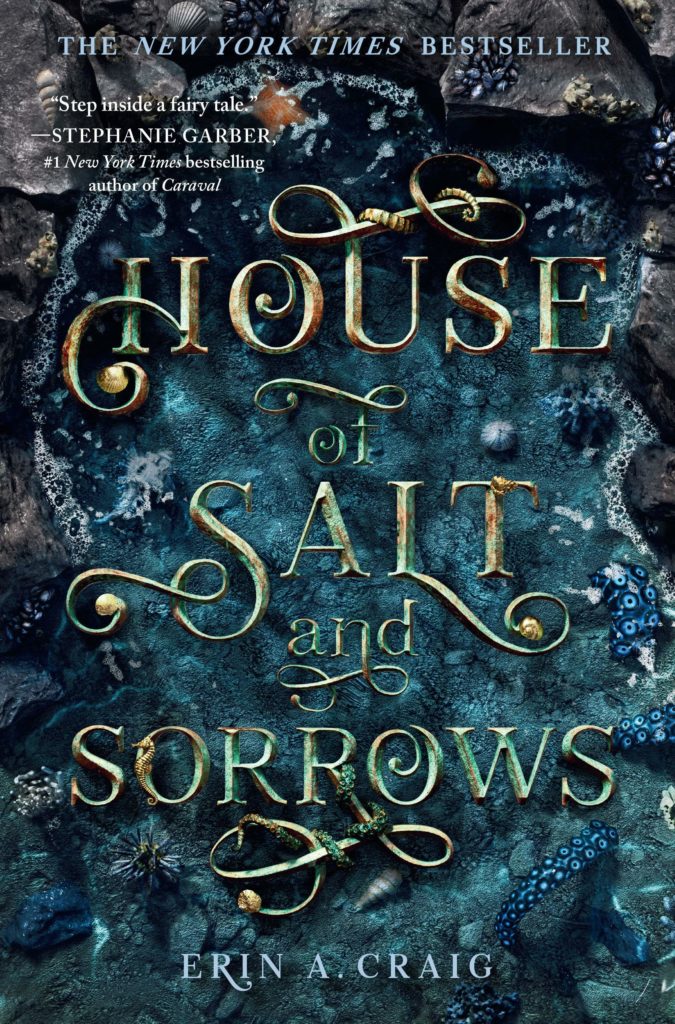
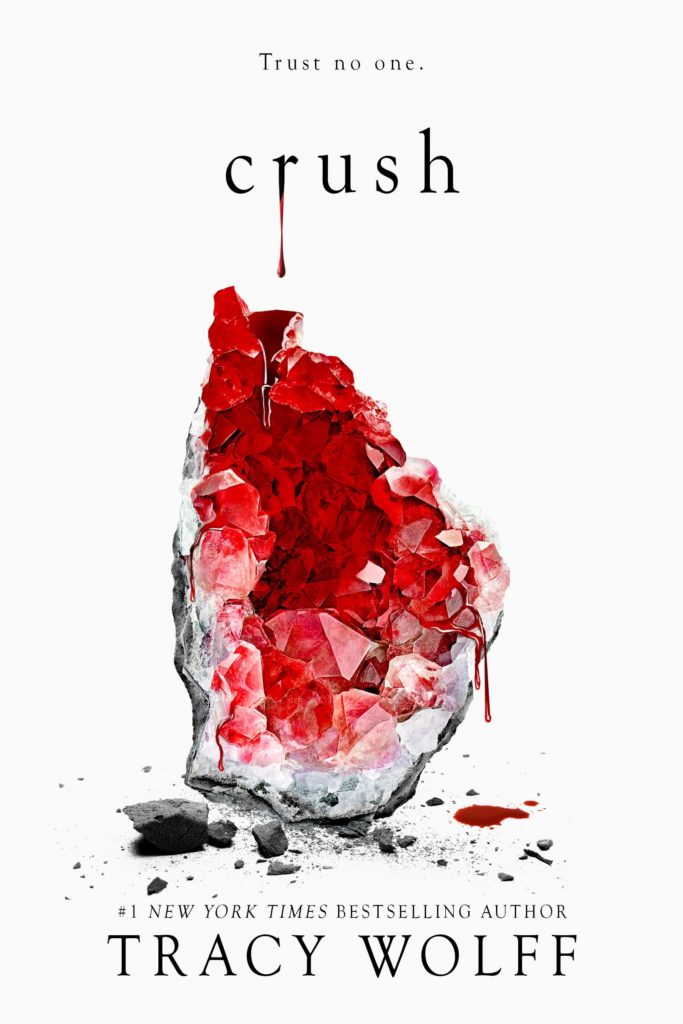
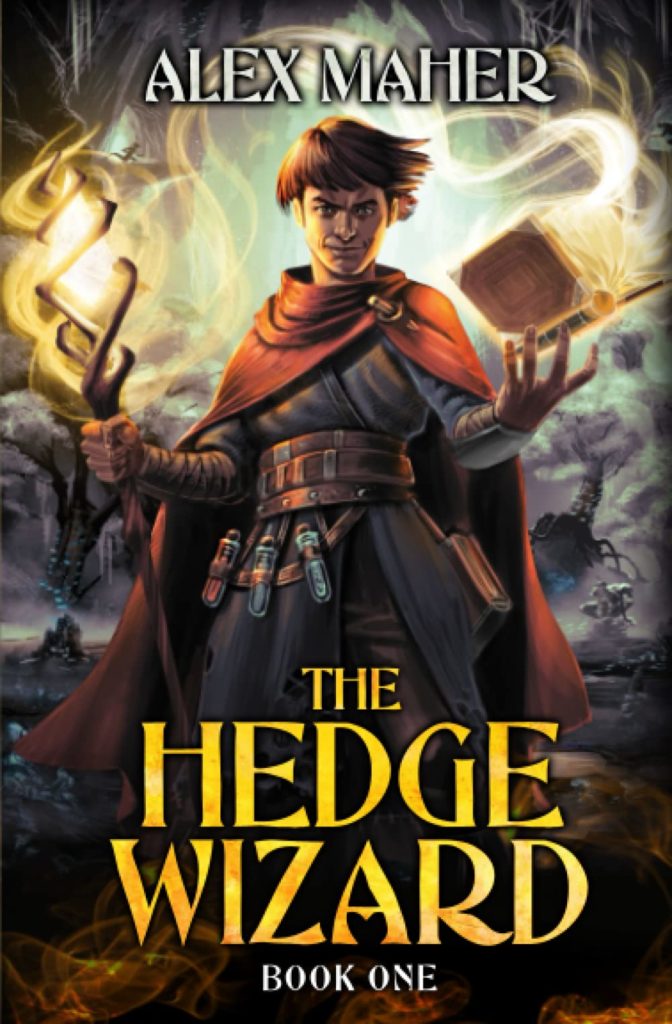
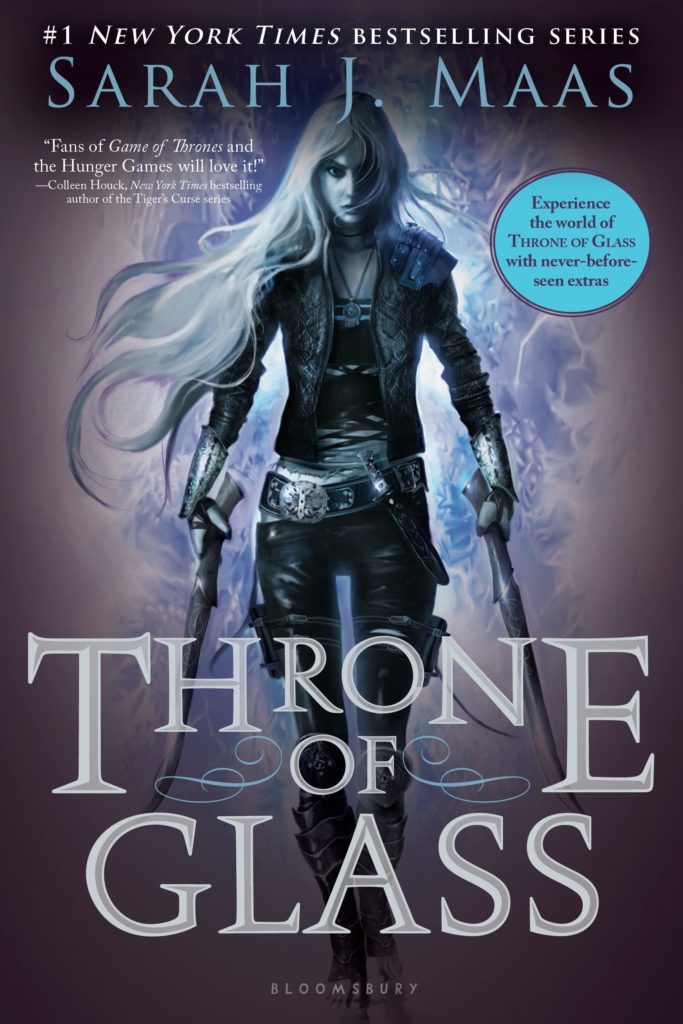
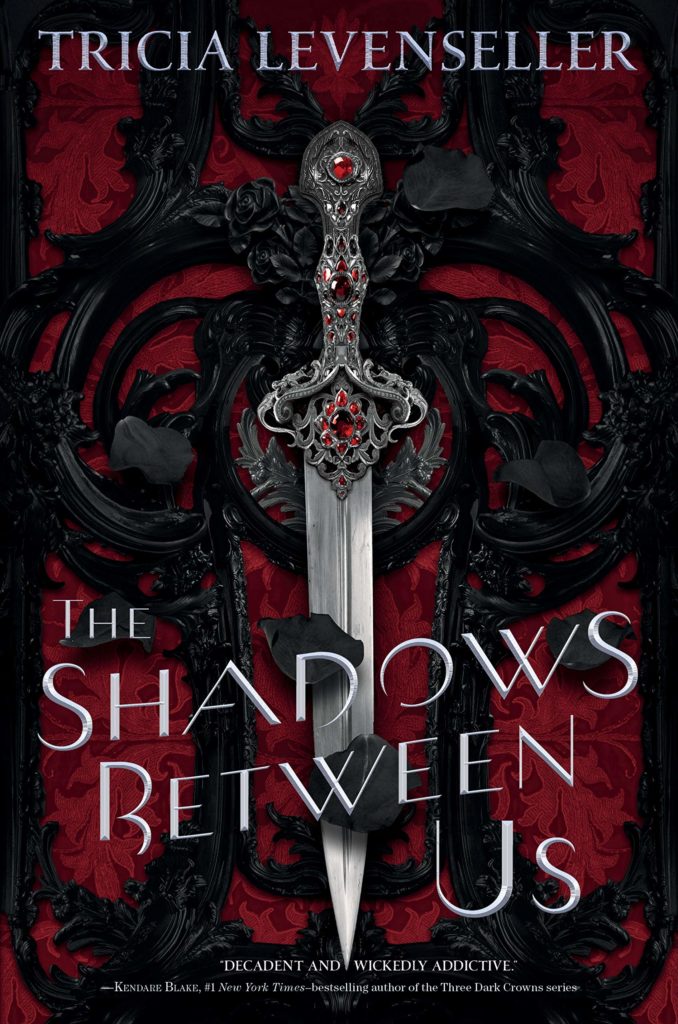
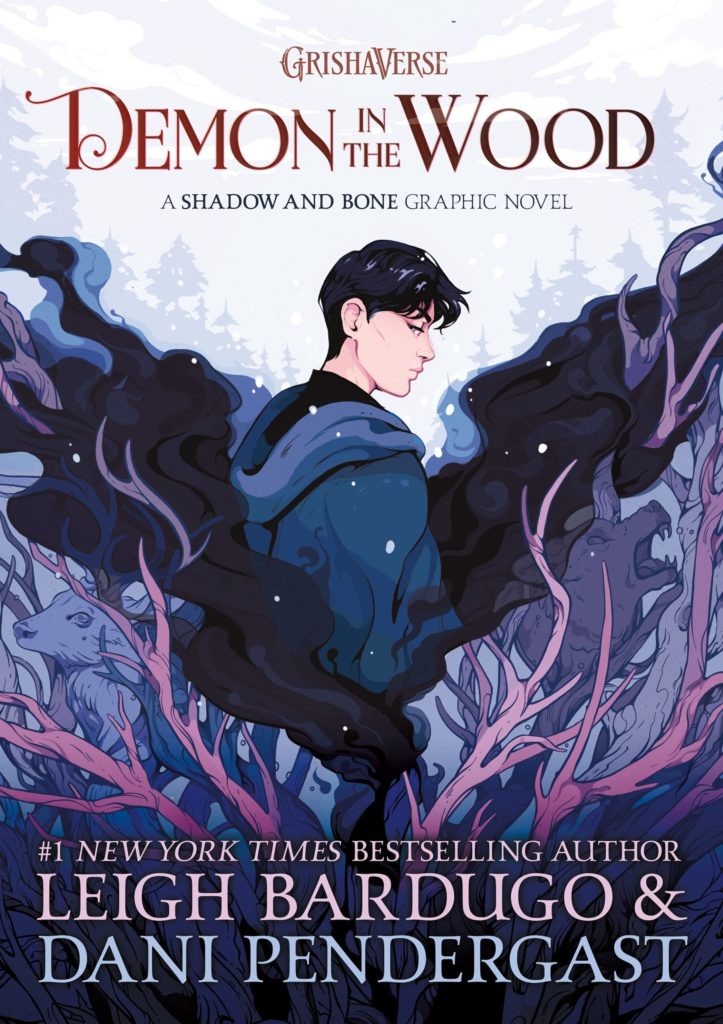
So that last one, Demon in the Wood, is a graphic novel from the Shadow and Bone author Leigh Bardugo and illustrator Dani Pendergast, and even that one, you can see how far away it is from the cover of Witch Hat Atelier. Much stronger and more prominent text treatments on all covers, and ALL of the illustrations and graphical elements are full bleed. I couldn’t find anything that was evoking a storybook.
Now that said, it’s absolutely okay that Witch Hat Atelier is doing its own thing. It’s a manga, its drawing more deliberate references from storybooks, it’s trying to look from a place and a time. But if a teen is reading the other 11 books in the graphic above, what are they going to think about Witch Hat Atelier by comparison? Are they even going to pick it up or will they simply assume it’s not for them?
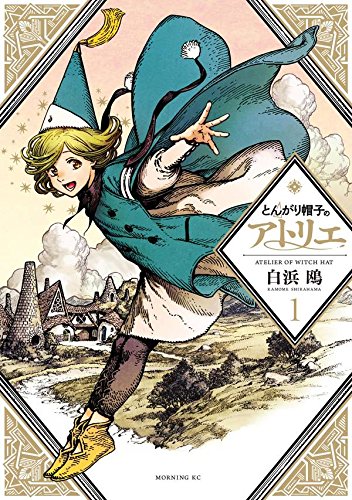
It’s worth noting that the cover is the same in Japanese with very few changes, there probably wasn’t much to be done to re-contextualize the work for the North American audience… But I think it’s worth pointing out, because our Learned Manga Reader Chip was actually confused by this book at first, thinking it was a ‘classic’ title.
FWIW, it probably will be one day. 🙂
12:26 [Christopher:] It was finally officially announced that Witch Hat Atelier would be getting an anime adaptation earlier this year. Morning Two released a video about it (in Japanese of course).
Kamome-sensei even drew a cool illustration to celebrate the news:

No date has been given for the release of the anime, and it probably won’t look anything like the video using panels from the comic, but it’s still very cool and I’m happy for the author.
13:03 Christopher references the graphic novel series Heartstopper by Alice Oseman. Originally a webtoon, then compiled into graphic novels in Europe and North America, and then adapted into a live action series on Netflix. It’s a fluffy romance between two teen boys, and it made quite a splash when it debuted earlier this year.
Then Christopher references the harder-edged The Summer I Turned Pretty by Jenny Han, with which his niece is slightly obsessed, and which ALSO got a live-action adaptation on Anime Prime this summer. Anyway, now you’re up to date on the cool-ish books for teen girls.
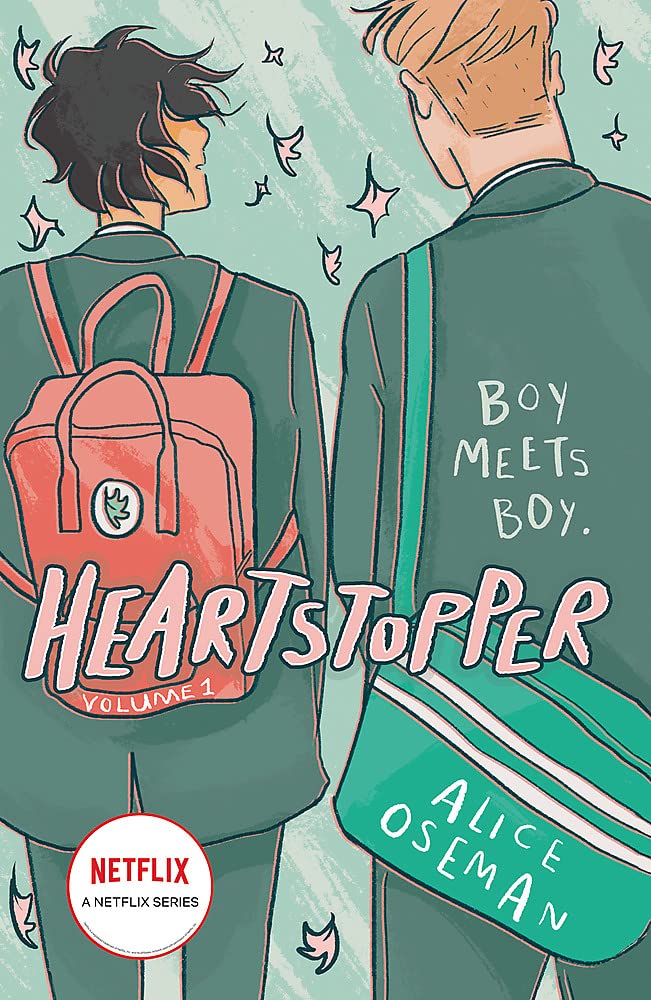
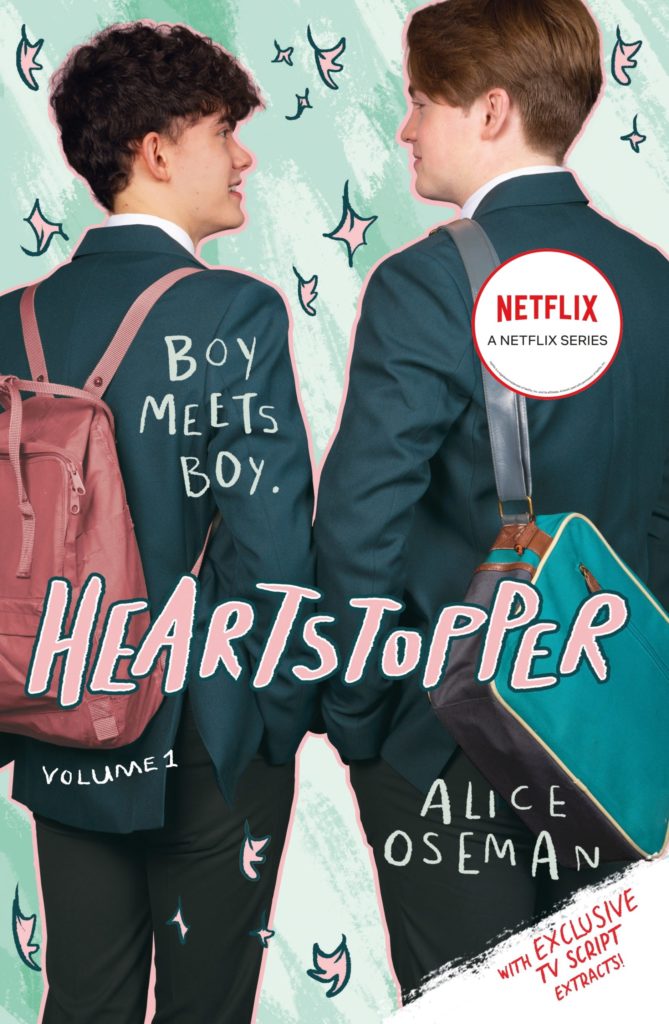
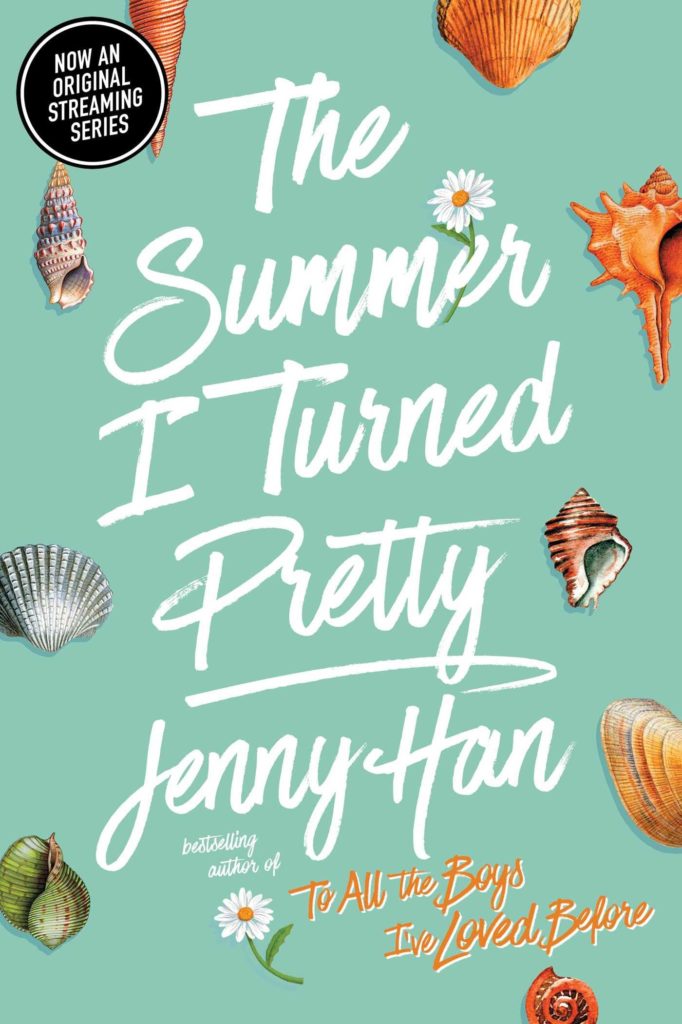
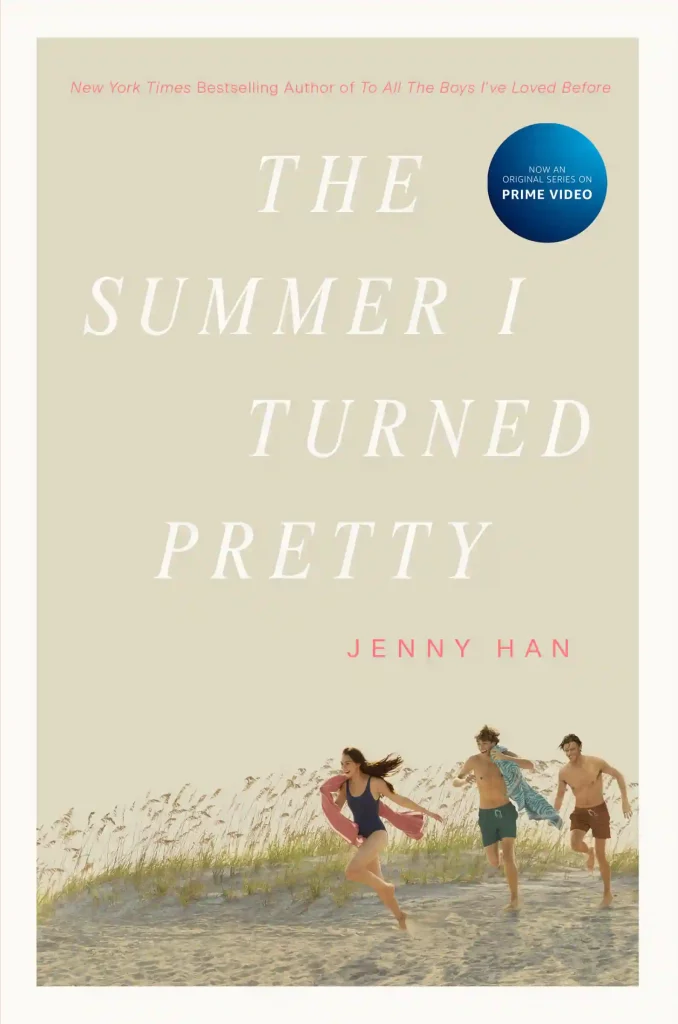
13:45
“I would say most anime is not as good as the source material.”
David Brothers
Shots fired!
13:57 Deb references the manga Drifting Dragons by Taku Kuwabara, published by Kodansha. The manga had a soft, almost Ghibli-like quality to it, which was largely lost in the CGI-created anime that just didn’t work as well.
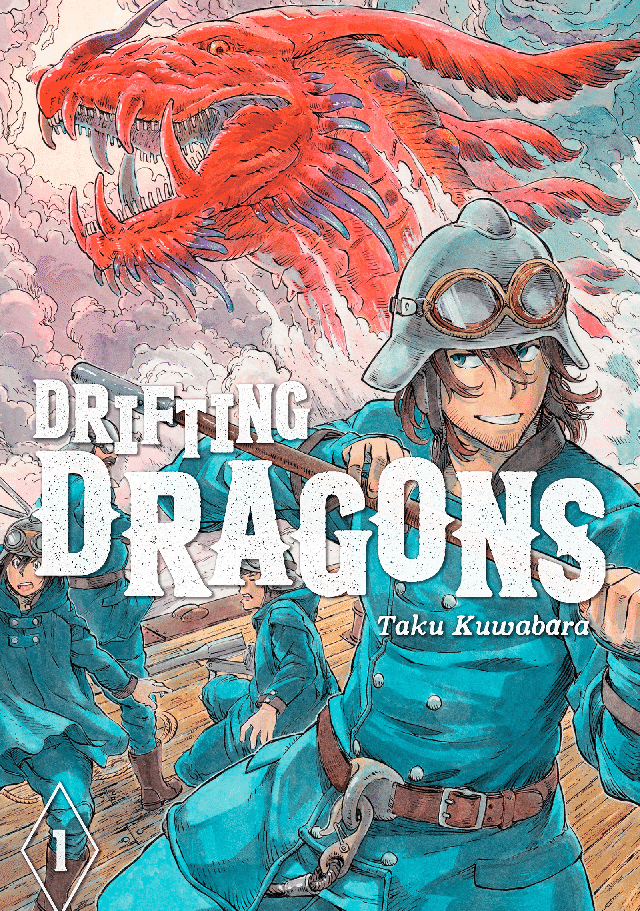
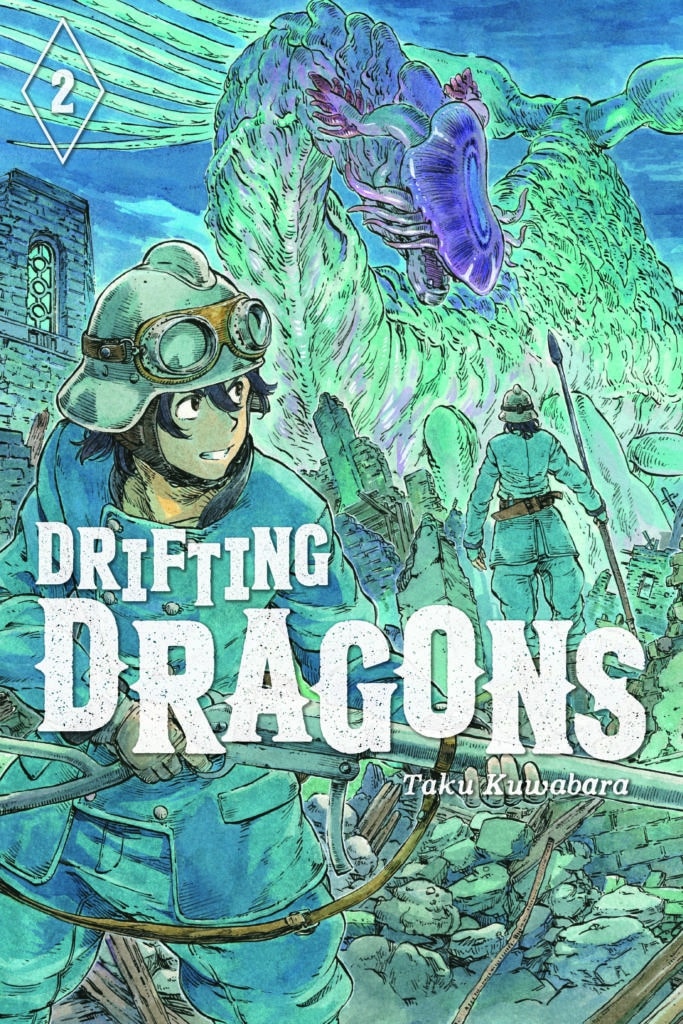
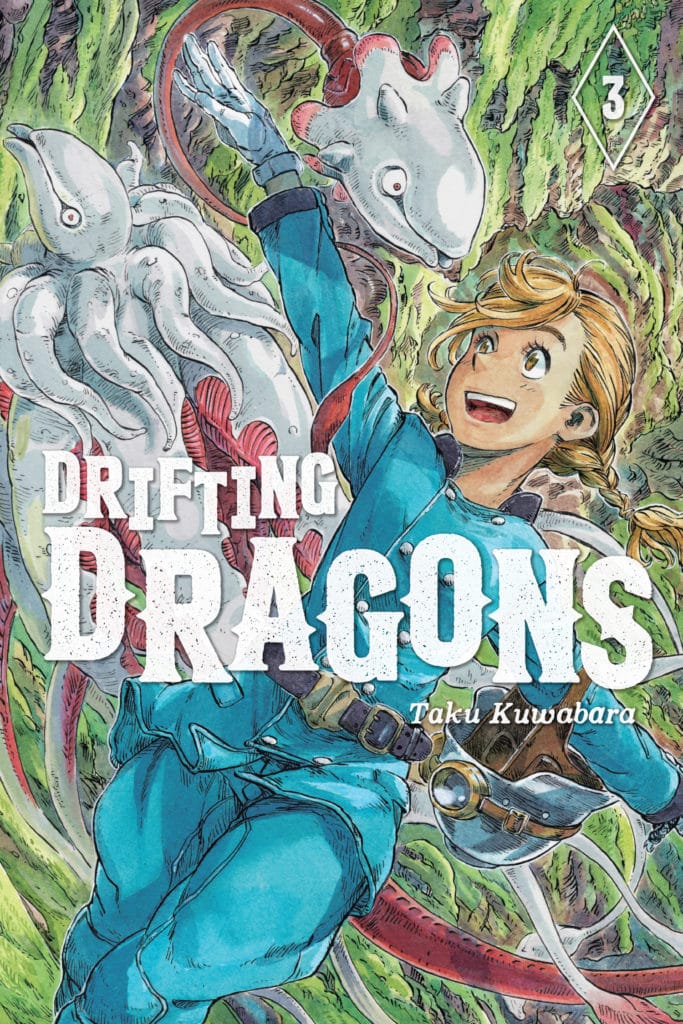
And then here’s that anime trailer… It’s… got a very different feeling.
14:25 [Christopher:] I can say from experience as both a fan and someone working professionally in comics, that fans HATE delays. But the grumbling about the multiple delays that the anime adaptation of Junji Ito’s Uzumaki seems to be suffering has been very quiet. Everyone who is even remotely interested in this adaptation seems to revere the original as a classic (rightly so!), and everyone wants the anime to be GOOD, because the last Junji Ito anime project was very poorly received due to an uninspired adaptation and ‘mediocre’ animation quality. But as you can see from the teaser image released below, the team adapting Uzumaki is shooting for a much higher quality… and quality takes time.
The original Uzumaki manga by Junji Ito is available from VIZ Media, of course.
Here’s an article about the third delay to the anime from Kotaku: https://kotaku.com/junji-ito-uzumaki-anime-delay-release-date-toonami-1849118485
15:13 [Christopher:] This series has some GREAT page turn surprises, Deb is right.
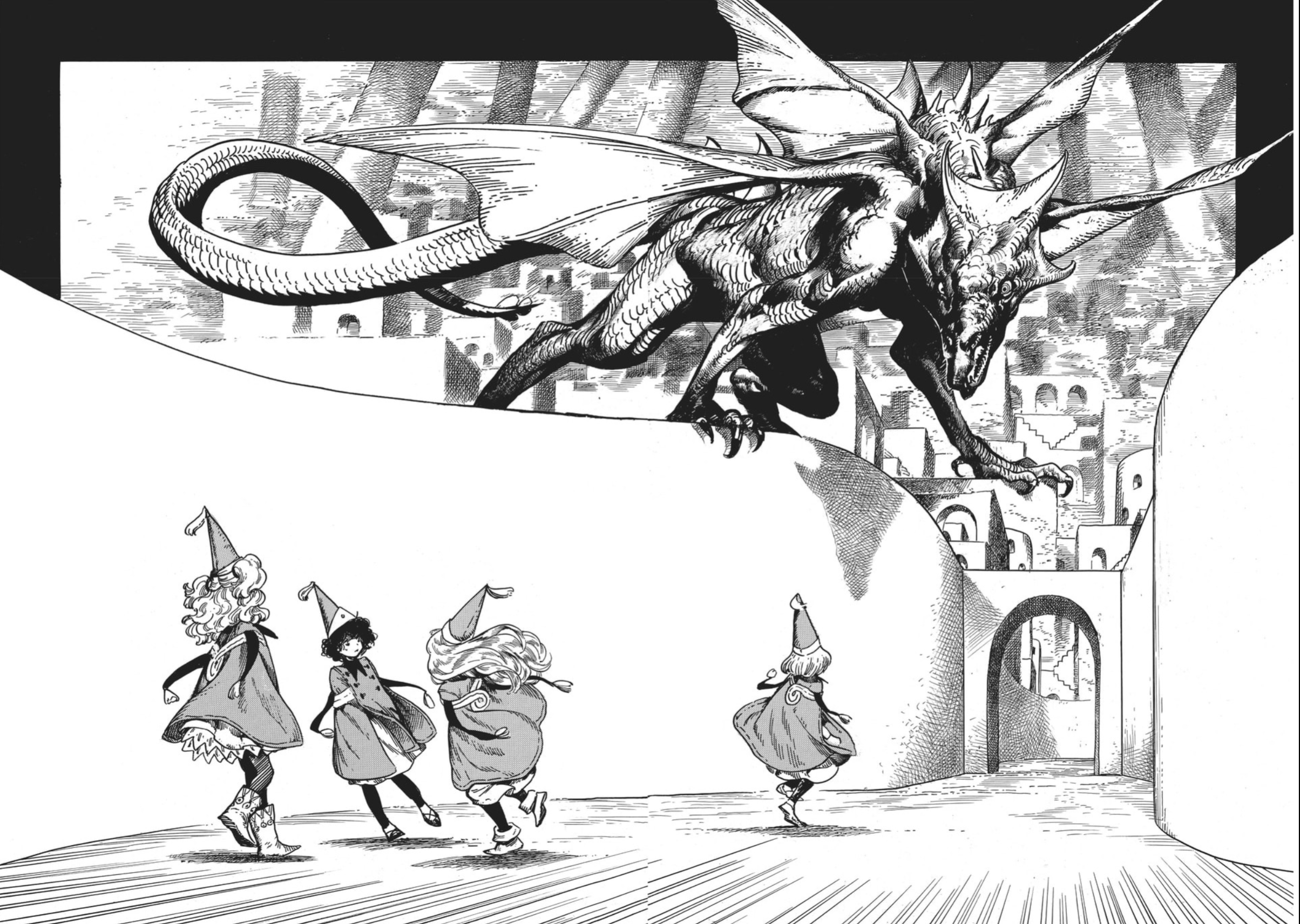
16:00 David describes Witch Hat Atelier as an anime-influenced book where every page flows into the next. Also, those reaction shots!
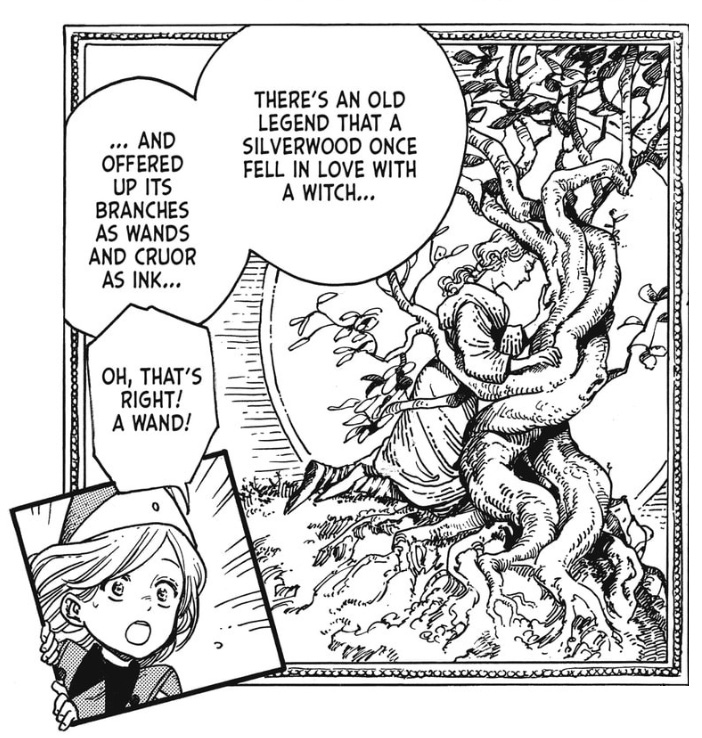
16:18 Kamome Shirahama is a big superhero comics fan. We’ve mentioned her Dr. Strange illustration for Marvel Comics… but have you seen some of her other work for DC and Star Wars? Wooo boy, they are pretty amazing. See more of them in this Illustration Age spotlight article.
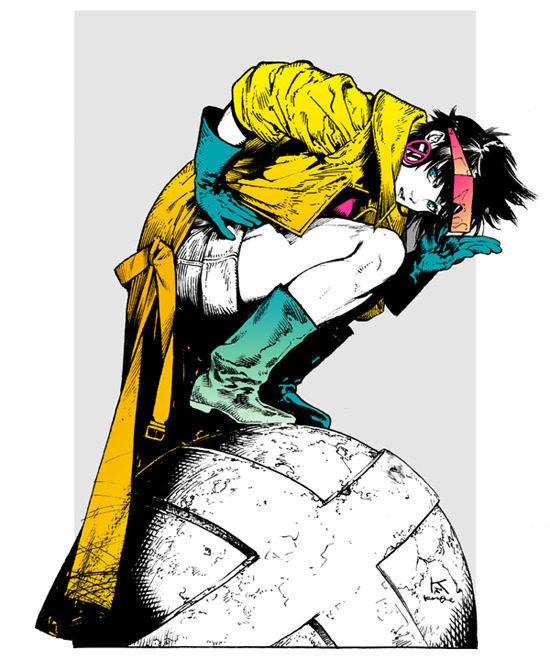
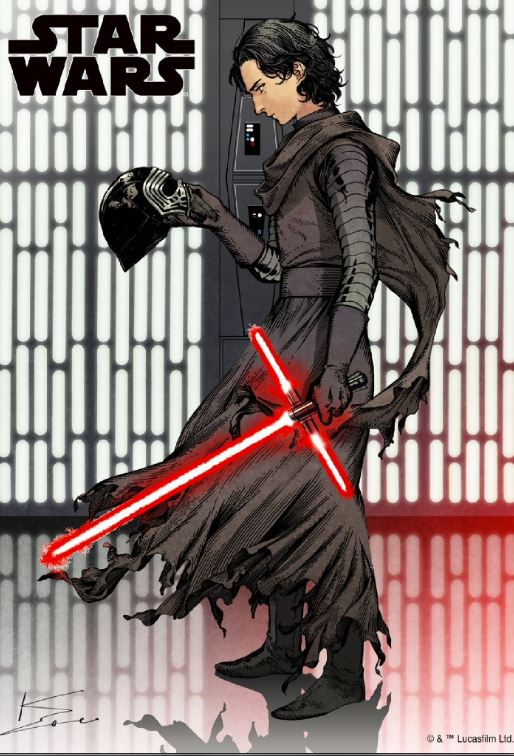
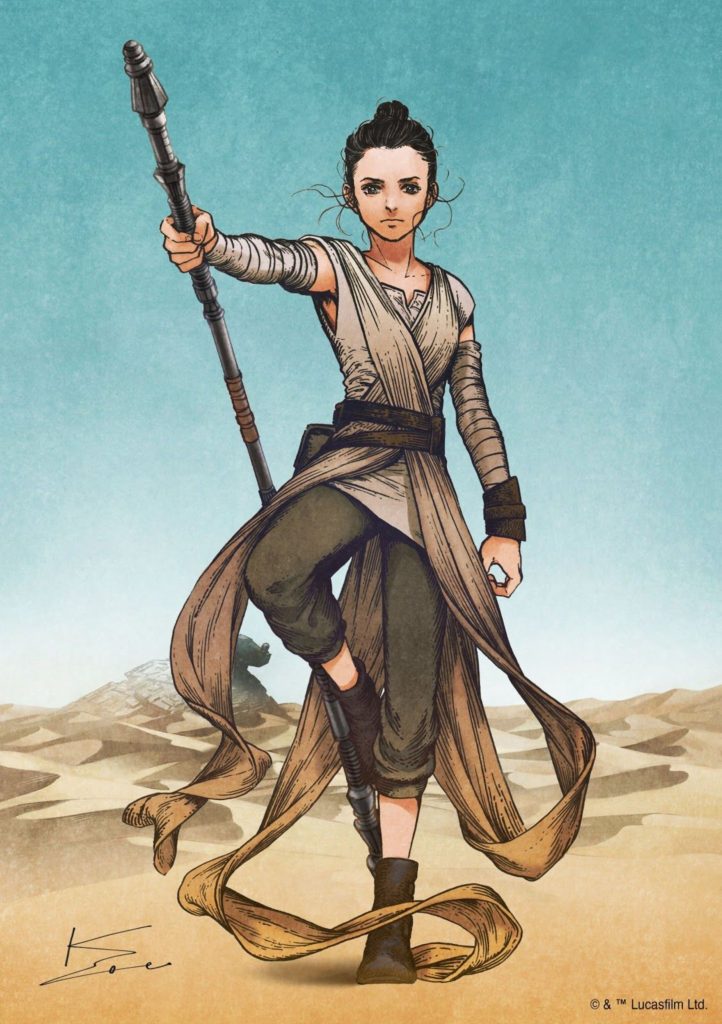
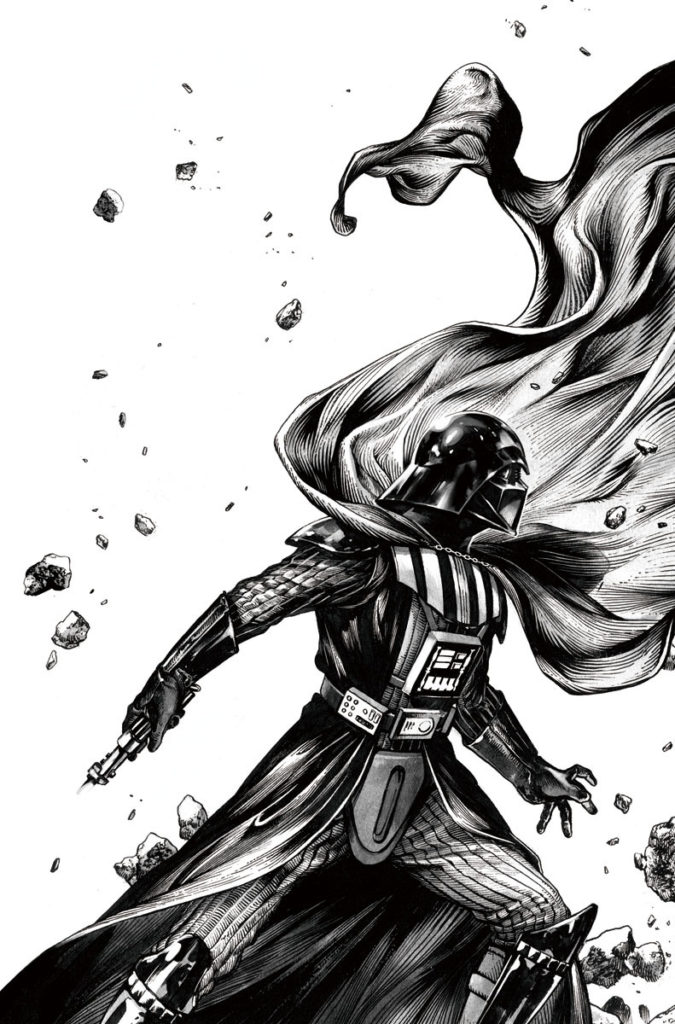

Some N. American comics creators that the gang shout out here include, Adi Granov, most notably his work on Ironman, and Jim Cheung and his work on Young Avengers.
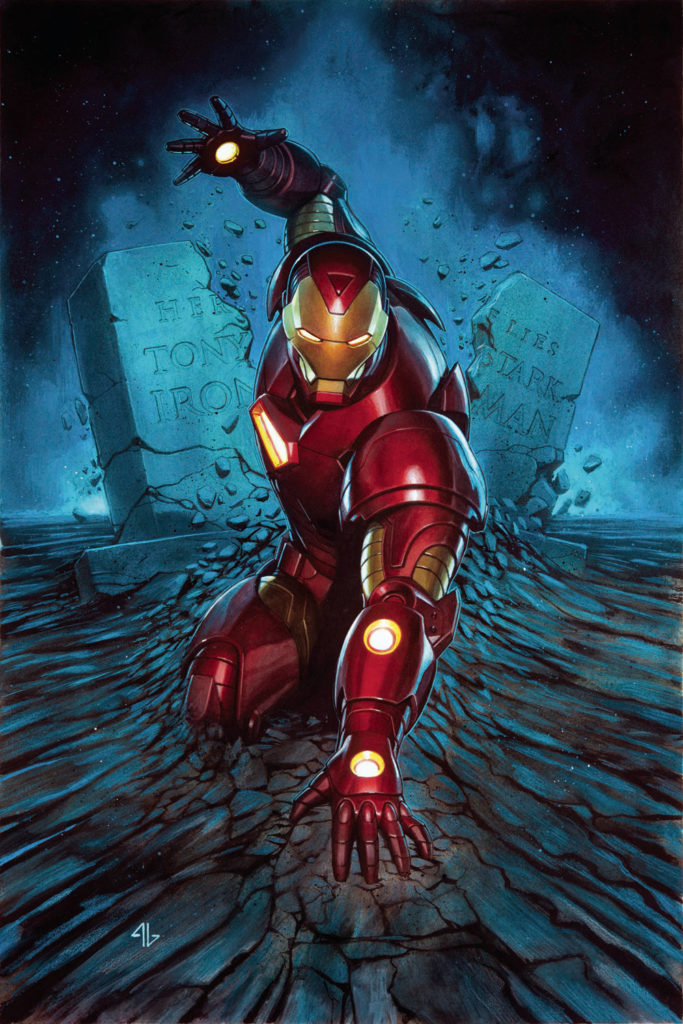
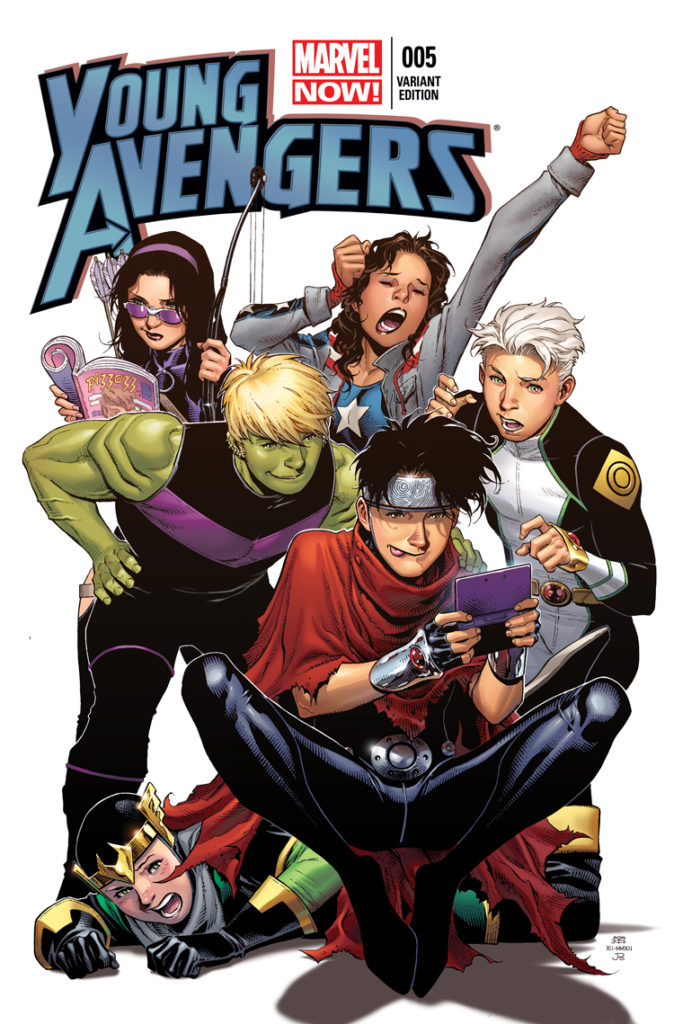
17:18 – Chip mentions Kamome Shirahama’s linework – “especially in the rock formations.” David mentions that the artwork looks “very European.”
Christopher mentions Go Girl, a series created by Trina Robbins and Ann Timmons, and Chris, David and Chip mention Terry Austin’s “broken line inking style,” especially in his work inking John Byrne’s pencils for The Uncanny X-Men back in the day.
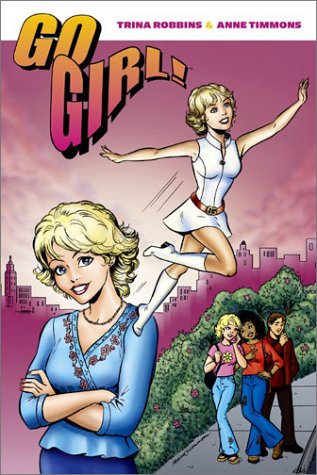

18:58 David zooms in on the dragon tail on p. 158 and notices that “she actually drew every single line.”
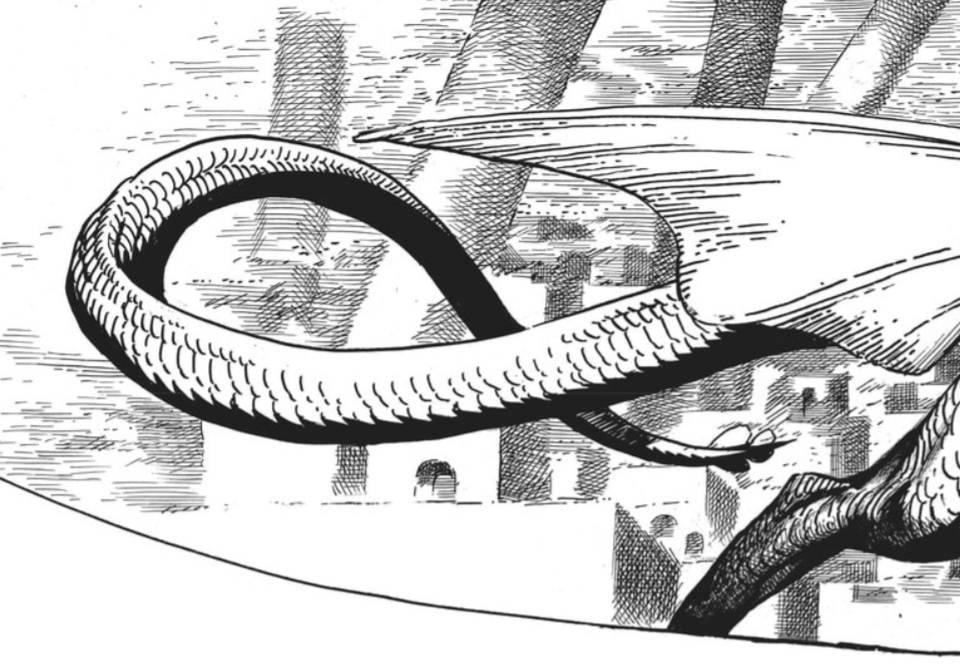
19:44 [Deb:] Chip mentions p. 31, where she imagines Qifrey casting a spell, and there’s some“lovely smoke swirls,” with a cartoon-y face of Coco fangirling out about what she thinks Qifrey’s magic would look like at the bottom of the page — it offers an interesting contrast to the “absolute elegance” of the main image.
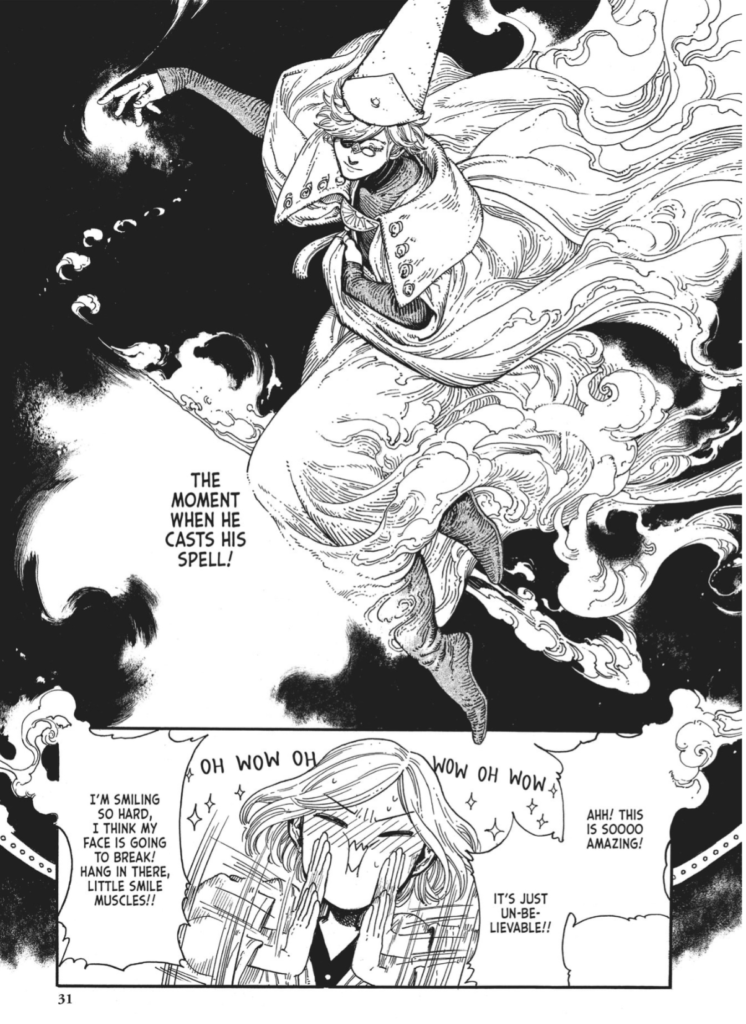
20:51 [Deb:] When Chip says, “When Deb recommended this, I thought it was a classic manga.” This was a surprising observation to me! I guess as manga readers, we know that Witch Hat Atelier is a new series, but to a new reader, maybe it’s not that obvious!
If you’re familiar with the fairy tale illustrations of late 19th / early 20th century illustrators like Arthur Rackham, Kay Nielsen, Maxfield Parrish and art nouveau artists like Gustav Klimt and Aubrey Beardsley — you’ll see hints of it in Witch Hat Atelier, which is maybe why it looked “classic” or an older work to Chip? Maybe?
21:11 This is the ‘storybook illustration on page 21 that Christopher mentions that has Gustav Dore vibes.
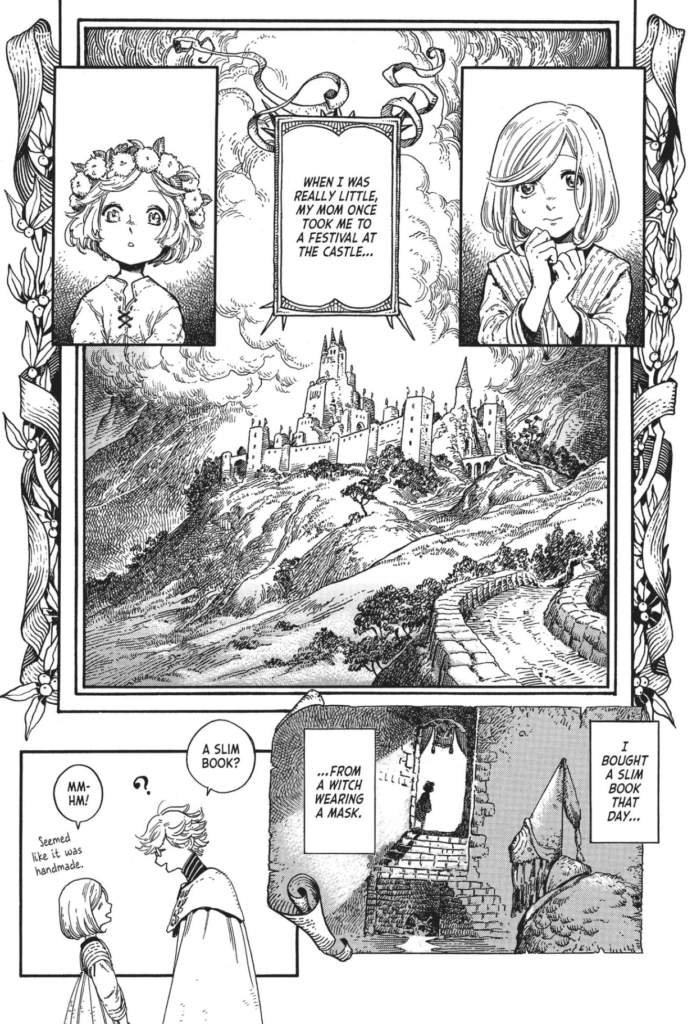
21:56 Deb is referencing this scene from chapter 1, when Coco tries to cast her first spell and darkness approaches her from her back, and as David says, “the escape goes on for a couple of pages.”
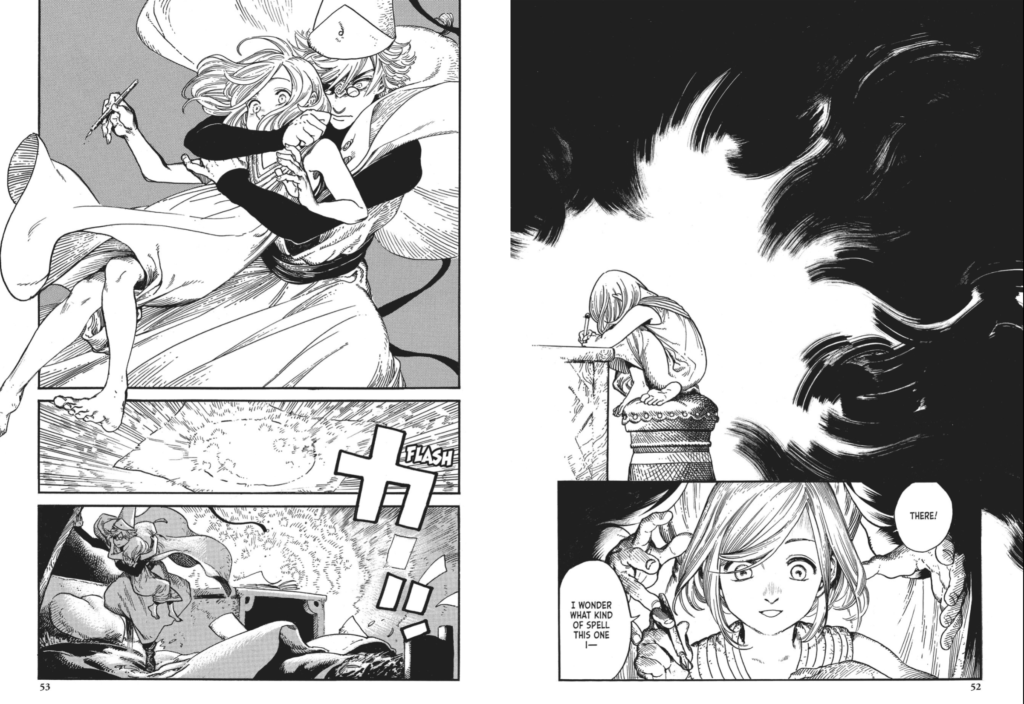
24:02 – David mentions that Witch Hat Atelier is “very similar to Ancient Magus’ Bride, a fantasy romance series by Kore Yamazaki. The Ancient Magus’ Bride manga is published by Seven Seas Entertainment, and the anime is streaming now on Crunchyroll. If you like Witch Hat Atelier, this is a good next read/watch for you, if you haven’t yet discovered it.
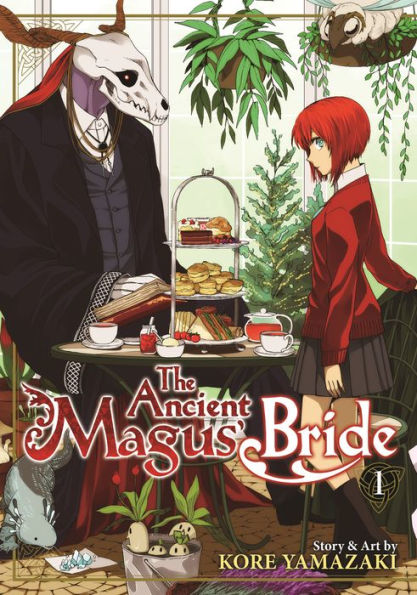
Another manga about a magical world, but maybe with a more fanservice-y vibe is Fire Force by Atsushi Ohkubo (creator of Soul Eater). The Fire Force manga is published by Kodansha, and the anime is streaming now on Crunchyroll.
24:25 [Deb:] Here’s an example of the flowing hair and garments, and extra ornamentation, in Witch Hat Atelier, in contrast to the usual stiff “action figure hair” that you might see in other manga/anime.
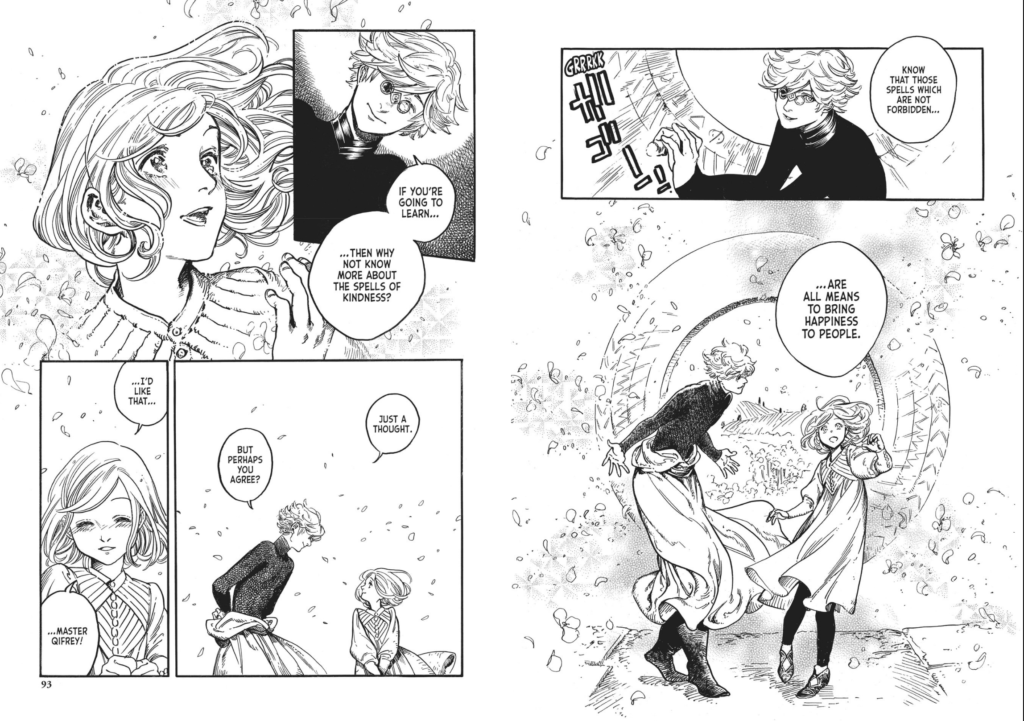
25:51 – David mentions a recent Witch Hat Atelier chapter that the Twitter-verse noticed because it points out that “harassing people is wrong.”
26:13 [Deb:] Here’s that “the boob pic” that Christopher mentions at the beginning of chapter 5:
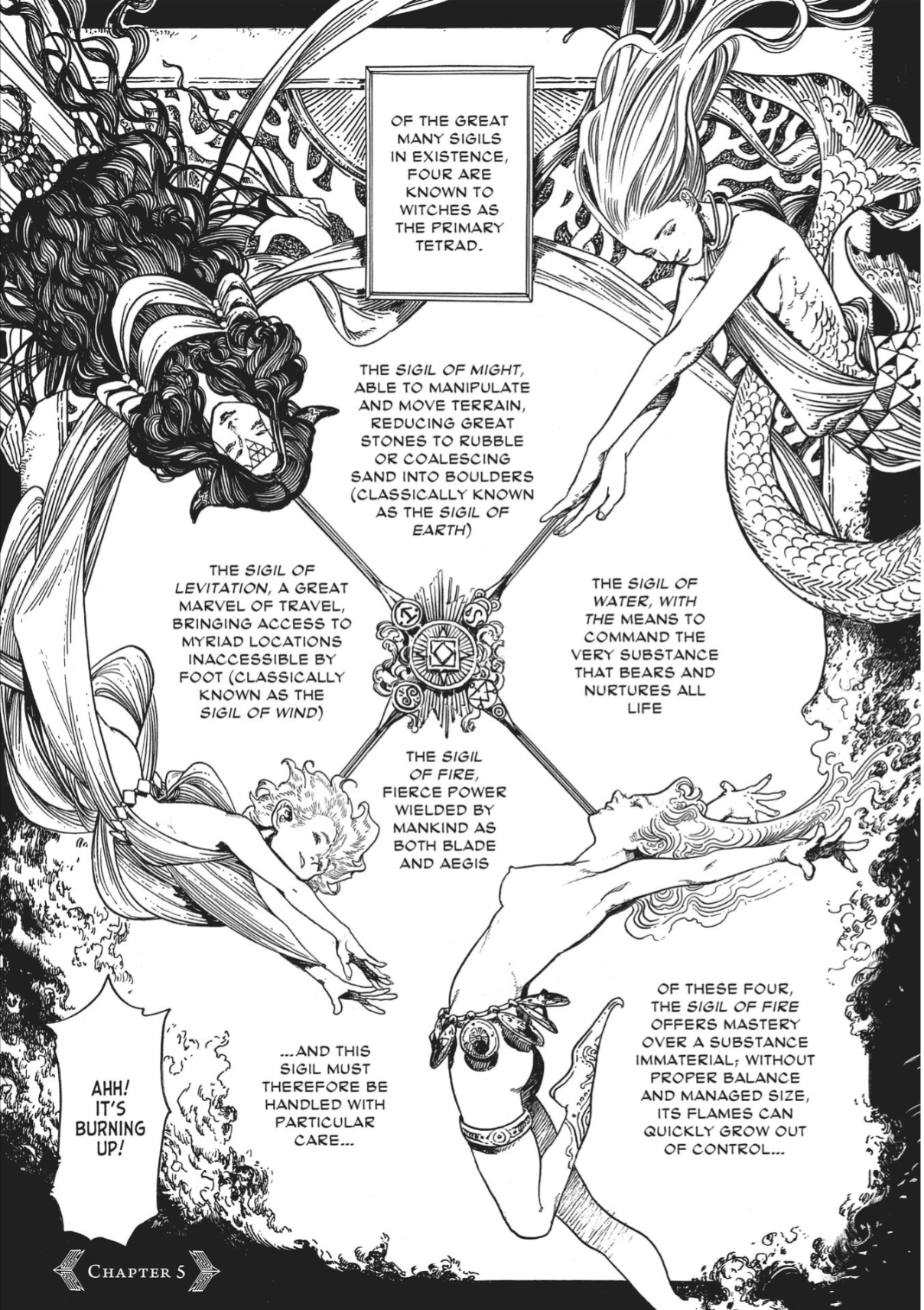
26:51 The original Dragonball manga has a lot of non-sexual nudity… and that gets it in hot water when it’s on library shelves in more uhm… conservative communities. Comics Beat gives a little backgrounder on this.
27:07 We blithely mention the Comics Code Authority, a by-product of a time when parents were concerned about comics content being too dark, violent, and/or explicit for younger readers. The Comic Book Legal Defense Fund explains what the “Comic Code Seal of Approval” was, when and why it was created, and why you don’t see it anymore.
28:18 The world of Witch Hat Atelier is diverse, but not in a patronizing way. Here’s the first appearance of Alaira:
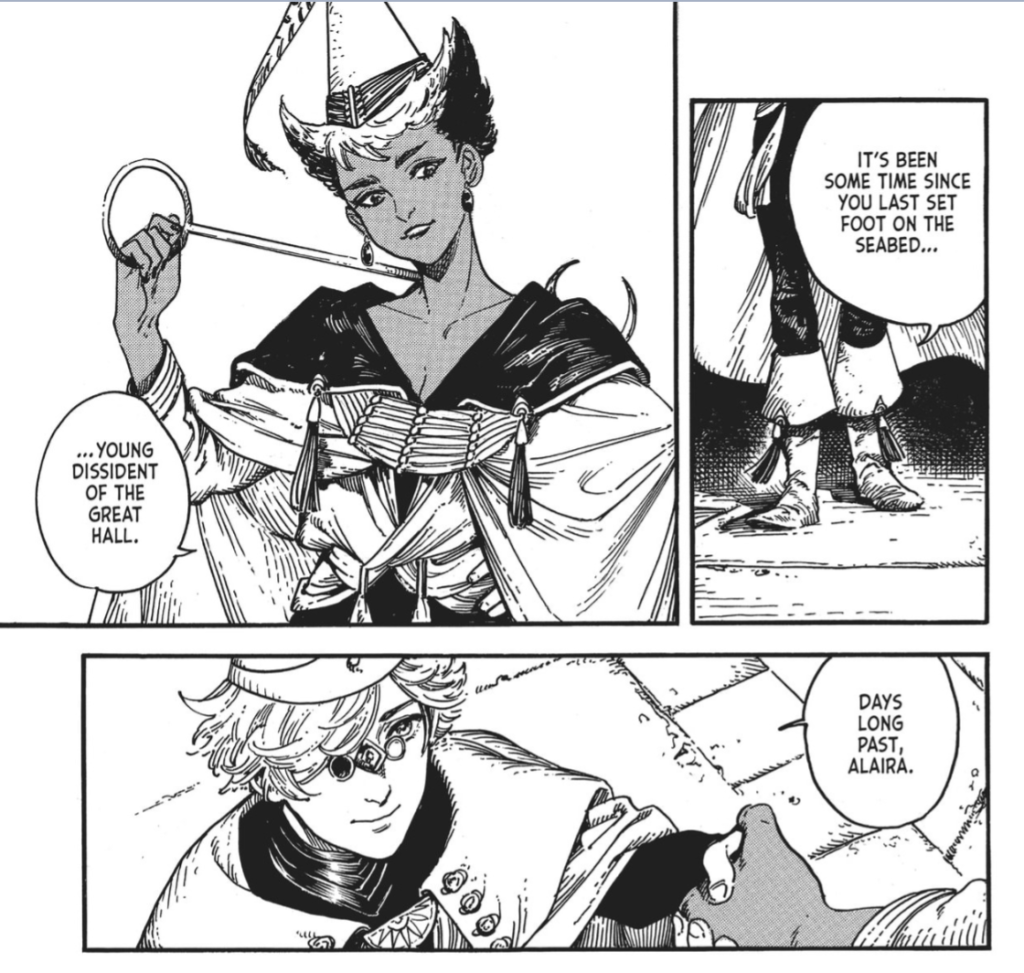
In later volumes, we meet witch elder Beldaruit in a four-legged goat chair — a magical way of getting around that’s not a wheelchair.
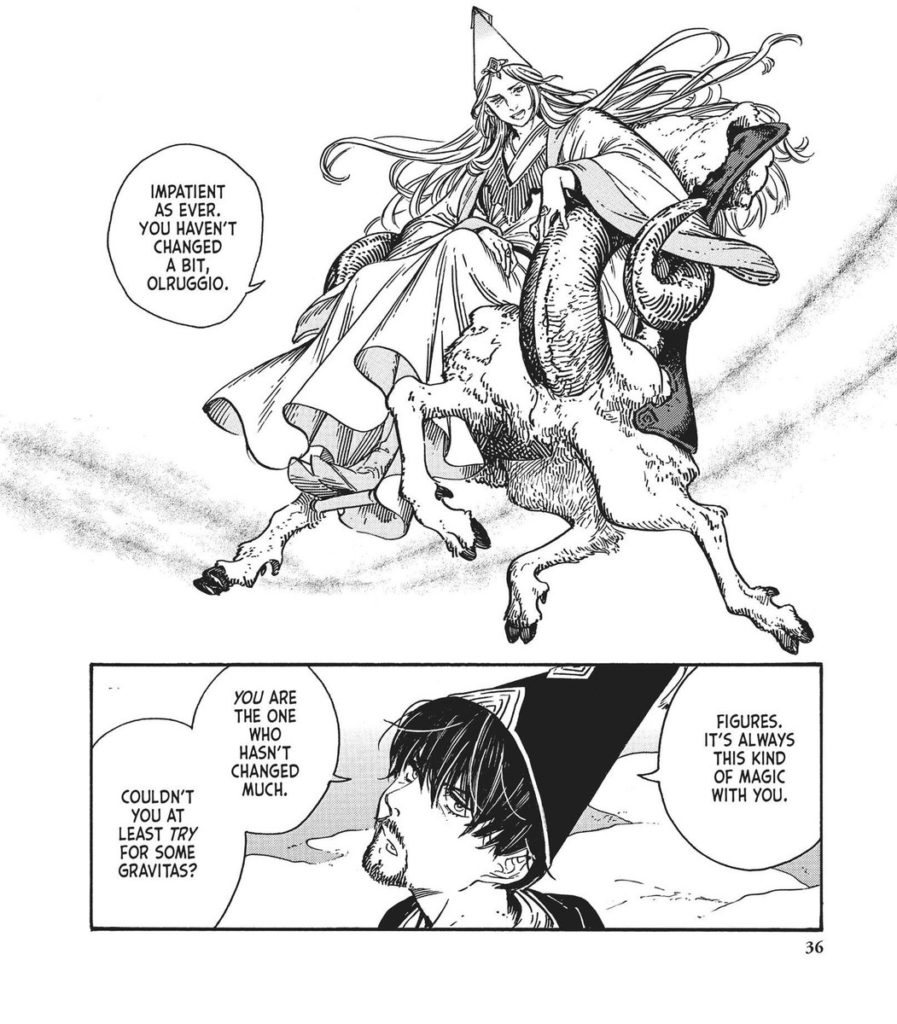
29:37 Black characters in Fire Force in the second or third chapter that are not based on geography / where they come from. Here’s some of them on the cover of Fire Force vol. 28:
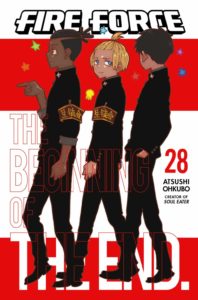
This is inn contrast to a more common trend in both comics, manga and anime, where they make mention that the darker-skinned characters come from a particular place / country / region of the world, like black Kryptonians coming from Vathlo Island on Kryton, and Killer B, the rappin’ ninja leader in Naruto and the rest of his crew from the Hidden Cloud Village.
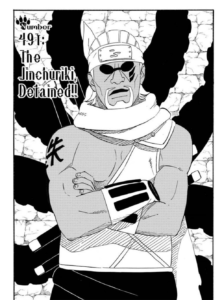
31:08 Chip’s fantasy series with Chris Anka, The White Trees is available now from Image Comics.
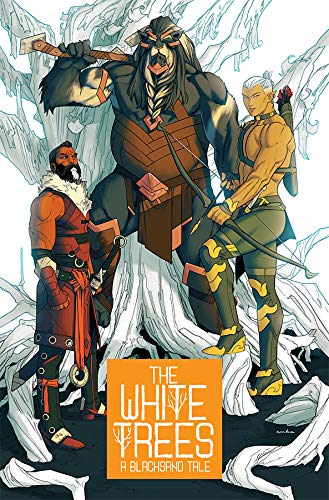
35:05 David mentions all the “triangles and nested triangles in the logo, in the cover on the hats, in the buildings…” This is likely a nod to the the “witch hats” that the title refers to — that the good witches have cone hats, the bad witches have the traditional brimmed ‘witches hats.”
Here’s the witch with the mask who gives Coco a forbidden book of spells. Is this witch wearing a “brimmed” hat or not? Is it a “good” or a “bad” character? Keep reading this series to find out!

38:20 Eniale and Dewiela is Shirahama’s first published manga series. Originally serialized in Enterbrain / Kadokawa’s Fellows! magazine, this seinen manga comedy series is about ‘a naive angel woman and a dirtbag devil woman who are often at each others’ throats,” and the wacky hijinks they have when they just want to hang out on earth and go shopping. Same beautiful art, but maybe a little more saucy and uhmm… a little less all-ages friendly. 😉
Eniale and Dewiela Vols 1 – 3 is available from Yen Press now.
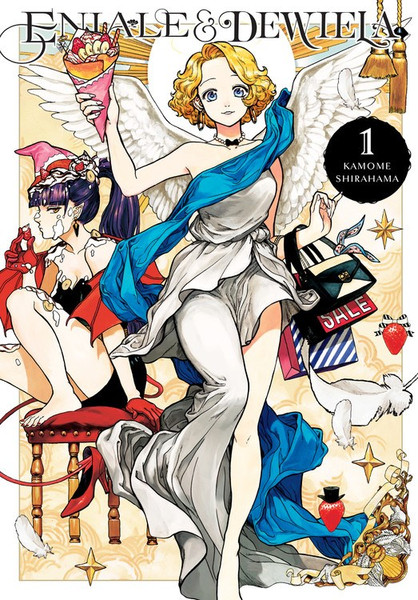
40:00 – Deb is referring to Olruggio the dark haired witch character who is more cynical than Qifrey. He’s featured on cover of Witch Hat Atelier vol. 6:
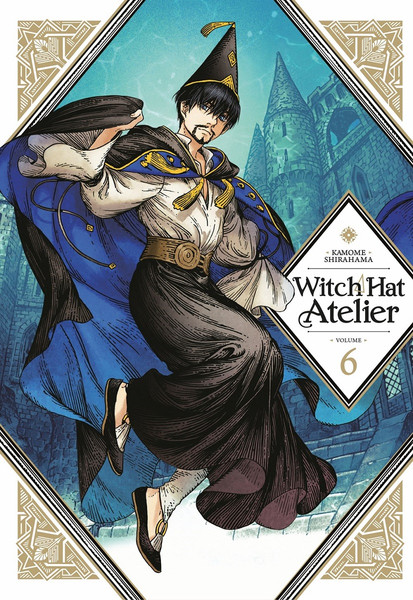
40:15 Witch Hat Atelier / Kitchen of Witch Hat (Japanese title: とんがり帽子のキッチン / Tongari Boushi no Kitchen) food manga /side stories by Kamome Shirahama / drawn by Hiromi Satou has 3 volumes out so far in Japan. It hasn’t been announced for English release yet, but it is available in French from Pika Edition.
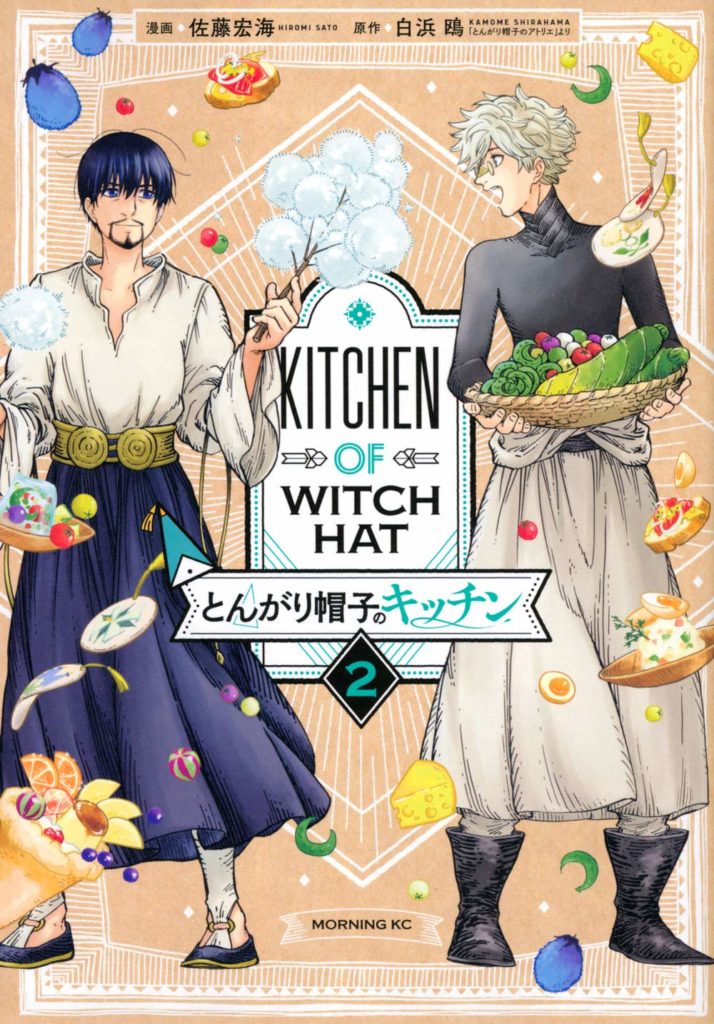
43:09 Chris mentions a moment on page 20, when Qifrey is leaning on the side of the panel while his arm hangs down – “it’s such a natural way of standing.”
[Christopher:] It shows that the artist wants to do something special with the work, it shows that the author is thinking about the ways in which magic “breaks the rules” of the world, it’s just a pretty illustration… It shows that there’s a ton of care and thought in this manga, and I’m SO excited about that!
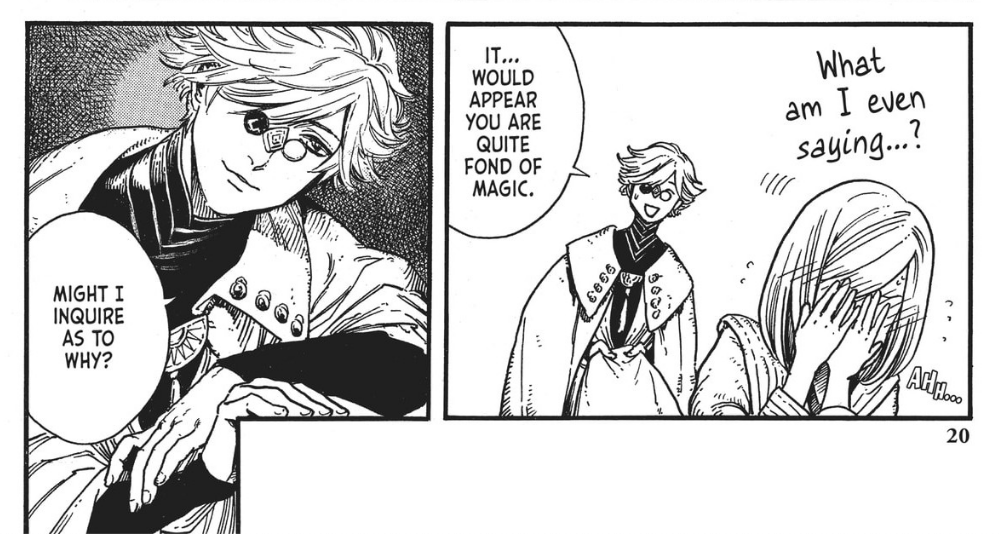
46:20 [Deb:] Kamome Shirahama was a panelist on the manga publishing biz panel at San Diego Comic-Con 2015. Alas, no recordings or transcript of the panel, but it was great to meet her then — we hope she can come back to visit her fans at a comics show sometime in the near future. She did create this amazing poster for Toronto Comic Arts Festival, but thanks to that dang pandemic, her planned visit in 2020 just didn’t happen. Maybe someday…

47:30 THE BREAK!
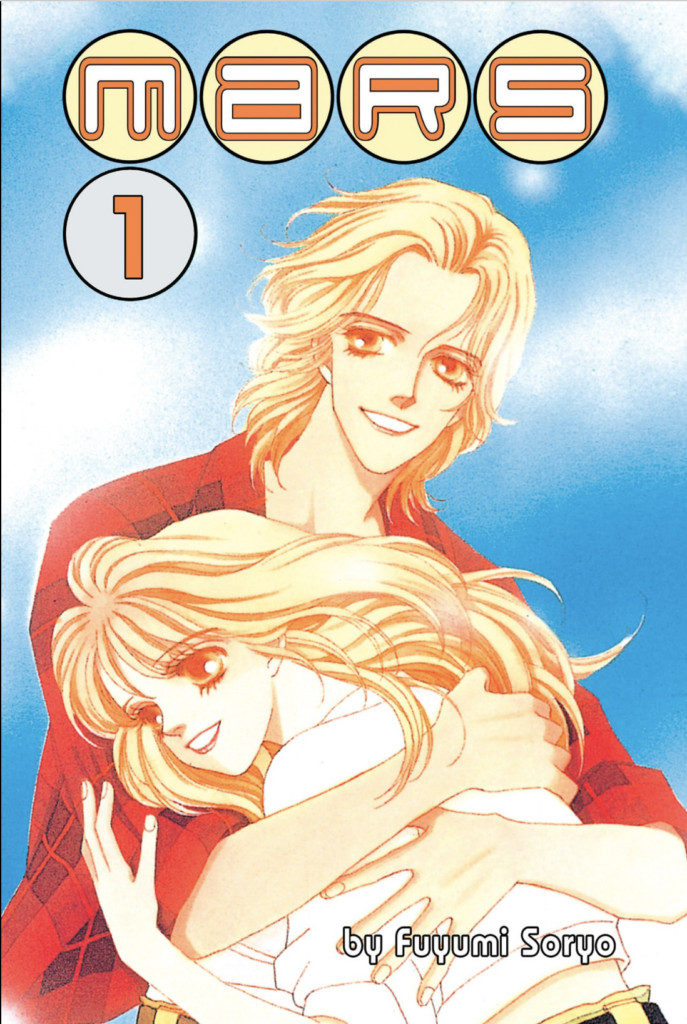
ComiXology Manga Must-Reads
Mars Volume 1
By Fuyumi Soryo
There are no English translation, lettering or editing credits in this edition
Published by Kodansha (Digital-Only)
Check out MARS Volume 1 on ComiXology Unlimited. If you’re new to ComiXology Unlimited, give it a try with a 30-day free trial.
48:34 [Deb:] This week’s Manga Must-Read is a shojo manga classic about a shy girl and a ‘bad boy’ who fall in love and well, go through a lot of drama along the way.
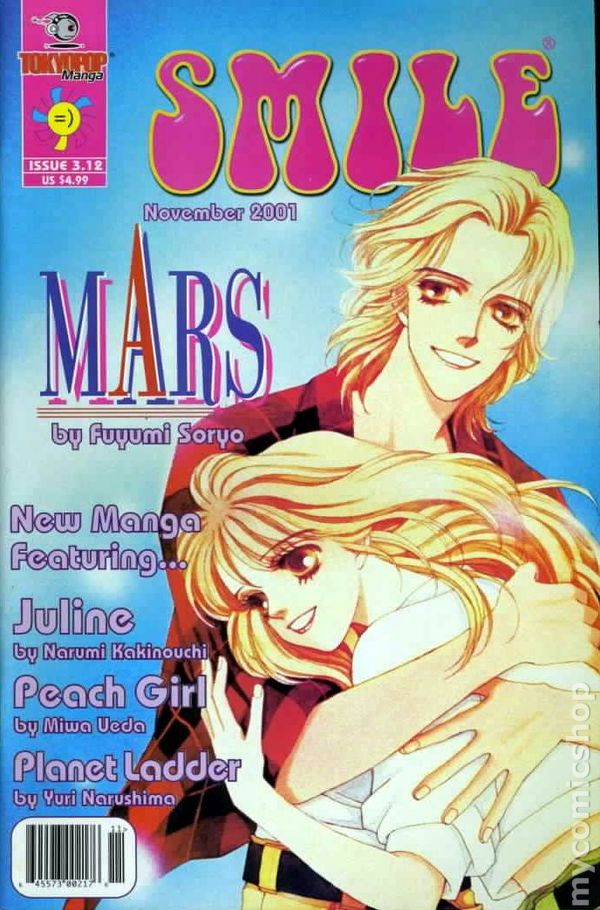
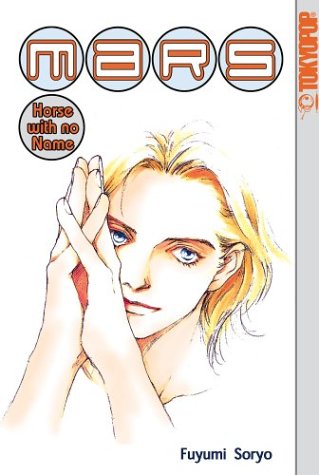
It was originally serialized from 1996 – 2000 in Bessatsu Friend magazine, and is a 15-volume series that was published by Tokyopop from 2002-2003, with its prequel series, Mars: A Horse With No Name (MARS外伝 名前のない馬, MARS Gaiden Namae no Nai Uma) published in 2004 in English. The series debuted in Tokyopop’s short-lived shojo manga magazine, Smile in October 2001. With many of the print volumes now long out of print, Kodansha has brought it back as a digital-only release, so new fans can discover this romantic drama once more.
While there isn’t much of Fuyumi Soryo’s manga available in English, she’s been active as a creator. Her most recent series is Cesare: Hakai no Sōzō-sha (Japanese: チェーザレ 破壊の創造者 – Cesare: The Creator of Destruction). The story follows the early life of Cesare Borgia, a 15th-century Italian aristocrat, politician, and mercenary leader. It was serialized in Kodansha’s seinen manga magazine Morning from March 2005 to November 2021. While the series did get a French release, an English release seems unlikely, at best.
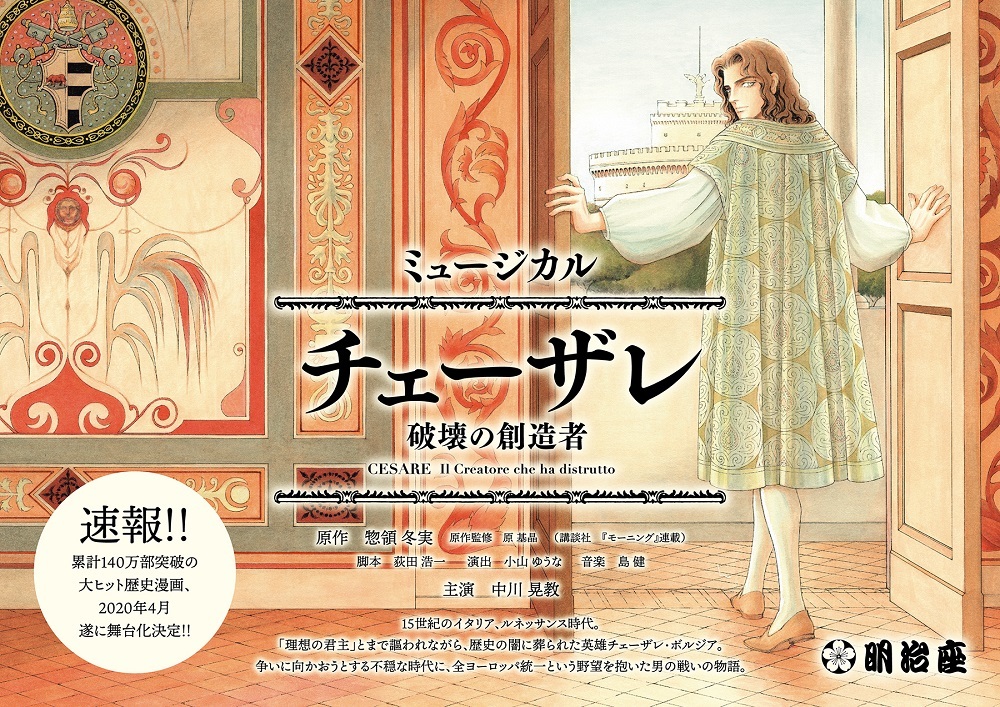
49:32 Description of MARS from Kodansha:
Super-popular motorcycle racer Rei and shy, neurotic art student Kira are worlds apart … until one fateful day brings them together. Rei stumbles upon Kira in the harassing hands of her sleazy art teacher and saves the quiet girl from his clutches. And when the resident school pretty boy plants a kiss on a statue of Mars in the studio, Kira finds herself drawn in and even summons up the nerve to ask him to model for her!
-Kodansha
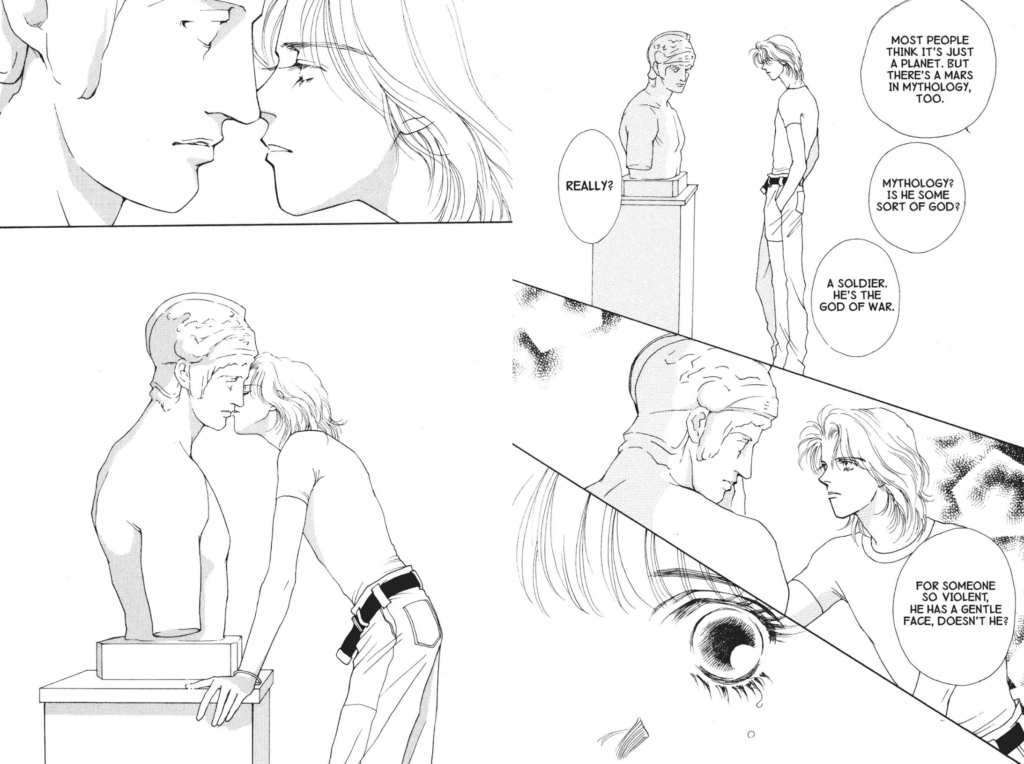
[Christopher:] This moment, which could read uncharitably as ‘queerbait’ since this is a pretty hetero series, instead to me revealed real depth to the characters and their place in their worlds. It’s an amazing image to put into the first chapter of a popular shojo manga series, particularly in the 1990s, and showed just what an ‘outsider’ Rei really is. A real, as we say, bad boy.
50:43 The teacher with wandering hands, and the bullying that Kira experiences — all told from a woman’s perspective.
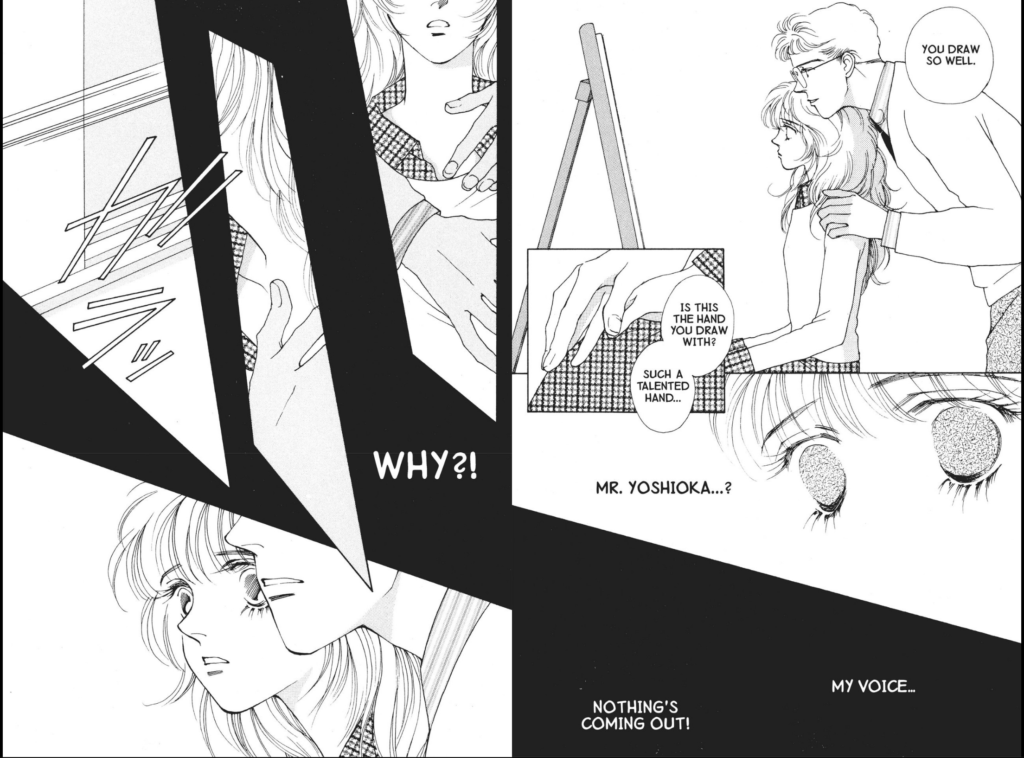
52:17 [Christopher:] I brought up Othello by Satomi Ikezawa as another series that dealt with bullying and harassment among high school girls. It was a really powerful release at the time, and very easy to recommend and sell to schools and libraries because of its firm (albeit slightly extreme) hand. Unfortunately, the series is out of print now (digital release in future?), but here’s what it’s about, and if you liked MARS, you’ll probably like this too:
Yaya’s high school friends haven’t been very nice. They call her “Yaya the cry-ya! Yaya the misfi-ya!” But no matter how badly they act, Yaya is just too naïve and trusting to believe the worst of her friends. Hard-rocking, butt-kicking Nana is just the girl to grab hold of Yaya’s timid demeanor and turn it upside down. Nana exposes Yaya’s “friends” as slime bags, doles out punishment, and does it all with style. Can there be anything that terminally shy Yaya and hyper-confident Nana have in common? Well, for one thing, they’re the same person. . . .
-Del Rey Manga
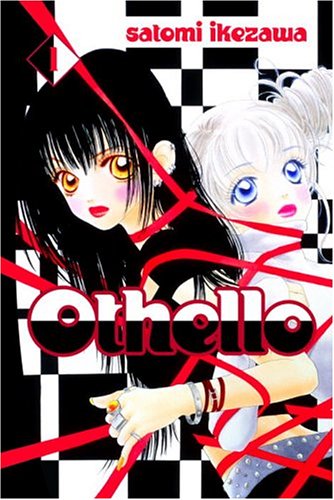
53:02 “I want you to model for me.” Both David and Deb react to the great page design here, and how Soryo draws the stairs in this scene where Kira surprises Rei by asking him to be a model for her drawings/paintings.
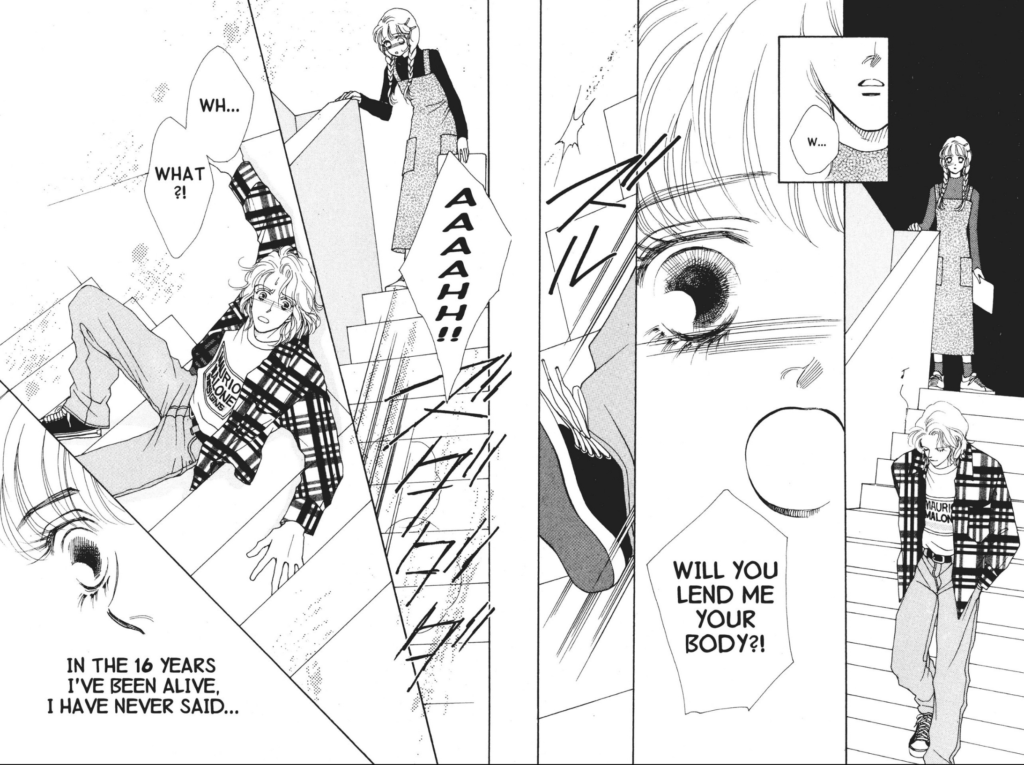
53:19 Rei falls asleep after talking about nihilism:
I guess what I need to enjoy shojo manga is a main character who maybe thinks about dying all the time.
-David Brothers
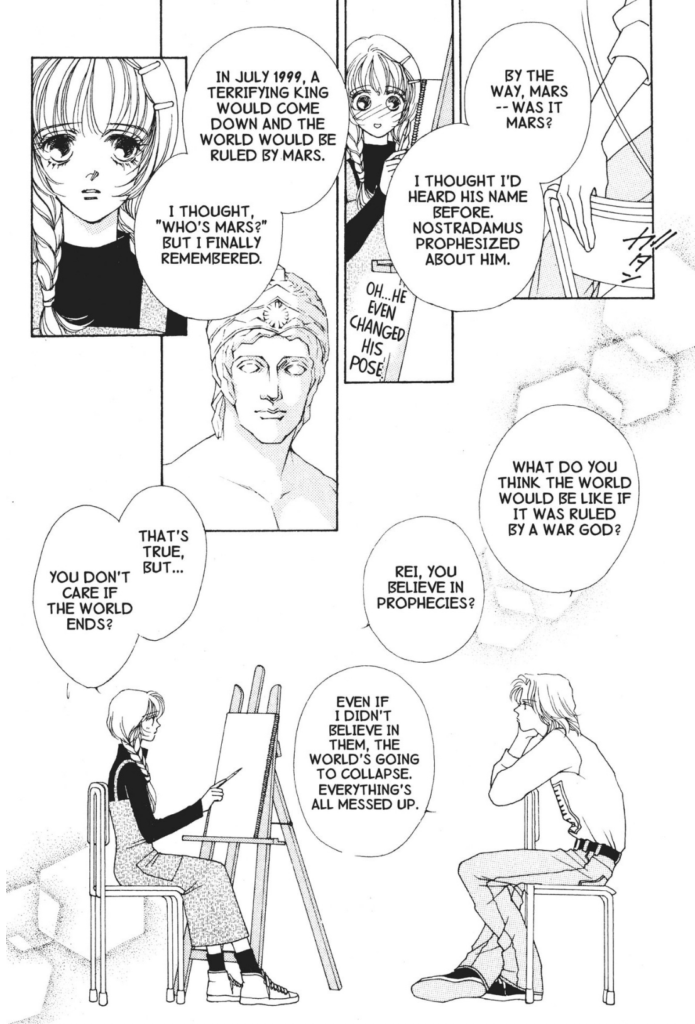
55:35 When rival Harumi threatens Kira by wielding a barbell to break her hand, Kira tells them that she won’t give up on Rei, even if it means that she’ll get hurt. She’ll find a way to keep drawing, no matter what.
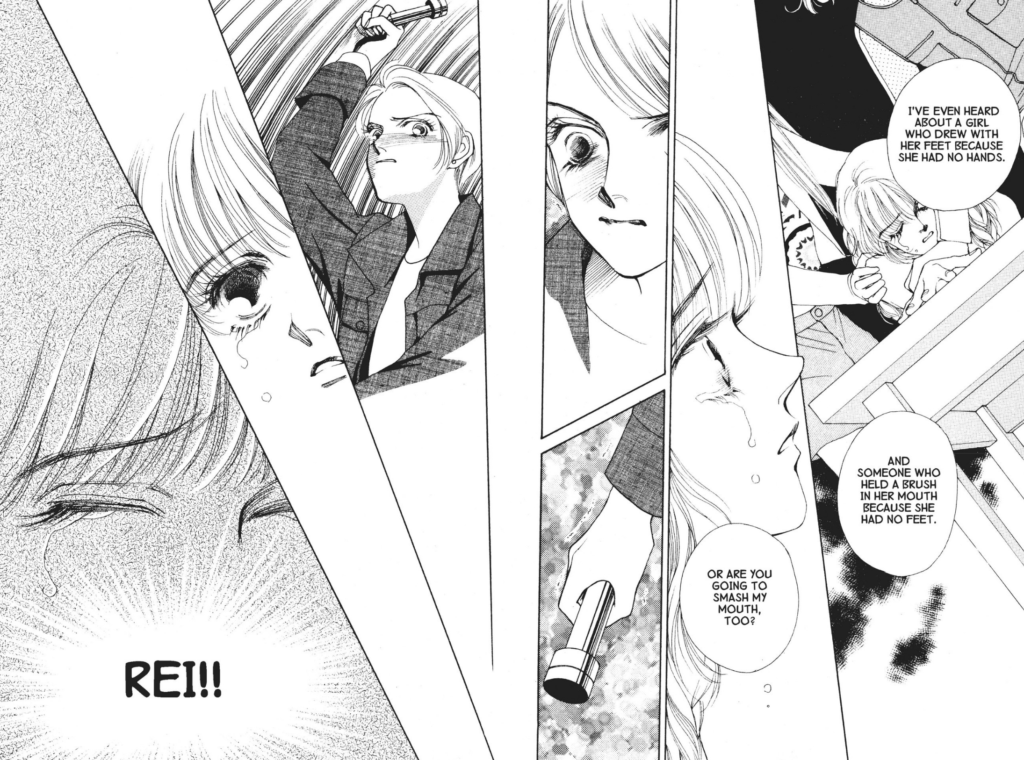
56:40 Kira hears Rei’s motorcycle as he rides away, and says that it sounds like crying. David mentions the part of the page where the hand is on the window too.
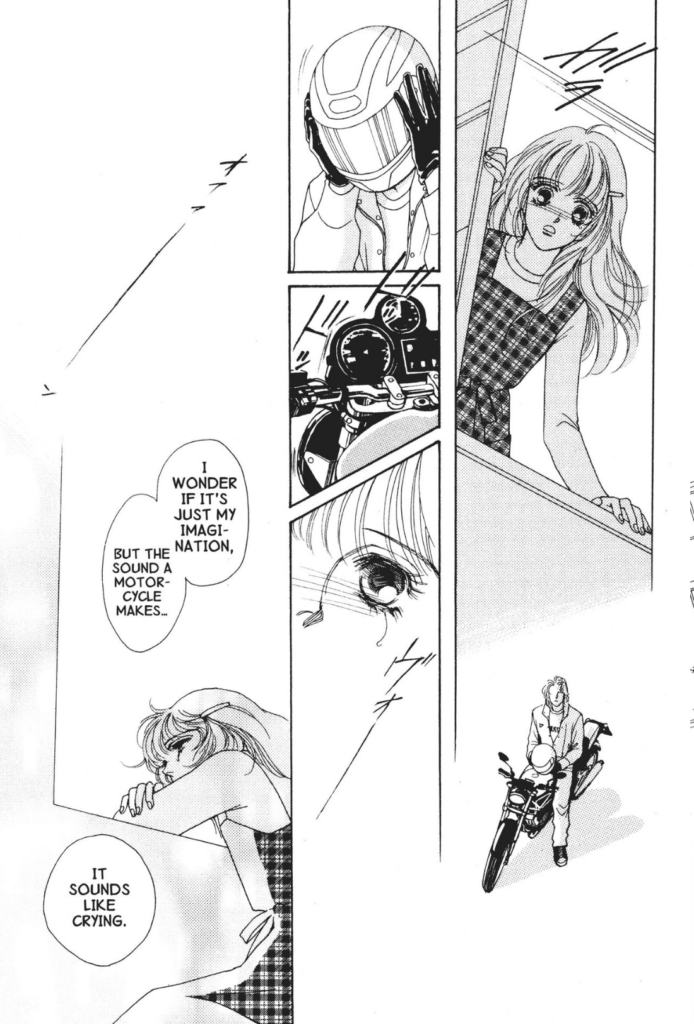
57:40 Deb calls out this 2-page spread of the vertical panels against the apartment complex in the background. A really nice way to set a scene where it’s just two people talking.
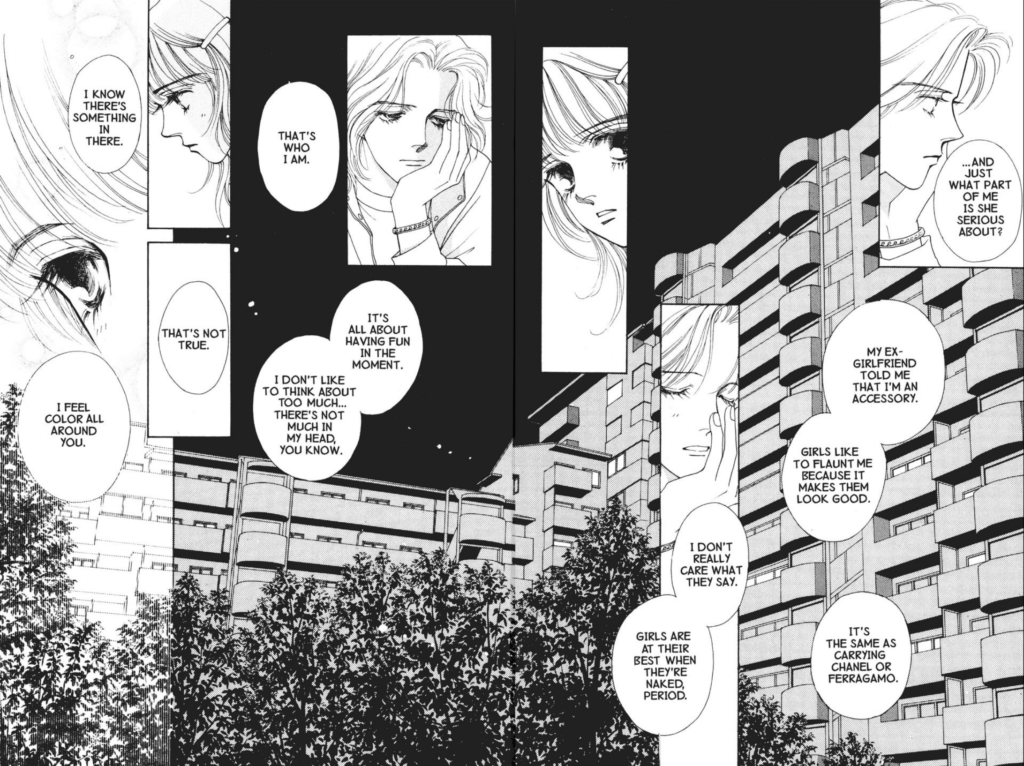
58:13 Here’s that 2-page spread where Rei and Tatsuya are squaring off, with the tension conveyed by the page composition and the screentone in the background.
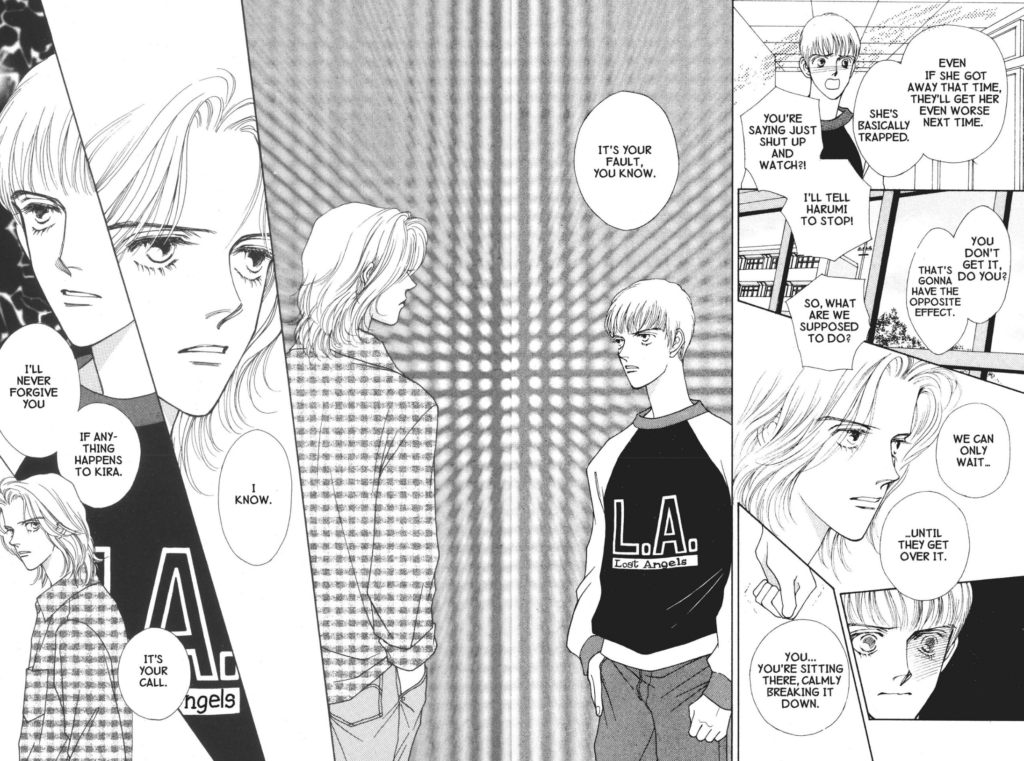
58:45 Kira’s mother and child drawing is likely modeled after this painting by Austrian painter Gustav Klimt.
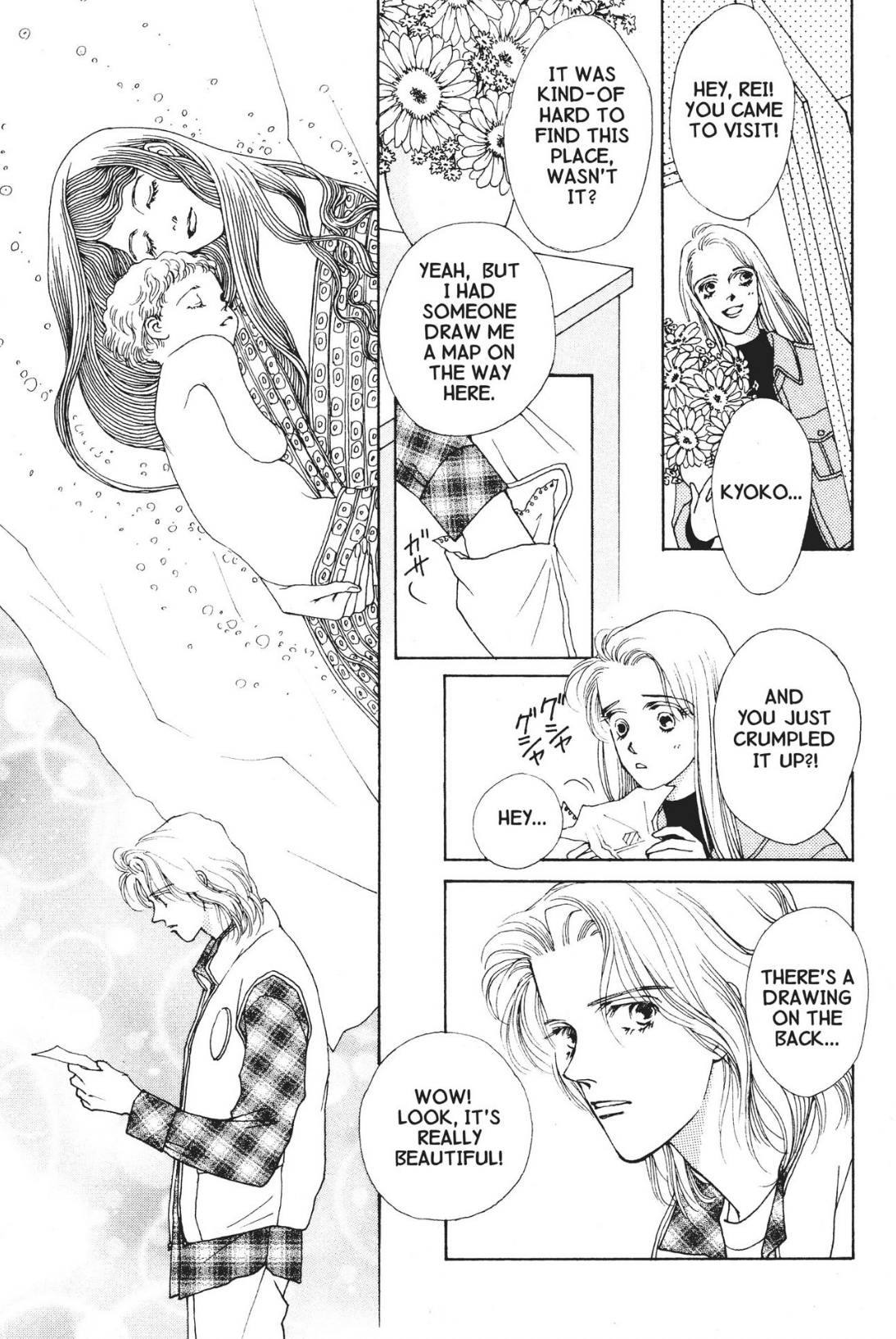
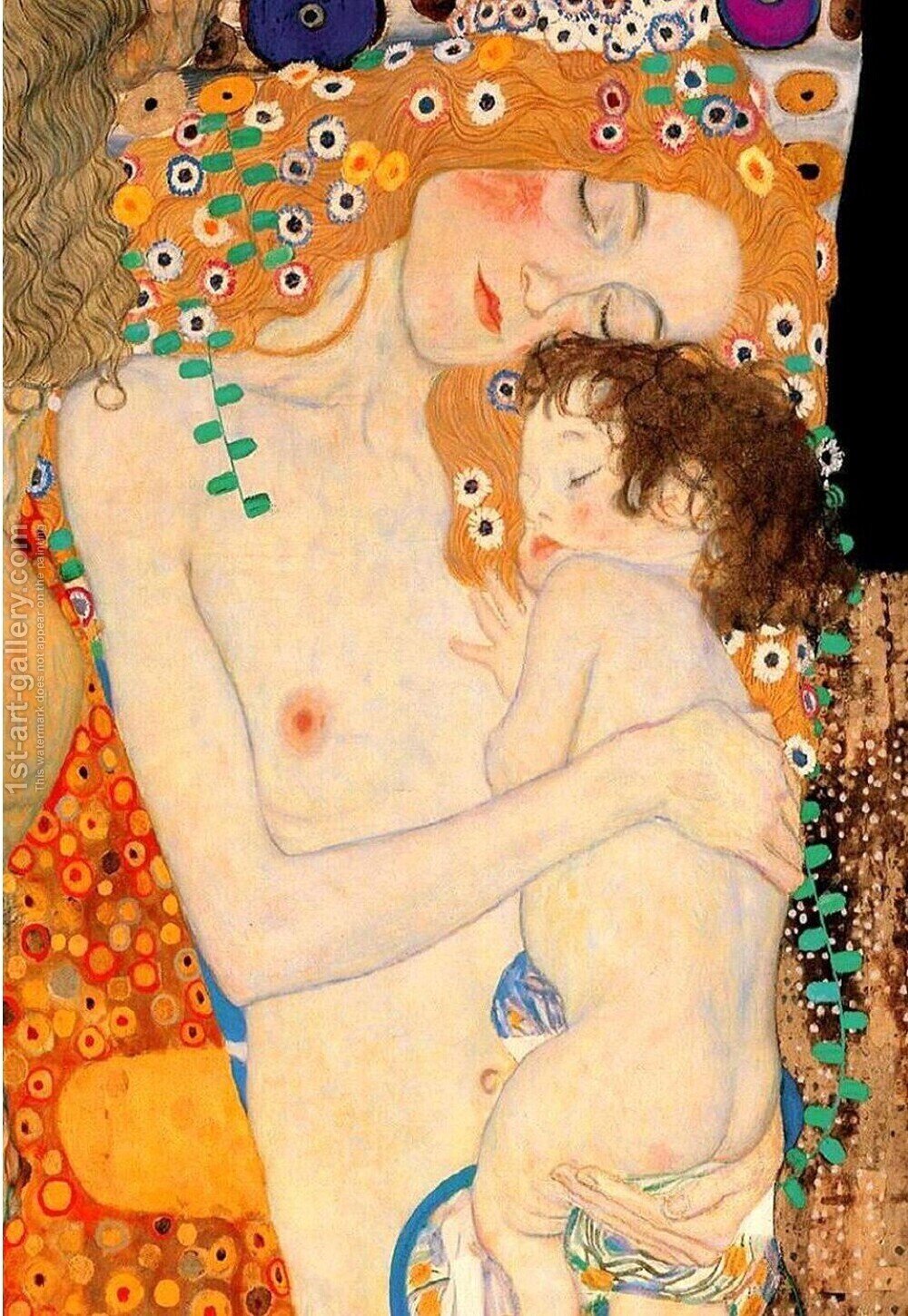
58:34 David mentions this 2-page spread on pages155-156, where Rei and Kira are embracing. Rei realizes that he’s attracted to Kira, but he’s also conflicted because he knows his friend Tatsuya also has feelings for her. “I can’t hurt my friend, even though I like her alot.” It’s a tender, beautiful pose that conveys a lot in two pages.
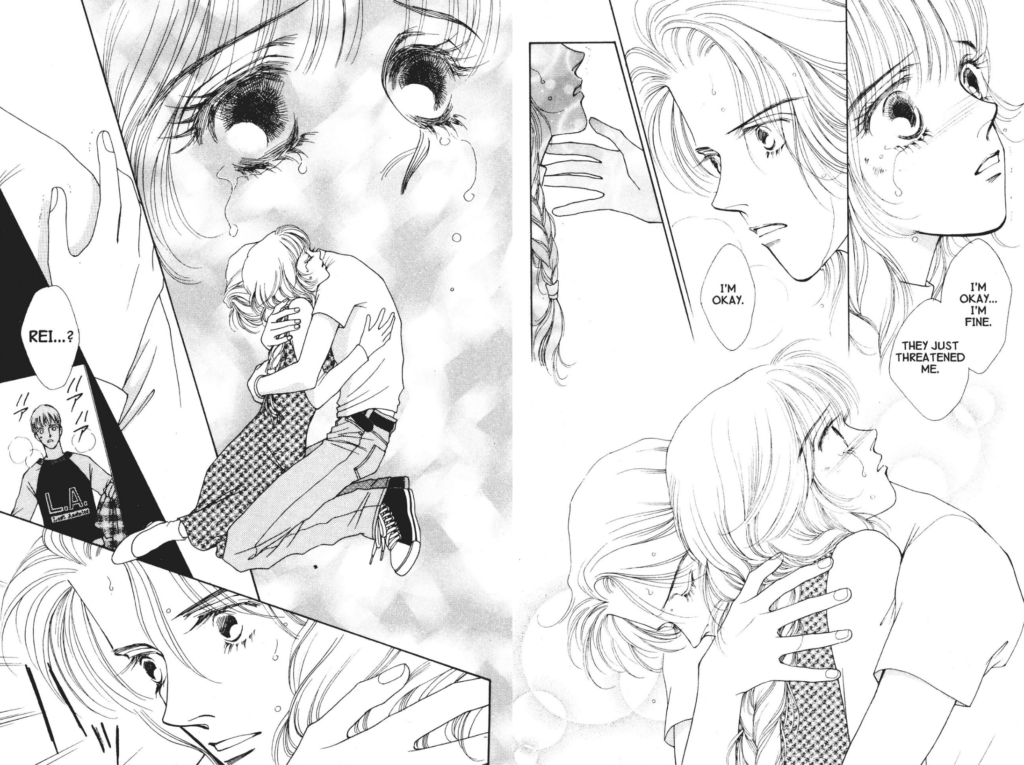
01:01:30 The stakes are high in this story! Mr. Yoshioka ramps up his threats on Rei by removing the brakepads on his motorcycle, nearly causing an accident…
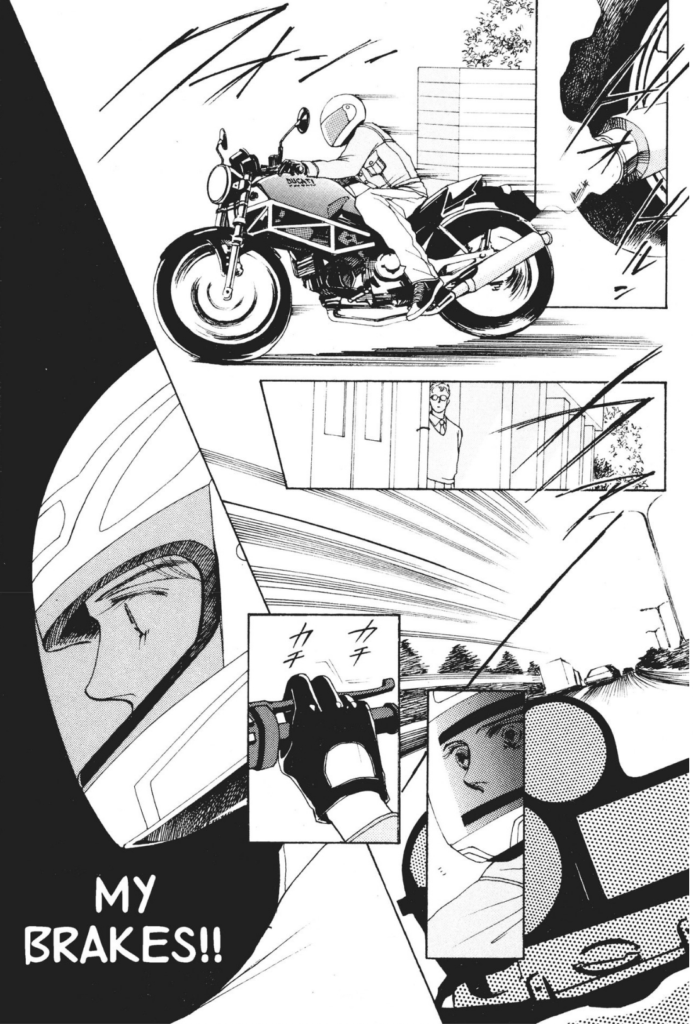
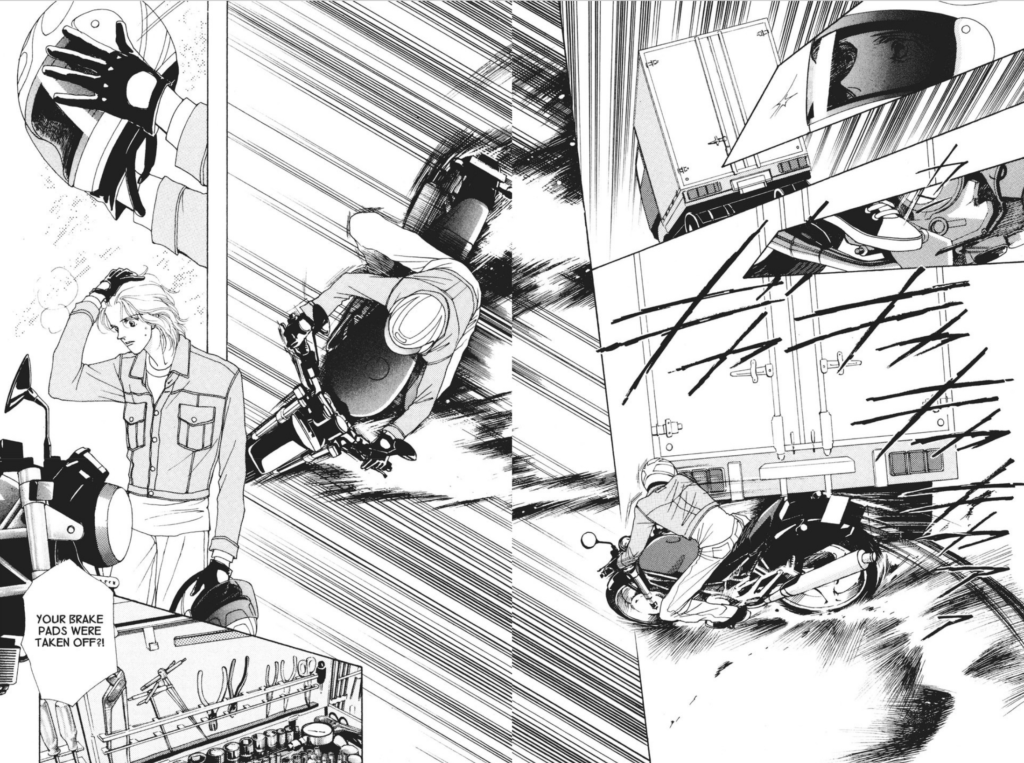
Later, Rei responds to Mr. Yoshioka in a very Rei kind of way:
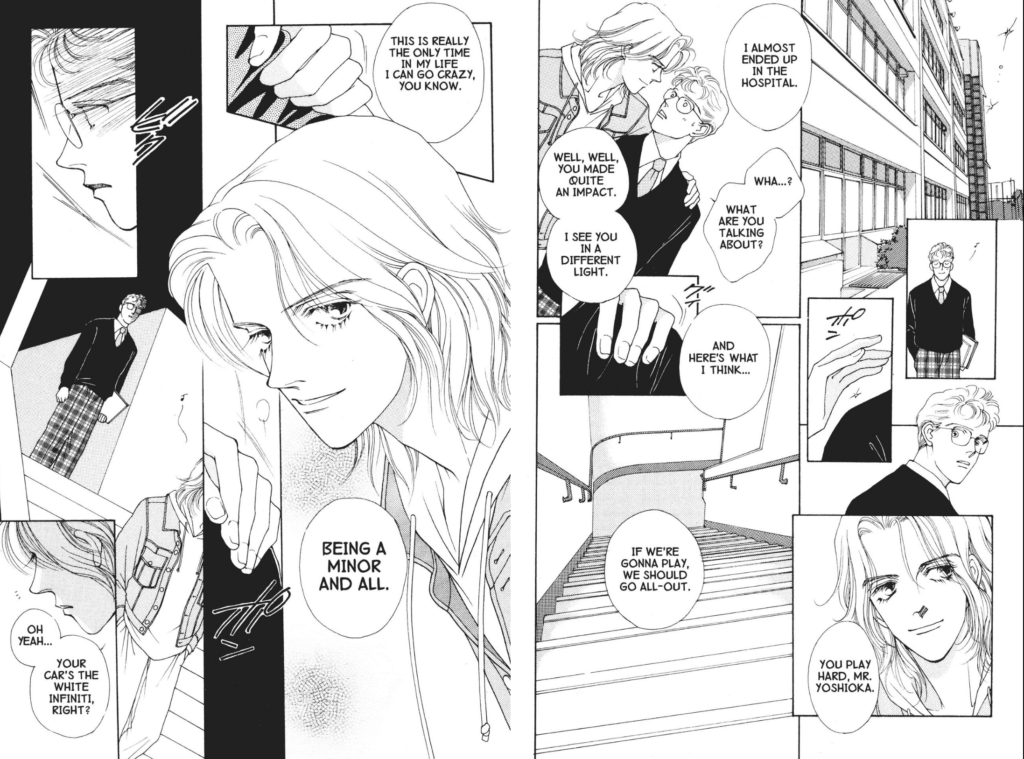
01:02:00 – Fuyumi Soryo’s other series in English is Eternal Sabbath. Published by Del Rey Manga in 2006, this sci-fi/drama series is currently out of print and not available in digital format… yet.
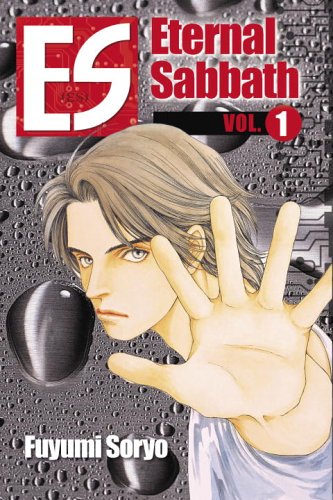
Here’s the description of the series from Del Rey Manga:
Ryousuke Akiba calls himself ES, a code name taken from a mysterious scientific experiment. Ryousuke will live to be at least two centuries old and possesses strange mental powers: He can enter people’s minds, discover their darkest secrets, even rearrange their memories so that complete strangers will treat him like family. Ryousuke acts not out of malice but for survival–wandering Tokyo for reasons known only to him. No one recognizes him for what he is . . . until Dr. Mine Kujyou, a determined researcher, meets someone who challenges everything she knows about science–ES, possessor of the Eternal Sabbath gene. But is he the only one?
-Del Rey Manga
Hopefully, we’ve inspired you to check out Mars! Let’s close out this one with a quiet, lovely moment from this shojo manga romantic drama:
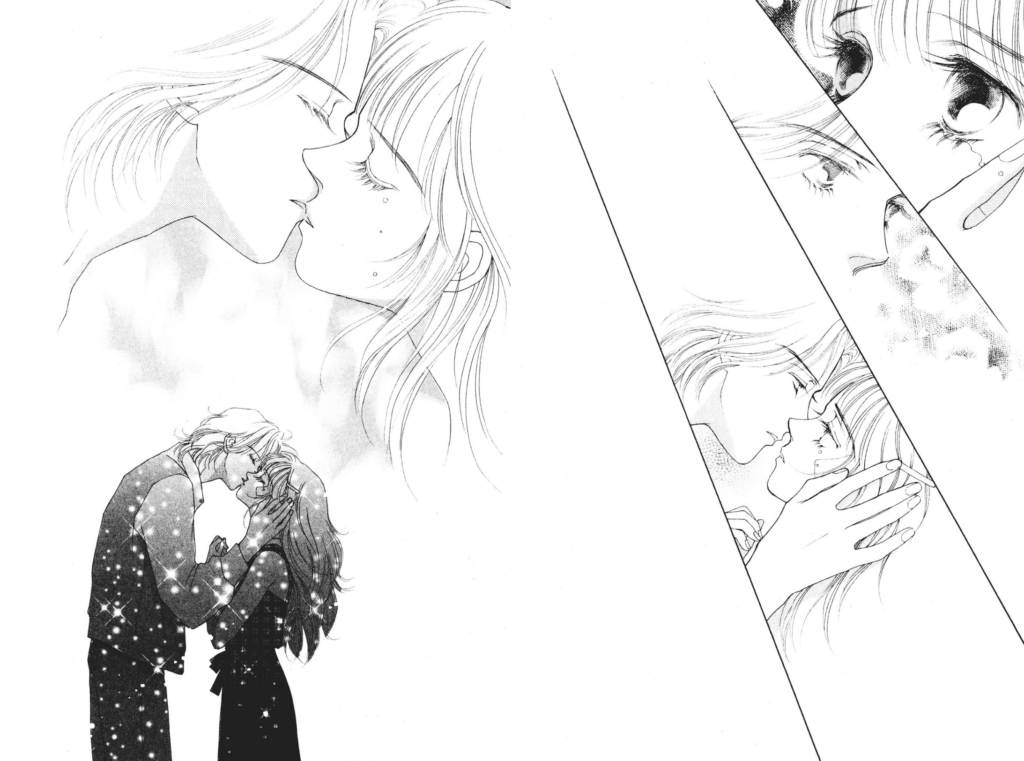
Check out MARS Volume 1 on ComiXology Unlimited. If you’re new to ComiXology Unlimited, give it a try with a 30-day free trial.
THE SECOND BREAK!
1:03:00 – SHOUT-OUTS
DEB – shouts out Chip’s Substack newsletter because he’s too modest to do it.
He’s workin’ so hard on making these books that he’s not able to enjoy other kinds of entertainment lately, so please buy more of his comics, Public Domain and Batman!
CHRIS – shouts out Gay Erotic Art in Japan, edited by Gengoroh Tagame and The Passion of Gengoroh Tagame (vol 2 coming in September from Fantagraphics)
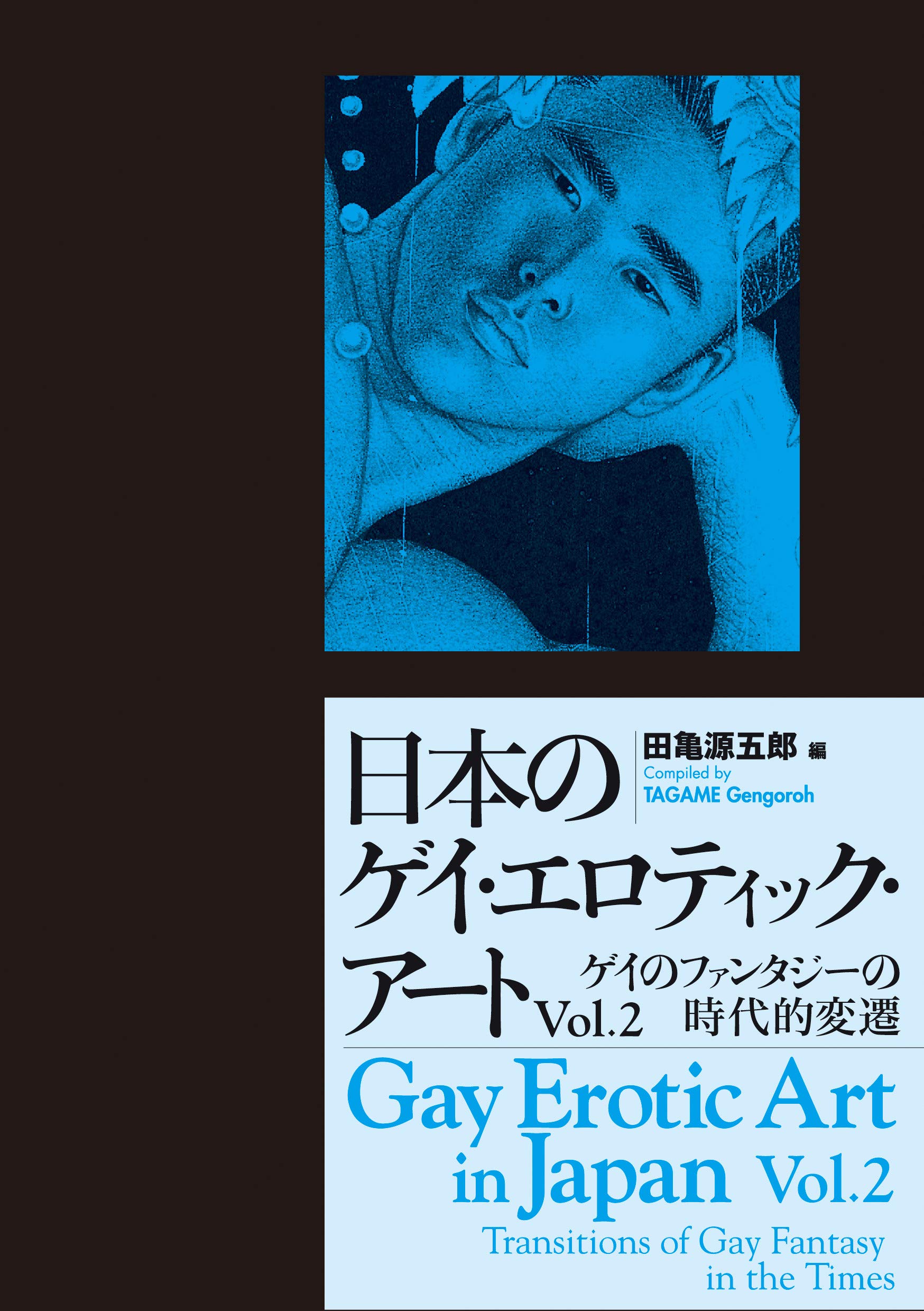
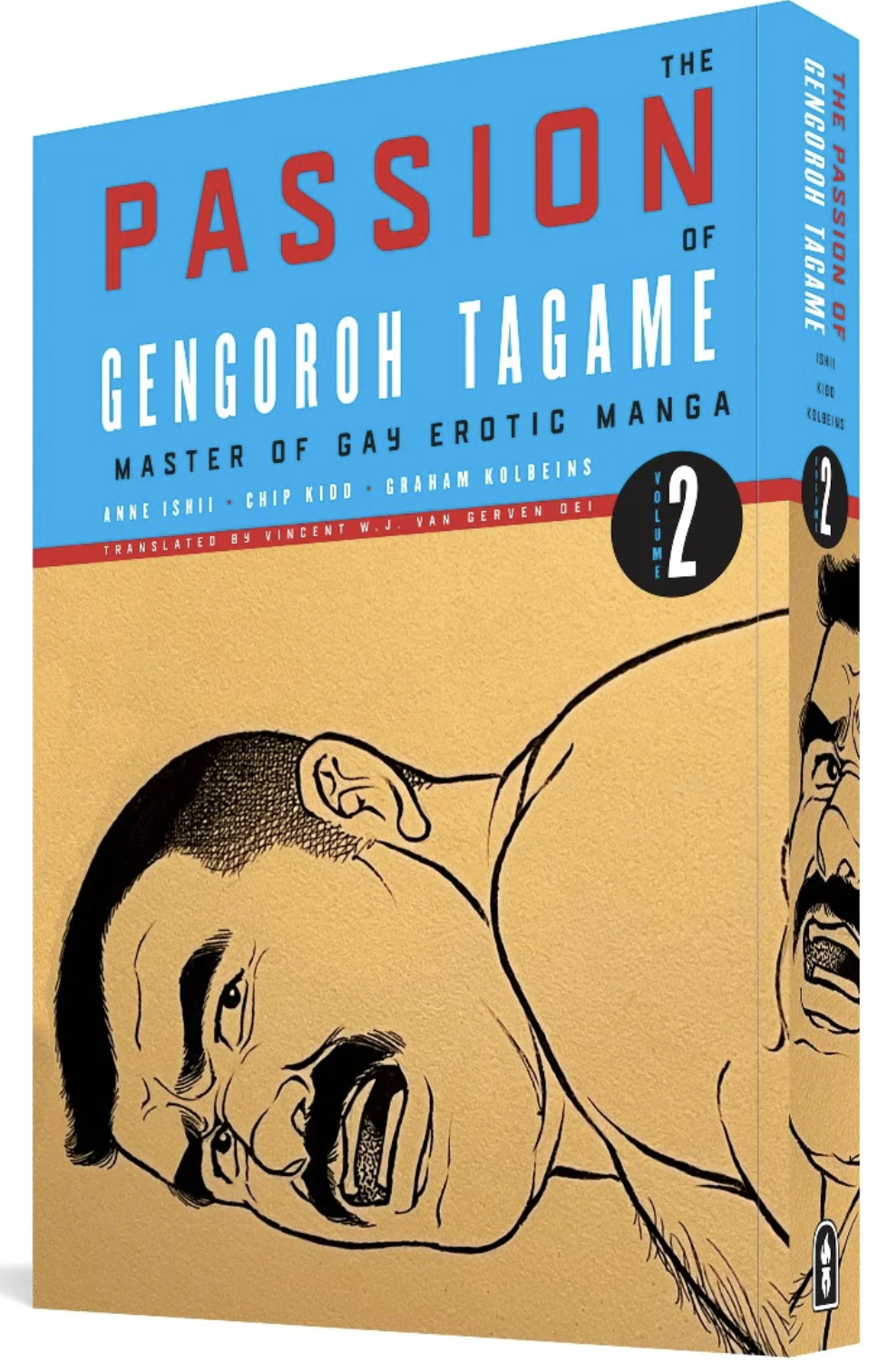
DAVID – continues to love Barry on HBO, but also shouts out three more TV series, all tied together with a theme of petty crime that he’s been enjoying:
South Side on Comedy Central – a comedy/drama set in Chicago about a rent-to-own company:
Reservation Dogs – Four teens are small time crooks on a Native American reservation. See the season 2 trailer from FX:
Brassic by Joseph Gilgen on Hulu – a semi-autobiographical series about his friends “who are semi-professional thieves who aren’t very good at it,” that’s “super fun, really touching.”
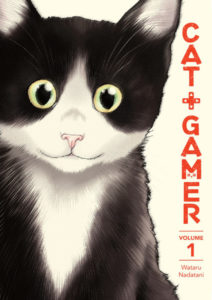
DEB picks… another manga. This time, it’s Cat + Gamer – (Dark Horse), a wholesome manga about a young woman who’s a serious, stressed-out office worker by day, and a hardcore gamer by night. She’s a single gal who adopts a kitten even though she’s never owned a pet before. Her gamer mindset leads her to strive to ‘level up’ her new feline companion and level up to be a great pet owner too.
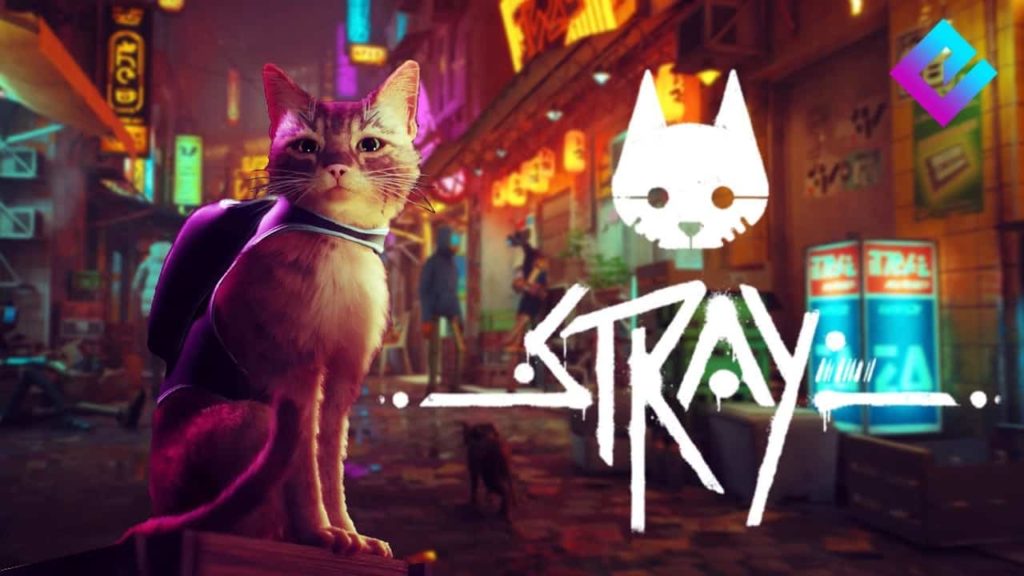
DAVID adds another cat pick! Stray – a new PlayStation game about a stray cat in a cyberpunk world.
That’s it for this week! Thanks so much for listening! Please support your local comic and manga specialty shop when purchasing these books, and you can find one near you at comicshoplocator.com. You can also check your local library for print and digital lending options, they have TONS of manga! Also, check us out at MangasplainingExtra.com — we’ve got some cool new manga series that we’re hoping to announce very soon. Finally, thanks to D.A.D.S. for their musical accompaniment this episode.
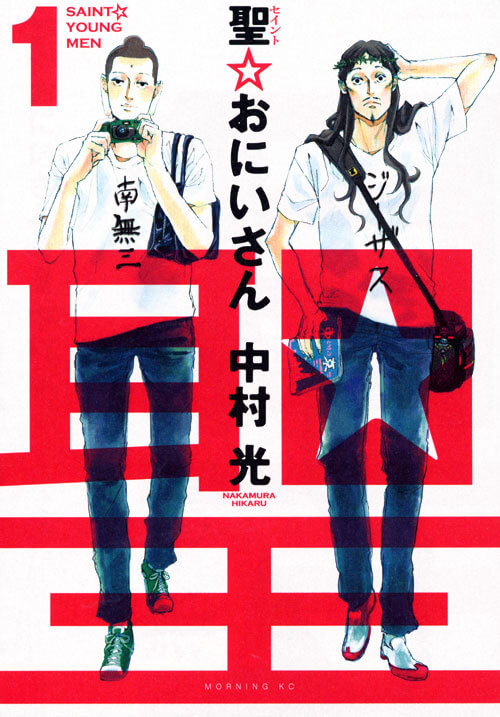
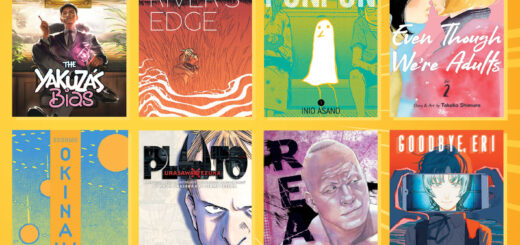
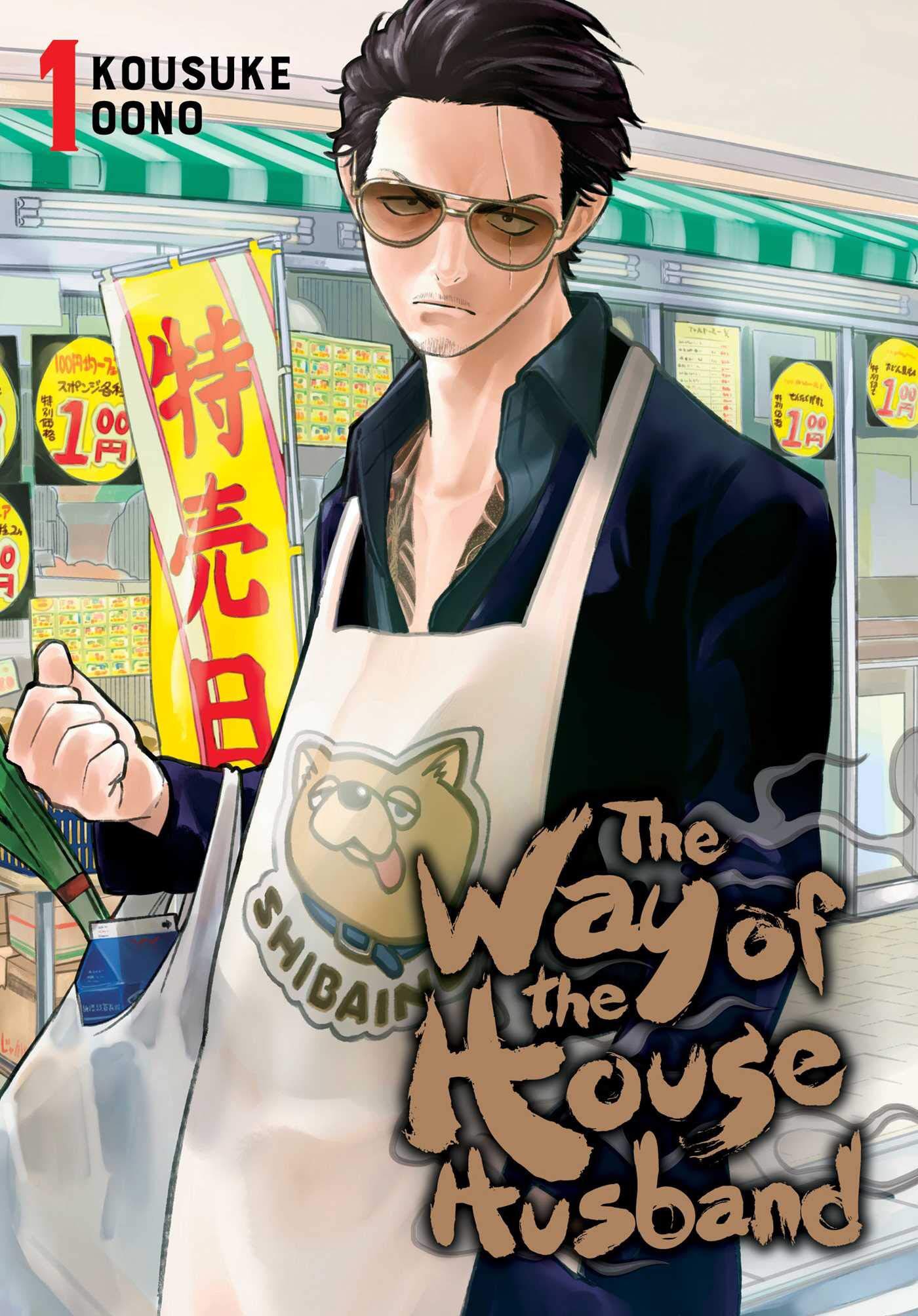
Ah I’ve been waiting for this episode! I agree that Witch Hat Atelier deserves ALL the attention and more. I hope they take time to make the anime as thoughtfully crafted as the manga.
I think I’m drawn to the series, not only because I’m a nerd and an artist who takes inspiration from The Golden Age/Art Deco/illustrated manuscripts, but also because of the nostalgia of gentle TV programming. I’m talking like Rupert, Babar, Little Bear, David the Gnome… Even when things get intense or dark (which they do, very quickly as the story progresses), Shirahama will then take Coco and the reader out to a field to recuperate. There’s just an overall warm vibe.
I also echo the feeling that this is what I want Nausicaa to be. I actually really enjoyed reading Nausicaa but… I also hesitate to buy the deluxe set of volumes. I’ve been torn over it for years!
Mars was also a blast from the past! Maybe I’ll have to give it another shot.
Thanks everyone!
Hi Abrian, thanks for the comment! It was just held for moderation. Glad you connected with the episode. 🙂
“I also echo the feeling that this is what I want Nausicaa to be. I actually really enjoyed reading Nausicaa but… I also hesitate to buy the deluxe set of volumes. I’ve been torn over it for years!”
Yes! This thought really resonated with me. I mean I’ll always love the Nausicaa manga, it was one of the first manga I bought (when the very first Viz editions came out) and meant so much to me, but re-reading it before Mangasplaining’s episode last year, I have to admit I found the manga a lot of work simply to *read* (it helped a bit when I would play the Hisaishi score CD on a loop while trudging through it ^^;; ). I love the expanded story of the manga, but a part of me blasphemously wishes someone like Shirahama had done the art. I also have struggled several times about getting the 2 volume hardcover set. It feels like something I need to have in my collection (not the best reason to buy something, but a constant reason for me,) but really I have those old Viz editions AND the 7 volumes large format, sepia paperbacks, and if I spring for the deluxe hdc I probably would never actually read it for years… But I do feel like I’m letting poor Hayao down a bit by admitting as much.
Where were we?
I know, right?? I have read the whole thing, and started collecting the sepia paperbacks, but every time I go to buy comics, I look at my single volume of Nausicaa and think “…ehhh maybe on the next round.” I agree, it’s something I want to have, but might never read with any frequency.
Thanks Deb for recommending this manga. Definitely an enchanted read, very wholesome manga with great pacing and beautiful drawings ^__^ Definitely going to recommend others to read it also. Will also be checking out her “less safe” work Eniale & Dewiela
Yeah Eniale & Dewiela seems like it might have been more up our alley, but Witch Hat Atelier really is charming. 🙂
I’m glad you connected the art style to old D&D illustrations. It reminds me a lot of Gary Chalk’s work on Lone Wolf. Or even Enrique Alcatena’s work on the Anglerre series in Starblazer back in the day. There’s a lot of interesting stuff in the story as it goes on. And it takes its worldbuilding very seriously. If you’re thinking about the consequences of what it would be like to live in this world, I guarantee you so has Shirahama.
It’s definitely really intriguing, and I’m super glad to hear it stays as thoughtful as it started!
The crew gave ample coverage to the art and craft of this comic, which I agree is of top quality. But what keeps me coming back, and what keeps me turning it over in my mind, is the themes and how they resonate with our world. David was not wrong to say that it connects to the creative process, but the first thing that sprang to my mind was not art but nuclear proliferation – and more generally, the destructive power of unlimited curiosity unchecked by conscience. The balance of power that the witch society preserves is hard-won and the dangers of the prior order are very evident, but the status quo is also based on lies, elitism, and a principled refusal to explore all possibilities that would prove hard to justify to those who are suffering.
Witch Hat Atelier asks: who should have the power of knowledge, and what should its limits be, and who should decide those things? Those are hard questions, and not just in fantasy stories.
When Witch Hat first came out, I gave a copy to my 10 year old niece, who was already reading YA comics like Lumberjanes. Of course I read it first–my impression is pretty much the same as Christopher’s here. I so appreciated it, but I admit I didn’t really quite love it. Maybe I would have as a kid (I probably would have–like Deb I was obsessed with the 14 Baum written Oz books, even joined the International Oz Club when i was 7 and had no idea what I was in for, but they haven’t spoken to me much as an adult trying to revisit them). Frankly I think I maybe wanted it to be MORE manga-like. But, as I said in a reply above, I definitely agree that it’s the style of manga I wish the Nausicaa manga was.
Anyway, my niece loved it–and one reason I picked it for her was because it wasn’t so coded as manga–though I have no idea if she kept with it (I should ask). And a year or so later, through her friends, she became manga obsessed, ironically with manga that *I* find perhaps TOO “manga coded”–ie Shonen Jump titles, Academia, etc (I’m trying my best to steer her towards shoujo although I admit most of the stuff I think to get her into isn’t, well, what she seems to want from manga. Harumph.)
And speaking of shoujo… Was completely caught by surprise, and thrilled, that you are covering Mars (especially since I always see tweets from people looking for print copies so didn’t even realize, in my digital manga naivety, that it was digital.) I’m sure anyone who has read any of my rambles in these show notes is not remotely surprised that I love Mars. And, I was just looking at my old copies again because I realized that an episode of Naoki Urasawa’s Manben (which I know has been mentioned here before) is up devoted to Fuyumi Soryo. https://www.naokiurasawa.com/fuyumi-soryo/
What’s interesting about the episode is you can tell Urasawa is a super big fan (his reaction and knowledge is much stronger than with some of the other mangaka he covers) and while the focus is on her seinen masterwork Cesare (which I am currently reading in French but given how commercially successful and extremely well regarded it is in Japan, and its historical context, I’m genuinely surprised it hasn’t been picked up in English—so I disagree with Deb on being surprised it’s not in English,) it does touch on Mars, stating that her earlier romance shoujo works (including the award winning Boyfriend, which got an OVA adaptation) never felt quite right to her (and her editor was always pushing against her tendency to go down dark narrative paths) and it wasn’t until Mars that she was really able to do a title the way she wanted, with her interest more on telling a story of bullying, self-harm, etc, rather than the romance. This is especially notable since Mars was in Kodansha’s Bessatsu Friend magazine which, compared to say Shogakukan’s Shoujo Comic or Hakusensha’s Lala, manga magazines aimed at a similar demo, Friend was known for pretty lightweight romance stories, like another early TokyoPop title, Peach Girl. After Mars she left shoujo for the seinen world, where she felt she had more control of what stories she told, doing the sci fi thriller ES/Eternal Sabbath which Del Rey released and is *so* very good as well, and so underrated (even most Mars uber fans don’t seem to know it exists). On the surface it, and then again Cesare, seem so different from Mars, but actually they all deal with similar themes, just in different ways (no Mars doesn’t have any super humans, or corrupt Borgias, but…)
(The video also shows just how insanely cool Soryo is. Apparently she isn’t exaggerating that she’s something of a hermit, one year only leaving the house once to grocery shop and twice to go to the vet–mangaka and their cats!– Delivery people must love her. But she also is shown working very closely with her assistants, insisting they all work at one table so they can face one another, and chatting about pop culture gossip and trivia to make the more tedious aspects of their work, enjoyable–and Cesare has some of the most detailed backgrounds I’ve seen in any manga, a stark difference from the shoujo backgrounds of Mars.)
I remember when Mars came out from Tokyo Pop I was blown away–I believe it was 2001or so actually just when they were finding their footing after all the earlier Mixx imprint stuff, and it and ParaKiss came out at the same time. I never thought we would have a company even trying to release high school shoujo that wasn’t fantasy based (Rachel Thorn has talked about how Viz saw there was zero chance for such works to come out–of course they also felt the same about the Sailor Moon manga). But, unlike some of the glut of high school shoujo Tokyo Pop would soon be releasing, both ParaKiss and Mars have proven, in my opinion, to just be exceptionally good examples of teen romance shoujo, and have held up with me over the years in a way a lot of similar on the surface titles haven’t. So my reaction was pretty close to Christopher’s when it came out (but wait, introvert wasn’t a word used 30 years ago?) I think it’s a fair point that, like Chris, I experienced many shoujo tropes first via Mars, so some of that stuff that felt so fresh, wouldn’t anymore perhaps—but I do think it’s just a brilliant example of this genre. And yes, it’s melodramatic as Hell, but I love that (did I mention I wrote my MA about soap operas and their handling of sexuality v. Victorian sensation serials, so I refuse to think of melodrama as a pejorative?) And speaking of soap opera, since Chip has mentioned several times growing up with them, I’m both surprised and not at all surprised how much he loved it. Yaye! I admit I was actually a bit hesitant to listen to the Mars part of this podcast, just because I would have trouble handling a negative take on it, but was thrilled by the reaction.
Very happy to finally see Witch Hat covered, it’s been an instant favorite from go and one of the easiest all-ages recommendations I can make. It’s gorgeous, constantly doing clever panel tricks like Quifrey’s corner lean, the cast are all great, and the world she’s crafted has so much going on above and below the surface (sometimes literally). Keep going, it only gets better from here!
As you talked briefly about how safe it was, and what’s okay/not okay for kids, I think that while Witch Hat tends to focus on the wonder and awe, it also makes plenty of time for tapping into the Scary Things vein in a way that brings movies like The Dark Crystal, Neverending Story, and Labyrinth to mind. It’s dark, and dangerous, but in a way that younger readers can find challenging but ultimately something that can get through and maybe learn from… if that makes sense?
The whole treatment of the voyeur situation is even better than just that condemnation. It’s part of a chapter-long side story about a couple Magic Police characters we meet later that dealing with the problems of the x-ray spell and a couple of other squicky topics pretty thoughtfully. Going even further, because it doesn’t (impactfully) tie into the main plot they’ve included an explicit content warning at the start letting you know what’s going on and that it’s safe to skip ahead to the next chapter if it would be too much for you – https://twitter.com/pi8you/status/1537659090658332672
While they don’t strictly compare, I like to bring up Magus of the Library as a sort of companion piece to Witch Hat (even starting to come out in the US around the same time). Where Witch Hat is an artist’s fantasy with illustration in its bones from top to bottom, Magus is a writer’s fantasy that cares entirely about words (going so far as to frame the whole story as an adaptation of a fictional prose text and filling chapter breaks with world lore).
I really like the other two upcoming witchy works, and can’t wait to hear how my Kokkoku pick goes over on the first chapters special after that…
I’ve only recently discovered Mangasplaining, and I’m glad this was my first episode. I follow Shirahama Kamome on Twitter, and I saw her retweet the episode announcement. I’ve been jumping around, listening to old and new episodes ever since. This podcast is helpful for young woman like me who are in their manga nerd girl era.
Speaking more on the diversity within Witch Hat Atelier for a second: I was rereading one of the more recent chapters, and I noticed one of the background characters has vitiligo! This is the first time I’ve seen this in any manga or anime, so I was delighted. It made me just as happy as I was when I saw a Black character in anime for the first time (Soul Eater).
Thank you for creating another podcast I can use to tune everyone out.
I’m really glad you covered Witch Hat! My partner and I became obsessed with the series and we just got volume 10 last week. The story is really going to some fascinating places! I kind of wish you’d covered the first 2 books because it finishes the encounter with the dragon, has a lot more bonding between the girls and gives you a bit more of where the overall plot will be heading, it might have hooked Chip with a little bit more development!
The chapter you mentioned which references sexual assault also has a TRIGGER WARNING on the header page, which I have never seen in a manga before. I hope this starts a trend with more series being a bit more self-aware about the use of sexual situations and art, because it’s regularly what spoils things for me (and I enjoy sexy stuff when its appropriate!).
Thinking about the cover, I really like its ‘classic’ feel, and I think it makes it stand out among some often really generic formatting. Seeing it next to all those western YA books makes me really depressed about how boring a lot of covers are these days. No risk taking, no surprises.
By the way, I have the first 2 volumes of Witch Hat Kitchen (or Cuisine des Sorcieres as it’s called for my french books) and they are super delightful slice of life cooking stories. There is an insanely good croque monsieur recipe that we now make all the time!
WHA has been on my to-read list for awhile, because everyone who reads can’t stop recommending it to me. I’m glad to know the worldbuilding is solid, because there are countless popular series where it all gets thrown to the wind, and it’s just disappointing to see despite the otherwise apparent merits it has.
Still trying to fathom how Chip thought this was an old-school manga from the cover. The best I can do is that is A) it reminds me somewhat of Hayao Miyzaki’s art in the Naussica manga, and B) it’s lacking those solid black and straight lines you see in many manga nowadays. It definitely has a softer touch.
Anway, not much to say because you said it all during the show, and the other commenters all added some great thoughts too!